Keston Combi 35Kw Users Manual
keston combi manual keston combi manual
2015-05-15
: Keston Keston-Combi-35Kw-Users-Manual-719673 keston-combi-35kw-users-manual-719673 keston pdf
Open the PDF directly: View PDF ![]() .
.
Page Count: 72
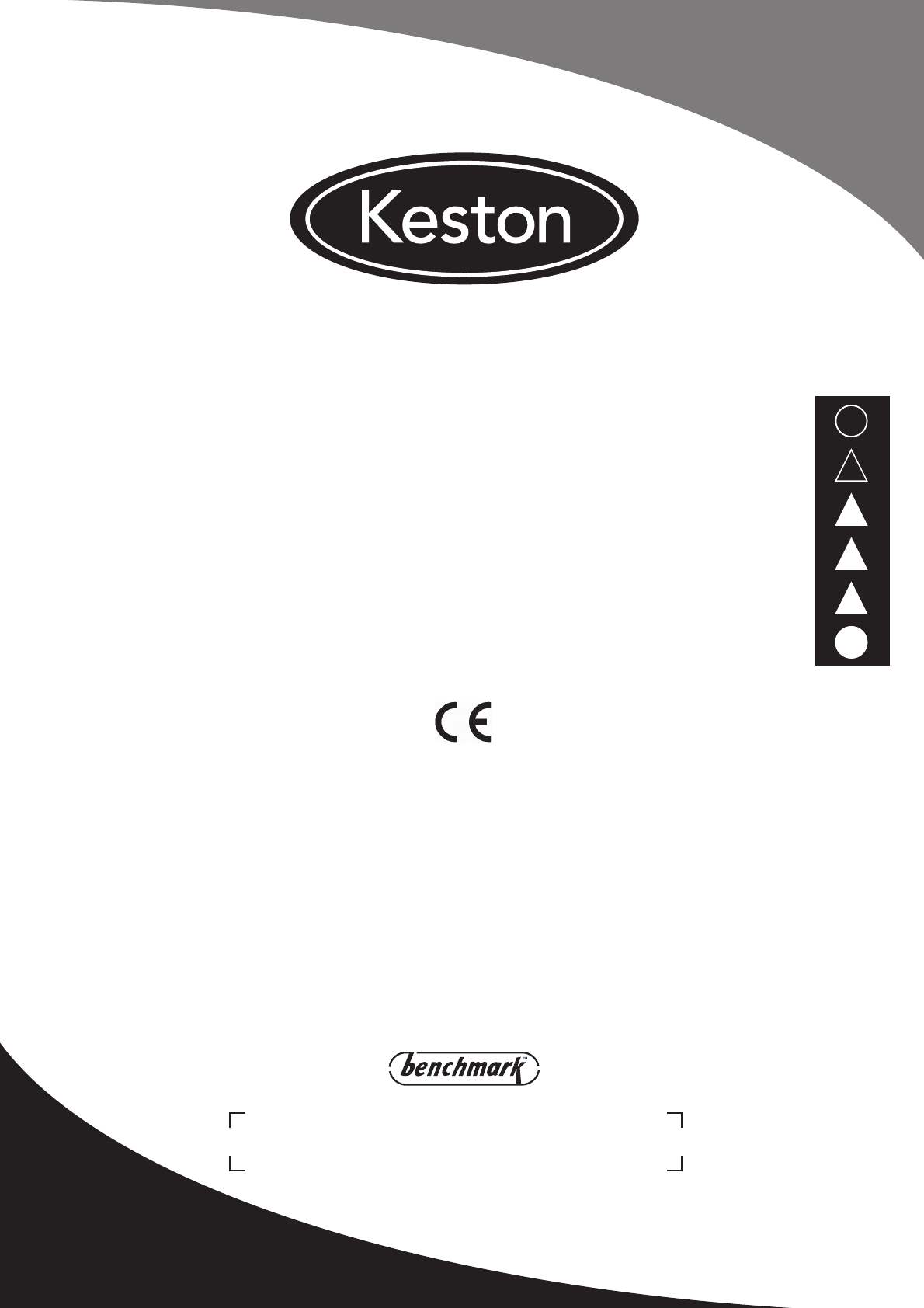
Installation and Servicing Instructions
FAN POWERED HIGH EFFICIENCY
MODULATING DOMESTIC CONDENSING
GAS COMBINATION BOILER
CE/PI No. 86-CL-38
Combi 30 - GC No. 47-930-04
Combi 35 - GC No. 47-930-05
Combi 30 & 35
These instructions must be left either with the
user or next to the site gas meter.
Keston Heating
PO Box 103, National Avenue, Kingston Upon Hull, HU5 4JN
Tel. +44 (0) 1482 443005 Fax. +44 (0) 1482 467133
email : info@keston.co.uk web : www.keston.co.uk
COMPLIANT WITH BUILDING REGULATION PART L1 & L2
SEDBUK A RATED
2
Keston Combi - Installation and Servicing
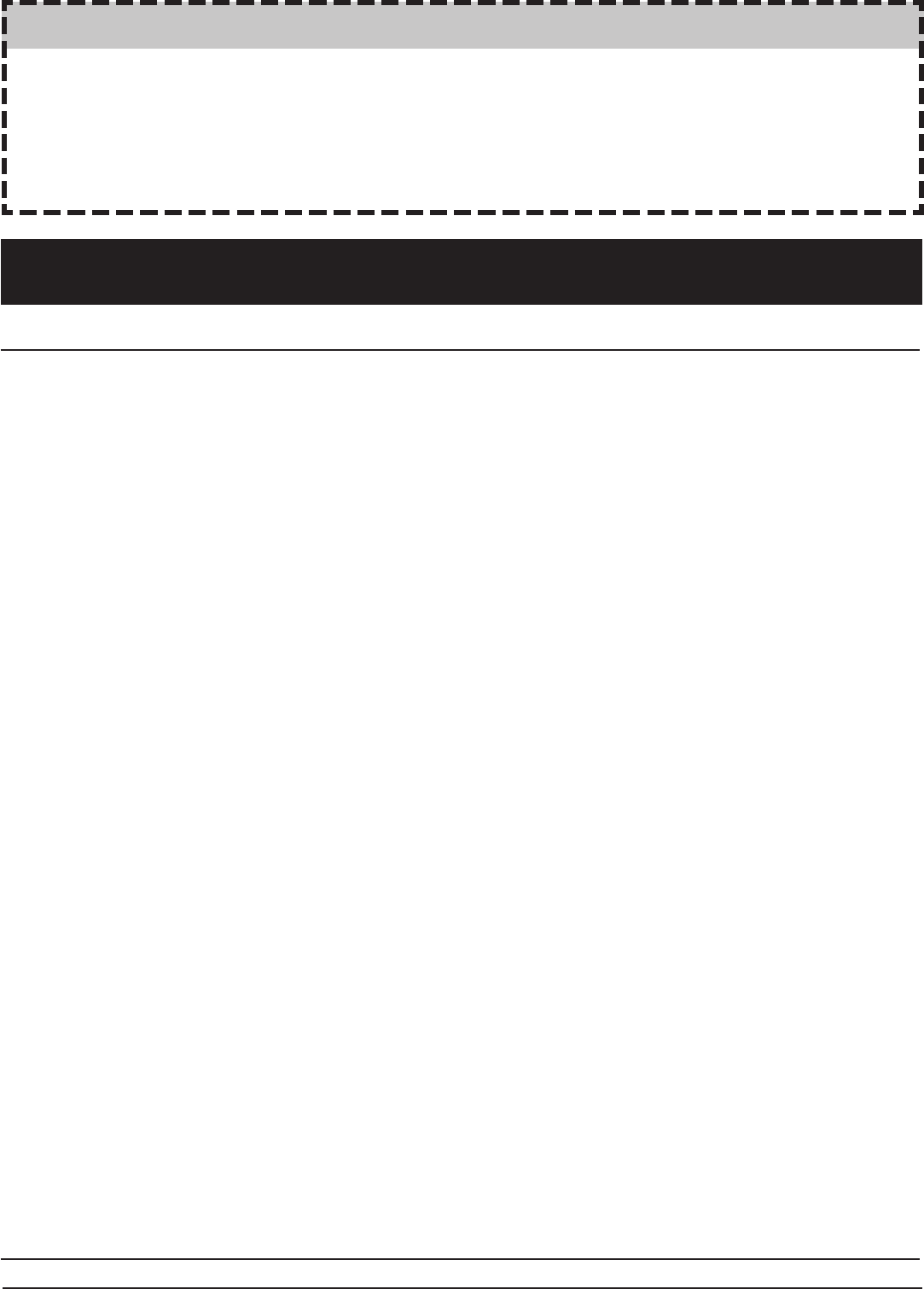
3Keston Combi - Installation and Servicing
Relevant Installation changes implemented in this book from Mod Level ..... A02 (Oct 12) and A03 (Feb 14)
DOCUMENT AMENDMENTS
Keston reserve the right to vary specication without notice
FOR ANY TECHNICAL QUERIES PLEASE RING THE KESTON
INSTALLER/TECHNICAL HELPLINE : 01482 443005
NOTE. BOILER RESET PROCEDURE -
To reset boiler, turn mode knob to reset position and immediately turn knob back to required setting.
The boiler will repeat the ignition sequence if a heat demand is present.
NOTES FOR THE INSTALLER
Page 11
Water Treatment - Addition of Adey Professional Heating Solutions
Page 31
Item “3” added to Electrical Installation
Statement added ref to commissioning process of combustion
Page 67
New Page Added - Benchmark Commissiong & Servicing Section
Page 68 & 69
New updated Commissioning Checklist & Service Record Sheets
Page 70 & 71
New pages added, Flowchart for CO Level and Combustion Ratio Check on Commissioning a Condensing Boiler
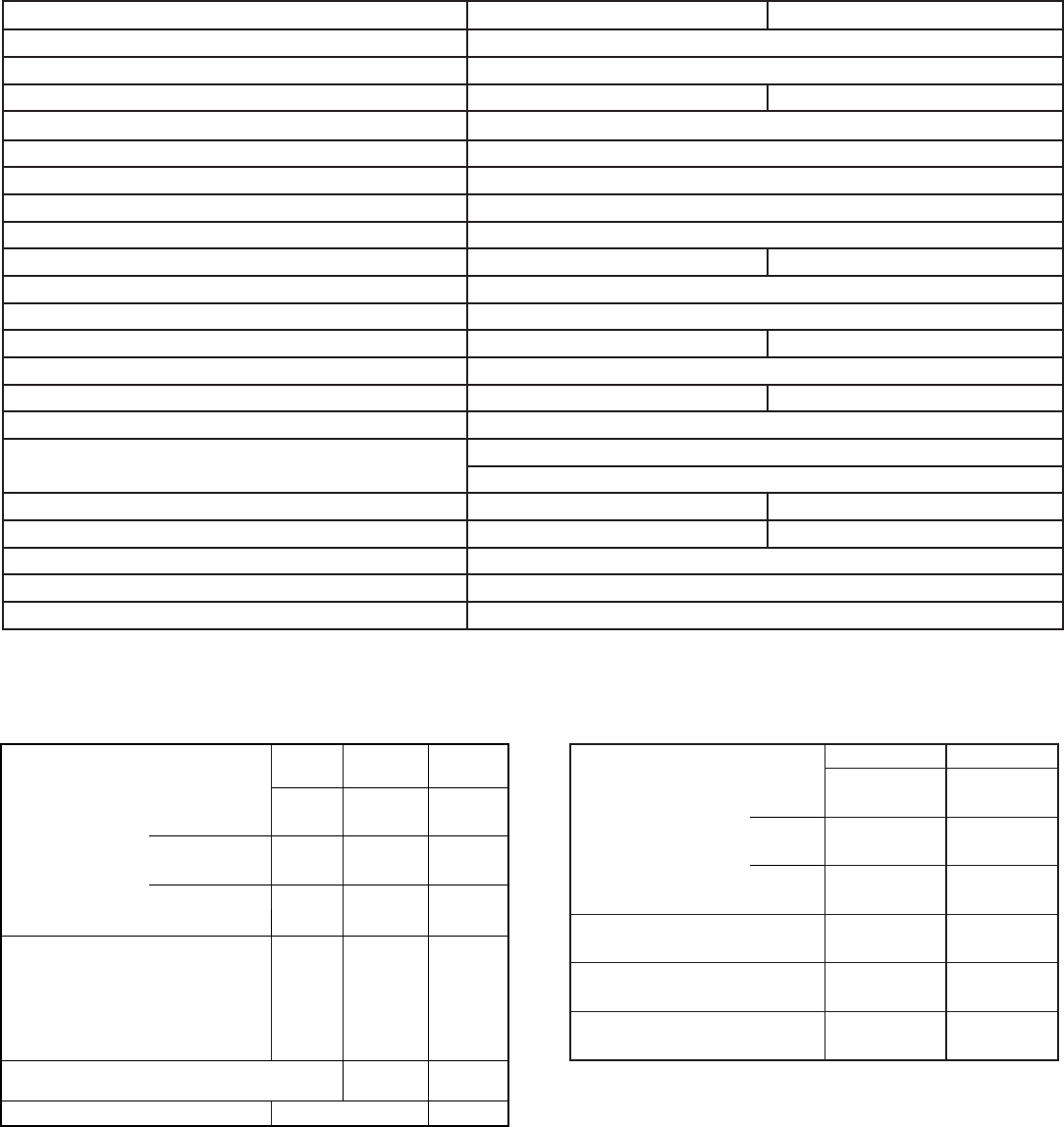
4
Keston Combi - Installation and Servicing
general
Table 1 - General Data
Note. Gas consumption is calculated using a
caloric value of 38.7 MJ/m3 (1038 Btu/ft3) gross
or 34.9 MJ/m3 (935 Btu/ft3) nett
To obtain the gas consumption at a different
caloric value:
a. For l/s - divide the gross heat input
(kW) by the gross C.V. of the gas (MJ/m3)
b. For ft3/h - divide the gross heat input (Btu/h)
by the gross C.V. of the gas (Btu/ft3)
c. For m3/h - multiply l/s by 3.6.
Key to symbols
PMS = Maximum operating pressure of water
C13 C53 = A room sealed appliance designed for connection via ducts to
a horizontal terminal, which admits fresh air to the burner and
discharges the products of combustion to the outside. The fan is
up stream of the combustion chamber.
I2H = An appliance designed for use on 2nd Family gas, Group H only.
* The value is used in the UK Government’s Standard Assessment Procedure (SAP) for energy rating of dwellings. The test data from
which it has been calculated have been certied by a notied body.
*Required for maximum ow rate. Boiler operates down to 2 l/min DHW delivery
** In areas of low water pressure the DHW restrictor can be removed
Keston Combi 30 35
Gas supply 2H - G20 - 20mbar
Gas Supply Connection 15mm copper compression
Injector Size (mm) 4.65 4.9
Inlet Connection DHW 15mm copper compression
Outlet Connection DHW 15mm copper compression
Flow Connection CH 22mm copper compression
Return Connection CH 22mm copper compression
Flue Terminal Diameter mm (in) 50 (nominal)
Average Flue Temp-Mass Flow Rate (DHW) 68oC - 13g/s 73ºC - 15g/s
Maximum Working Pressure (Sealed Systems) bar (lb/in2) 2.5 (36.3)
Maximum Domestic Hot Water Inlet Pressure bar (lb/in2) 10.0 (145)
Minimum Domestic Hot Water Inlet Pressure* bar (lb/in2) 1.3 (18.9) 1.3 (18.9)**
Electrical Supply 230 V ~ 50 Hz.
Power Consumption W 152 177
Fuse Rating External : 3A Internal : T4H HRC L250 V
Water content CH litre (gal) 1.2 (0.26)
DHW litre (gal) 0.5 (0.11)
Packaged Weight kg (lb) 37.8 (83.3) 38 (83.8)
Maximum Installation Weight kg (lb) 32.8 (72.3) 33 (72.8)
Boiler Casing Size Height mm (in) 700 (27.5)
Width mm (in) 395 (15.5)
Depth mm (in) 278 (11)
Table 2 - Performance Data - Central Heating Table 3 - Performance Data - Domestic Hot Water
Boiler Input : Max. Min. 30 Min. 35
Boiler Input ‘Q’ Nett CV kW 24.3 6.1 7.1
(Btu/h) (82,900) (20,700) (24,100)
Gross CV kW 27.0 6.7 7.9
(Btu/h) (92,000) (23,000) (26,900)
Gas Consumption m3/h 2.512 0.623 0.734
(ft3/h) (89) (22) (25.9)
Boiler Output :
Non Condensing kW 24.2 6.1 7.1
70oC Mean Water temp. (Btu/h) (82,600) (20,700) (24,100)
Condensing kW 25.6 6.4 7.5
40oC Mean Water temp. (Btu/h) (87,400) (21,800) (25,500)
Seasonal efciency* SEDBUK 2005
SEDBUK 2009
91.1%
89%
91%
88.9%
NOx Classication CLASS 5
Maximum DHW Input : 30 35
Nett CV kW 30.4 35.4
(Btu/h) (103,600) (120,900)
Gross CV kW 33.7 39.3
(Btu/h) (115,000) (134,200)
Gas Consumption m3/h 3.135 3.658
(ft3/h) (111) (129)
Maximum kW 30.3 35.3
DHW Output (Btu/h) (103,300) (120,500)
DHW Flow Rate l/min 12.4 14.5
at 35°C temp. rise. (gpm) (2.8) (3.2)
DHW Specic Rate l/min 14.5 16.9
(gpm) (3.2) (3.7)
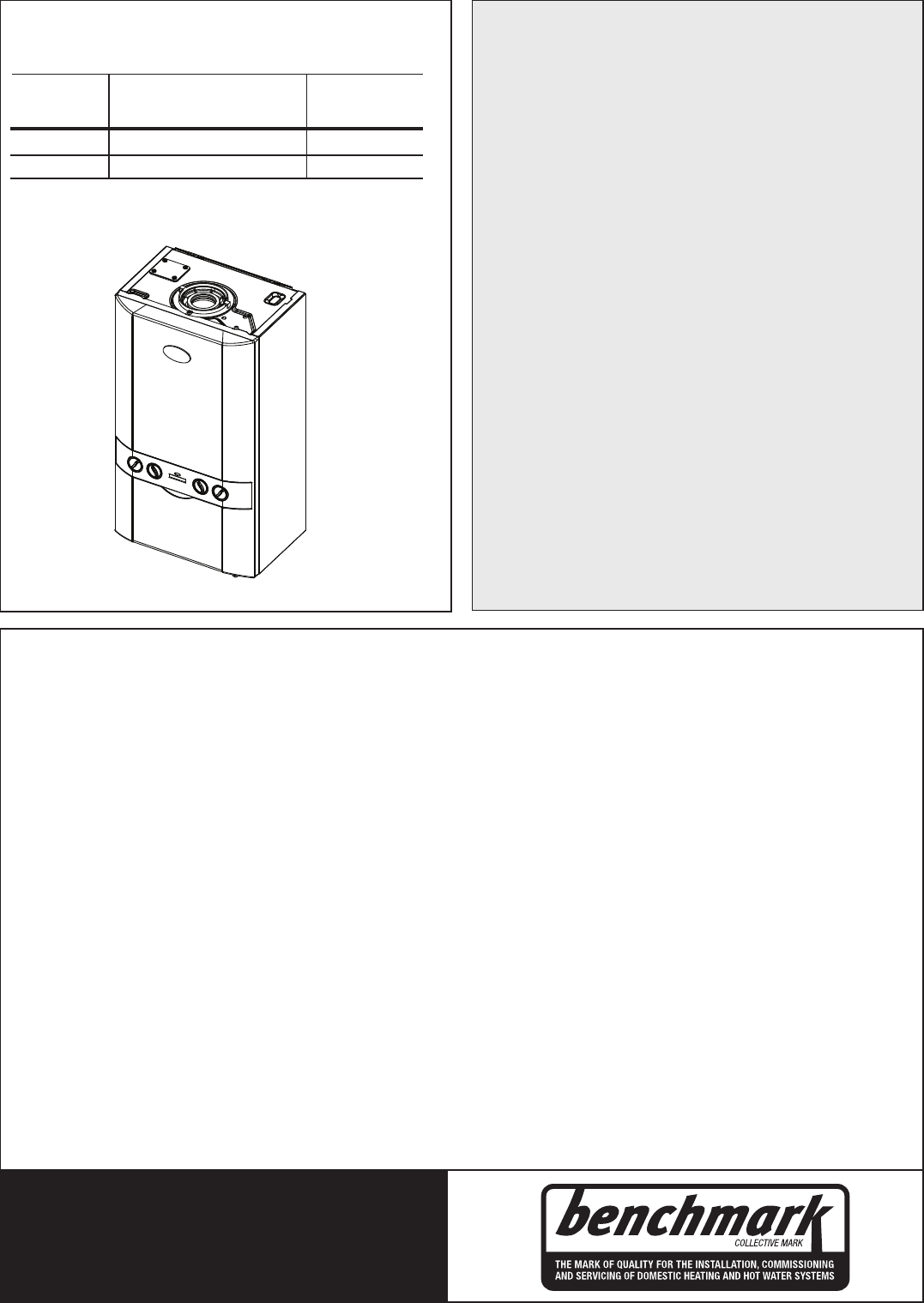
5Keston Combi - Installation and Servicing
general
Boiler size G.C. Appliance No. PI No.
(Benchmark No.)
30 47-930-04 86 CL 38
35 47-930-05 86 CL 38
CONTENTS
Benchmark Commissioning Checklist ..................... 66
Boiler Clearances ......................................................... 9
Boiler Exploded Diagram ........................................... 12
Condensate Drain .......................................... 8,22,23,39
Electrical Connections ............................................... 25
Electrical Supply ........................................................... 8
Fault Finding .......................................................... 57-63
Flue System ........................................................... 14-17
Gas Safety Regulations ............................................... 7
Gas Supply .................................................................... 8
Installation .............................................................. 12-36
Pump ........................................................................... 50
Safe Handling ................................................................ 6
Servicing ................................................................ 37-56
Short List of Parts ...................................................... 64
Thermostatic Radiator Valves ..................................... 8
Water and Systems .......................................... 8, 10-11
Water Connections ..................................................... 24
Water Treatment .........................................................11
Wiring Diagram ........................................................... 30
Natural Gas only
Boiler Page
Make and model ......................................................... 5
Appliance serial no. on data badge .......... Front Cover
SEDBUK No. % .......................................................... 4
Controls
Time and temperature control to heating ................. 26
Time and temperature control to hot water ............. 26
Heating zone valves ................................................ n/a
TRV’s.......................................................................... 8
Auto bypass ............................................................... 8
Boiler interlock ............................................................ 8
For .................................................................... all boilers
Flushing to BS.7593 ................................................. 11
Inhibitor .................................................................... 11
Central heating mode
Heat input ...................................................to be calculated
For assistance see Technical Helpline on the back page
Page
Burner operating pressure ...................................... n/a
Central heating ow temp. ...........measure and record
Central heating return temp. ........measure and record
For combination boilers only
Scale reducer ........................................................... 11
Hot water mode
Heat input ............................................ to be calculated
Max. operating burner pressure .............................. n/a
Max. operating water pressure ........ measure & record
Cold water inlet temp ...................... measure & record
Hot water outlet temp. ..................... measure & record
Water ow rate at max. setting ........ measure & record
For condensing boilers only
Condensate drain ..................................................... 22
For all boilers: complete, sign & hand over to customer
For GB, to comply with Building Regulations Part L1 (Part 6 in Scotland) the boiler should be tted in accordance with the
manufacturer’s instructions. Self-certication that the boiler has been installed to comply with Building Regulations can be
demonstrated by completing and signing the Benchmark Commissioning Checklist.
Before installing this boiler, read the Code of Practice sheet at the rear of this book.
BENCHMARK COMMISSIONING CHECKLIST DETAILS
NOTE TO THE INSTALLER:
COMPLETE
THE BENCHMARK COMMISSIONING
CHECKLIST AND LEAVE THESE
INSTRUCTIONS WITH APPLIANCE
KESTON Combi 30 & 35

6
Keston Combi - Installation and Servicing
general
INTRODUCTION
The Keston Combi boiler is a wall mounted, full sequence,
automatic spark ignition, low water content, fanned ue, high
efciency, condensing, combination gas boiler.
Note. Due to the high efciency of the boiler a plume of water
vapour will form at the terminal during operation.
Central heating (CH) output is fully modulating with a range of:
30 6.1 to 24.2kW (20,700 to 82,600 Btu/h)
35 7.1 to 24.2kW (24,100 to 82,600 Btu/h)
Instantaneous domestic hot water (DHW) output is also fully
modulating with a maximum of :
30 30.3kW (103,300 Btu/h)
35 35.3kW (120,500 Btu/h)
The boiler is supplied fully assembled with DHW plate heat
exchanger, diverter valve, circulating pump, pressure gauge,
safety valve and CH expansion vessel.
Variable CH and DHW temperature controls are tted on the user
control and the boiler features a DHW preheat facility.
The boiler includes as standard:
- Automatic bypass
- Boiler frost protection
- Daily pump and diverter valve exercise.
- Weather Compensation Kit
The boiler casing is of white painted mild steel.
The boiler temperature controls are visible located in the control
panel on the front of the boiler.
The heat exchanger is manufactured from cast aluminium.
The boiler is suitable for connection to fully pumped, sealed
heating systems ONLY. Adequate arrangements for completely
draining the system by provision of drain cocks MUST be provided
in the installation pipework.
Pipework from the boiler is routed downwards.
OPERATION
With no demand for CH, the boiler res only when DHW is drawn
off, or periodically for a few seconds without any DHW draw-off, in
order to maintain the DHW calorier in a heated condition. This
only occurs if pre-heat knob is in the ‘ON’ period.
When there is a demand for CH, the heating system is supplied at
the selected temperature of between 45oC and 83oC, until DHW
is drawn off. The full output from the boiler is then directed via
the diverter valve to the plate heat exchanger to supply a nominal
DHW draw-off of:
30 12.4 l/min at 35 oC temperature rise.
35 14.5 l/min at 35 oC temperature rise.
When using the outside sensor provided please refer to page 27.
The DHW draw off rate specied above is the nominal that the
boiler ow regulator will give. Due to system variations and
seasonal temperature uctuations DHW ow rates/temperature
rise will vary, requiring adjustment at the draw off tap.
At low DHW draw-off rate the maximum temperature is limited to
64 oC by the modulating gas control.
The boiler features a comprehensive diagnostic system which
gives detailed information on the boiler status when operating,
and performance of key components to aid commissioning and
fault nding.
SAFE HANDLING
This boiler may require 2 or more operatives to move it to its
installation site, remove it from its packaging base and during
movement into its installation location. Manoeuvring the boiler
may include the use of a sack truck and involve lifting, pushing and
pulling.
Caution should be exercised during these operations.
Operatives should be knowledgeable in handling techniques when
performing these tasks and the following precautions should be
considered:
• Grip the boiler at the base.
• Be physically capable.
• Use personal protective equipment as appropriate, e.g. gloves,
safety footwear.
During all manoeuvres and handling actions, every attempt should
be made to ensure the following unless unavoidable and/or the
weight is light.
• Keep back straight.
• Avoid twisting at the waist.
• Avoid upper body/top heavy bending.
• Always grip with the palm of the hand.
• Use designated hand holds.
• Keep load as close to the body as possible.
• Always use assistance if required.
OPTIONAL EXTRA KITS
• Electronic Timer (7 day) kit
• Electronic Programmable Room Thermostat kit
• Stand Off kit
• AirTerminalFinishingKit
• FlueSleeveKit
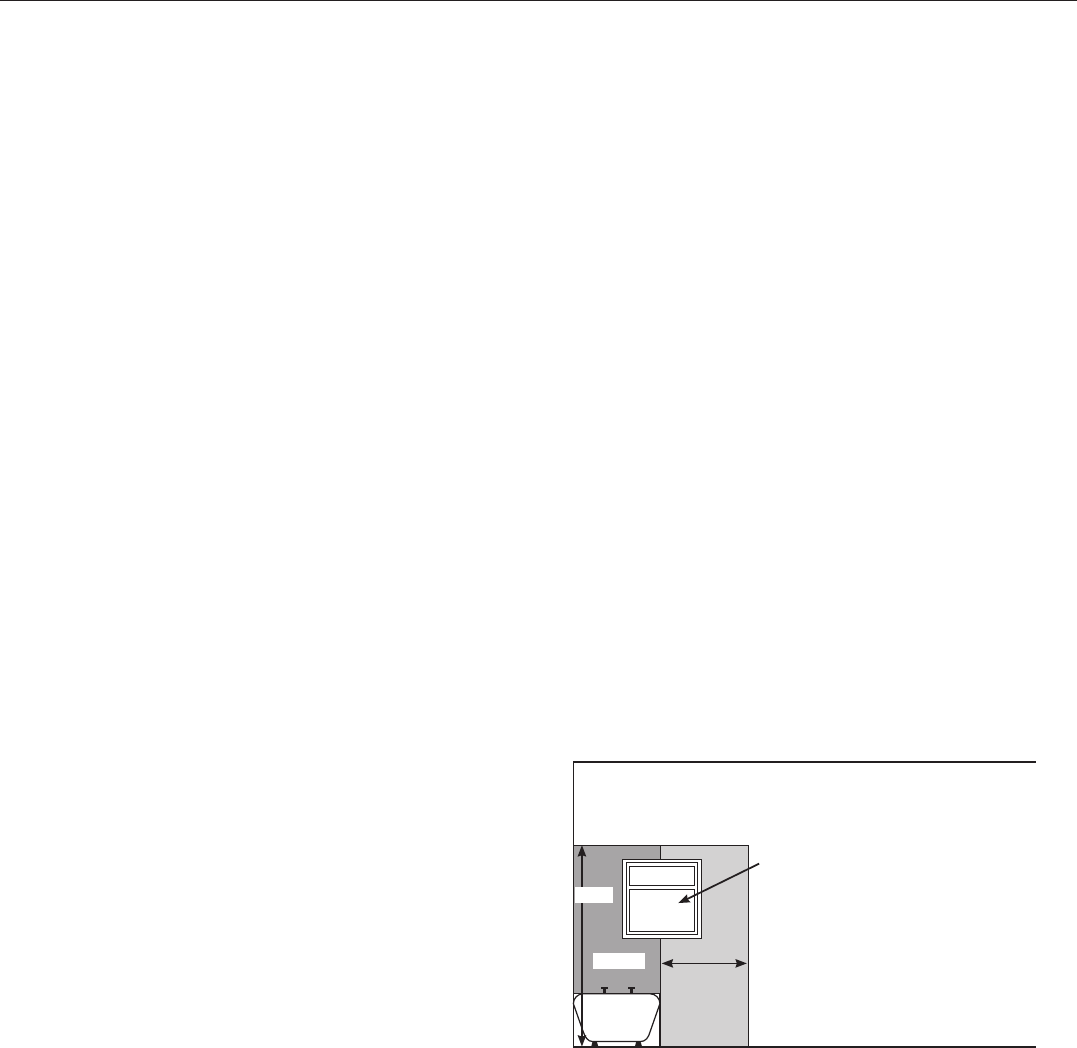
7Keston Combi - Installation and Servicing
general
SAFETY
Current Gas Safety (installation and use) regulations or rules
in force:
The appliance is suitable only for installation in GB and IE and
should be installed in accordance with the rules in force.
In GB, the installation must be carried out by a Gas Safe
Registered Engineer. It must be carried out in accordance with
the relevant requirements of the:
• Gas Safety (Installation and Use) Regulations
• The appropriate Building Regulations either The Building
Regulations, The Building Regulations (Scotland), Building
Regulations (Northern Ireland).
• The Water Fittings Regulations or Water byelaws in Scotland.
• The Current I.E.E. Wiring Regulations.
Where no specic instructions are given, reference should be
made to the relevant British Standard Code of Practice.
In IE, the installation must be carried out by a Registered Gas
Installer (RGII) and installed in accordance with the current edition
of I.S.813 “Domestic Gas Installations”, the current Building
Regulations and reference should be made to the current ETCI
rules for electrical installation.
Detailed recommendations are contained in the following British
Standard Codes of Practice:
BS. 5440:1 Flues (for gas appliances of rated input not
exceeding 70 kW).
BS. 5440:2 Ventilation (for gas appliances of rated input not
exceeding 70 kW).
BSEN. 12828:2003 Heating Systems in buildings: Design for
water based heating systems.
BSEN 12831:2003 Heating Systems in buildings: Method for
calculation of the design heat load.
BSEN 14336:2004 Heating Systems in buildings: Installation
and commissioning of water based heating
systems.
BS. 5546 Installation of gas hot water supplies for domestic
purposes (2nd Family Gases)
BS. 6798 Installation of gas red hot water boilers of rated
input not exceeding 70 kW.
BS. 6891 Low pressure installation pipes.
Health & Safety Document No. 635.
The Electricity at Work Regulations, 1989.
The manufacturer’s notes must NOT be taken, in any way, as
overriding statutory obligations.
IMPORTANT. These appliances are CE certicated for safety
and performance. It is, therefore, important that no external
control devices, e.g. ue dampers, economisers etc., are
directly connected to these appliances unless covered by
these Installation and Servicing Instructions or as otherwise
recommended by Keston in writing. If in doubt please enquire.
Any direct connection of a control device not approved by Keston
could invalidate the certication and the normal appliance
warranty. It could also infringe the Gas Safety Regulations and
the above regulations.
SAFE HANDLING OF SUBSTANCES
No asbestos, mercury or CFCs are included in any part of the
boiler or its manufacture.
LOCATION OF BOILER
The boiler must be installed on a at and vertical internal wall,
capable of adequately supporting the weight of the boiler and any
ancillary equipment.
The boiler may be tted on a combustible wall and insulation
between the wall and the boiler is not necessary, unless required
by the local authority.
For electrical safety reasons there must be no access available
from the back of the boiler.
The boiler must not be tted outside.
Timber Framed Buildings
If the boiler is to be tted in a timber framed building it should be
tted in accordance with the Institute of Gas Engineering document
IGE/UP/7:2006 Edition 2.
Bathroom Installations
This appliance is rated IP20.
The boiler may be installed in any room or internal space, although
particular attention is drawn to the requirements of the current
IEE (BS.7671) Wiring Regulations and the electrical provisions
of the building regulations applicable in Scotland, with respect to
the installation of the boiler in a room or internal space containing
a bath or shower. For IE reference should be made to the current
ETCI rules for electrical installations and I.S. 813:2002.
If the appliance is to be installed in a room containing a bath or
shower then, providing water jets are not going to be used for
cleaning purposes (as in communal baths/showers), the appliance
must be installed beyond Zone 2, as detailed in BS.7671.
0.6m
Zone 0
Recessed
window
Zone 2
Ceiling
3G8913a
2.25m
Zone 1
Compartment Installations
A compartment used to enclose the boiler should be designed and
constructed specially for this purpose.
An existing cupboard or compartment may be used, provided that
it is modied for the purpose.
In both cases, details of essential features of cupboard /
compartment design, including airing cupboard installation, are to
conform to the following:
• BS 6798 (No cupboard ventilation is required - see ‘Air Supply’
for details).
• The position selected for installation MUST allow adequate
space for servicing in front of the boiler.
• For the minimum clearances required for safety and
subsequent service, see the wall mounting template and
Frame 1. In addition, sufcient space may be required to
allow lifting access to the wall mounting plate.
• The boiler must be installed on a re resistant surface.
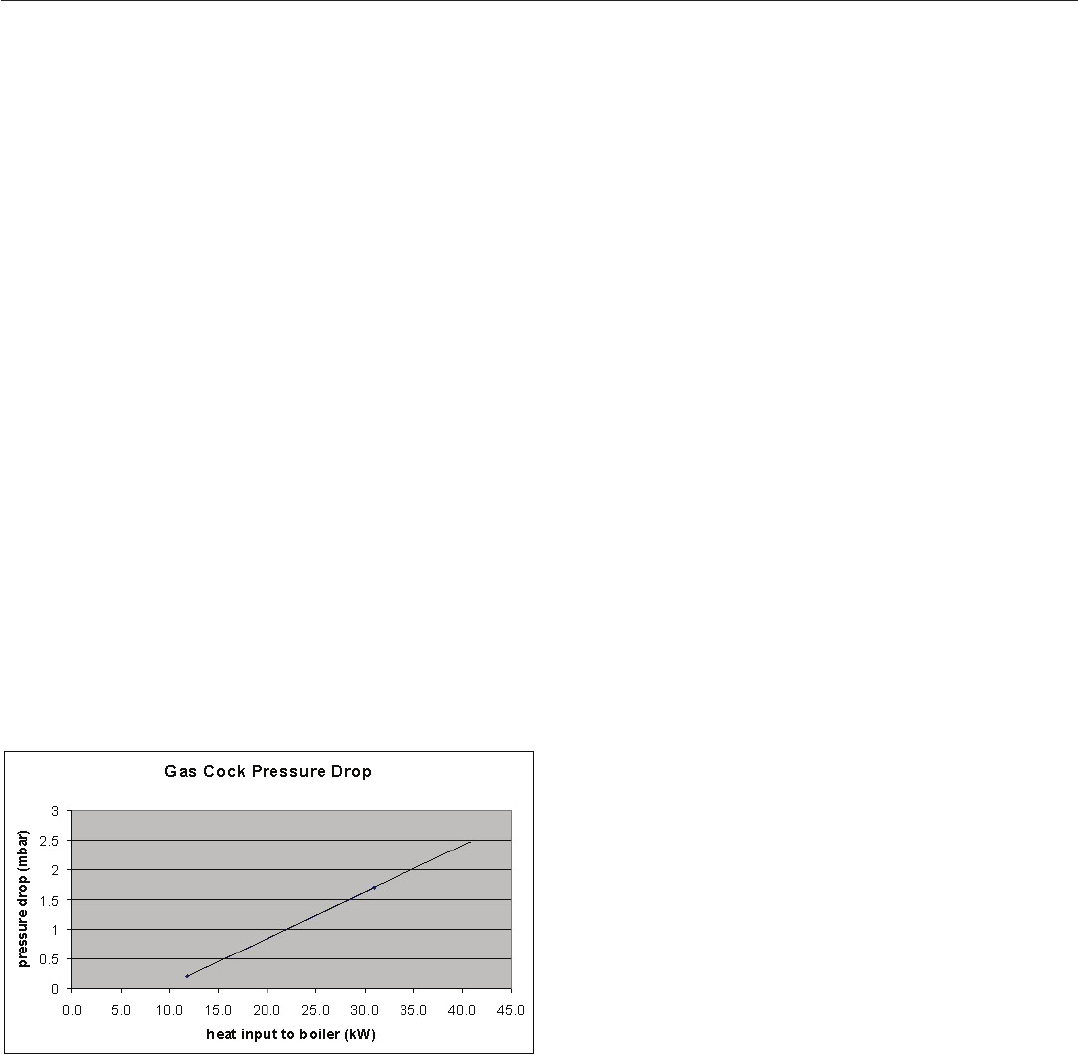
8
Keston Combi - Installation and Servicing
general
GAS SUPPLY
The local gas supplier should be consulted, at the installation
planning stage, in order to establish the availability of an adequate
supply of gas. An existing service pipe must NOT be used without
prior consultation with the local gas supplier.
The boiler MUST be installed on a gas supply with a governed
meter only.
A gas meter can only be connected by the local gas supplier or
by a Gas Safe Registered Engineer. In IE by a Registered Gas
Installer (RGII).
An existing meter should be checked, preferably by the gas
supplier, to ensure that the meter is adequate to deal with the rate
of gas supply required.
It is the responsibility of the Gas Installer to size the gas
installation pipework in accordance with BS6891:2005. Whilst the
principle of the 1:1 gas valve ensures the Keston Combi range
is able to deliver its full output at inlet pressures as low as 14mb,
other gas appliances in the property may not be as tolerant.
When operating pressures are found to be below the minimum
meter outlet of 19mb these should be checked to ensure this is
adequate for correct and safe operation.
Allowing for the acceptable pressure loss of 1mb across the
installation pipework, it can be assumed that a minimum permitted
operating pressure of 18mb will be delivered to the inlet of
the appliance. (Reference BS 6400-1 Clause 6.2 Pressure
Absorption).
The external gas cock could further reduce the operating pressure
when measured at its test point. The pressure drop is relative to
the heat input to the boiler (kW), refer to graph below.
IMPORTANT.
Installation pipes must be tted in accordance with BS.6891. In IE
refer to IS.813:2002.
The complete installation MUST be tested for gas tightness and
purged as described in the above code.
WATER CIRCULATION SYSTEM
IMPORTANT.
A minimum length of 1 metre of copper pipe MUST be tted
to both ow and return connections from the boiler before
connection to any plastic piping.
The central heating system should be in accordance with BS.6798
and, in addition, for smallbore and microbore systems, BS.5449.
WATER TREATMENT - see Frame 5
BOILER CONTROL INTERLOCKS
Central heating systems controls should be installed to ensure
the boiler is switched off when there is no demand for heating, in
compliance with Building Regulations.
Heating systems utilising full thermostatic radiator valve control
of temperature in individual rooms should also be tted with a
room thermostat controlling the temperature in a space served by
radiators not tted with such a valve.
When thermostatic radiator valves are used, the space heating
temperature control over a living / dining area or hallway having
a heating requirement of at least 10% of the minimum boiler heat
output should be achieved using a room thermostat, whilst other
rooms are individually controlled by thermostatic radiator valves.
However, if the system employs thermostatic radiator valves on all
radiators, or two port valves, then a bypass circuit must be tted
with an automatic bypass valve to ensure a ow of water should
all valves be in the closed position.
ELECTRICAL SUPPLY
WARNING.
This appliance must be earthed.
Wiring external to the appliance MUST be in accordance with
the current I.E.E. (BS.7671) Wiring Regulations and any local
regulations which apply. For IE reference should be made to the
current ETCI rules for electrical installations.
The mains supply to the boiler and system wiring centre shall
be through one common fused double pole isolator and for
new heating systems, and where practical replacement boiler
installations, the isolator shall be situated adjacent to the
appliance.
CONDENSATE DRAIN
Refer to Frames 20 & 21
A condensate drain is provided on the boiler. This drain must be
connected to a drainage point on site. All pipework and ttings in
the condensate drainage system MUST be made of plastic - no
other materials may be used.
IMPORTANT.
Any external runs must be in accordance with BS 6798.
The drain outlet on the boiler is sized for standard 21.5mm (3/4”)
overow pipe. It is a universal tting to allow use of different
brands of pipework.
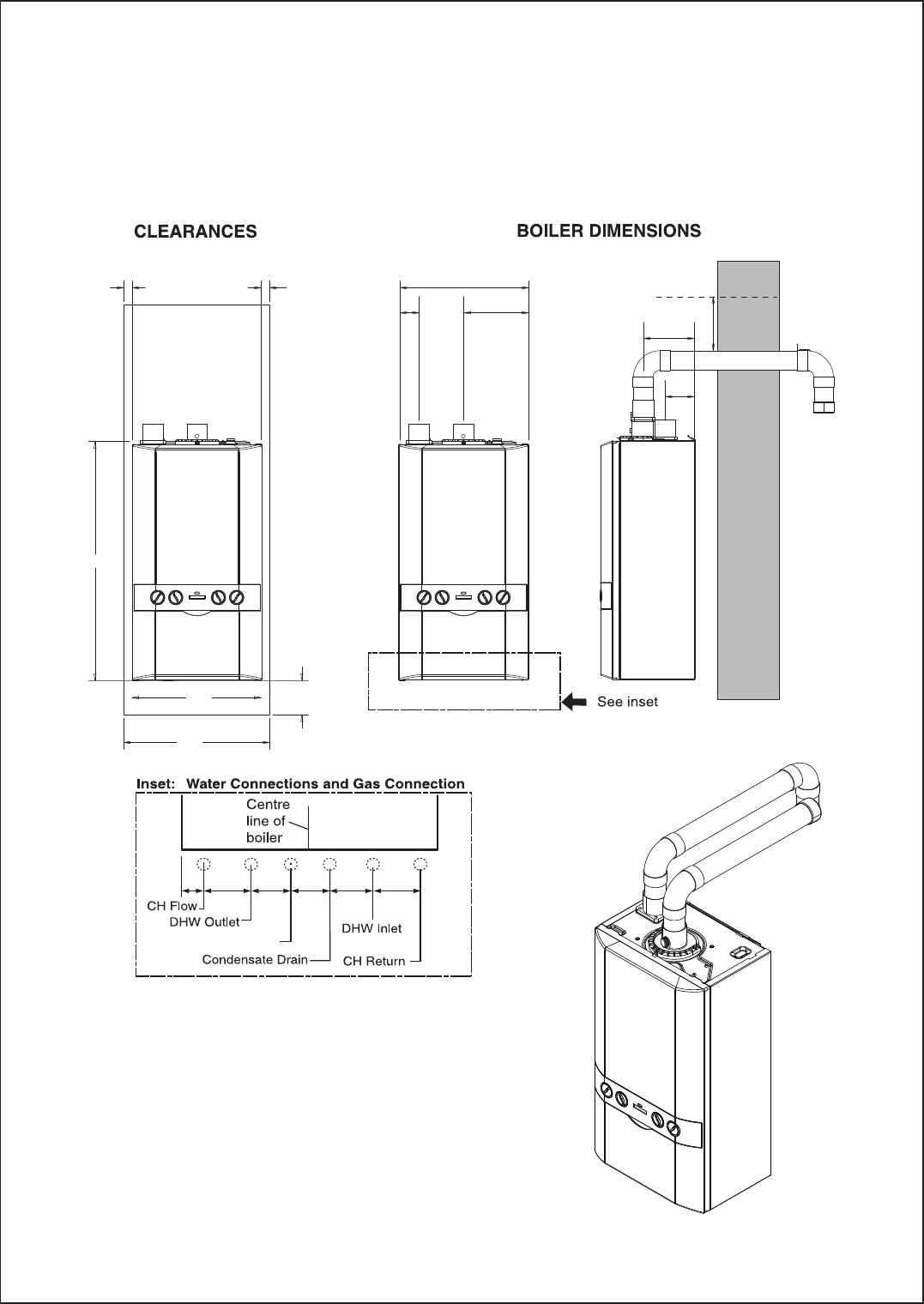
9Keston Combi - Installation and Servicing
general
1
BOILER DIMENSIONS, SERVICES & CLEARANCES all dimensions in mm
The boiler connections are made on the boiler connection tails.
Refer to Frame 22.
The following minimum clearances must be maintained for
operation and servicing.
Additional space will be required for installation, depending upon
site conditions.
Front clearance
The minimum front clearance when built in to a cupboard is 5mm
from the cupboard door but 450mm overall clearance is still
required, with the cupboard door open, to allow for servicing.
* Bottom clearance
Bottom clearance after installation can be reduced to 5mm.
This must be obtained with an easily removable panel, to enable
the consumer to view the system pressure gauge, and to provide
the 100mm clearance required for servicing.
395
198
89
155
62
30mm
Minimum Top Clearance
100395
400
700
FlueAir
2.5
2.5
from case
*
43 65 57 38
Gas Inlet
39 65
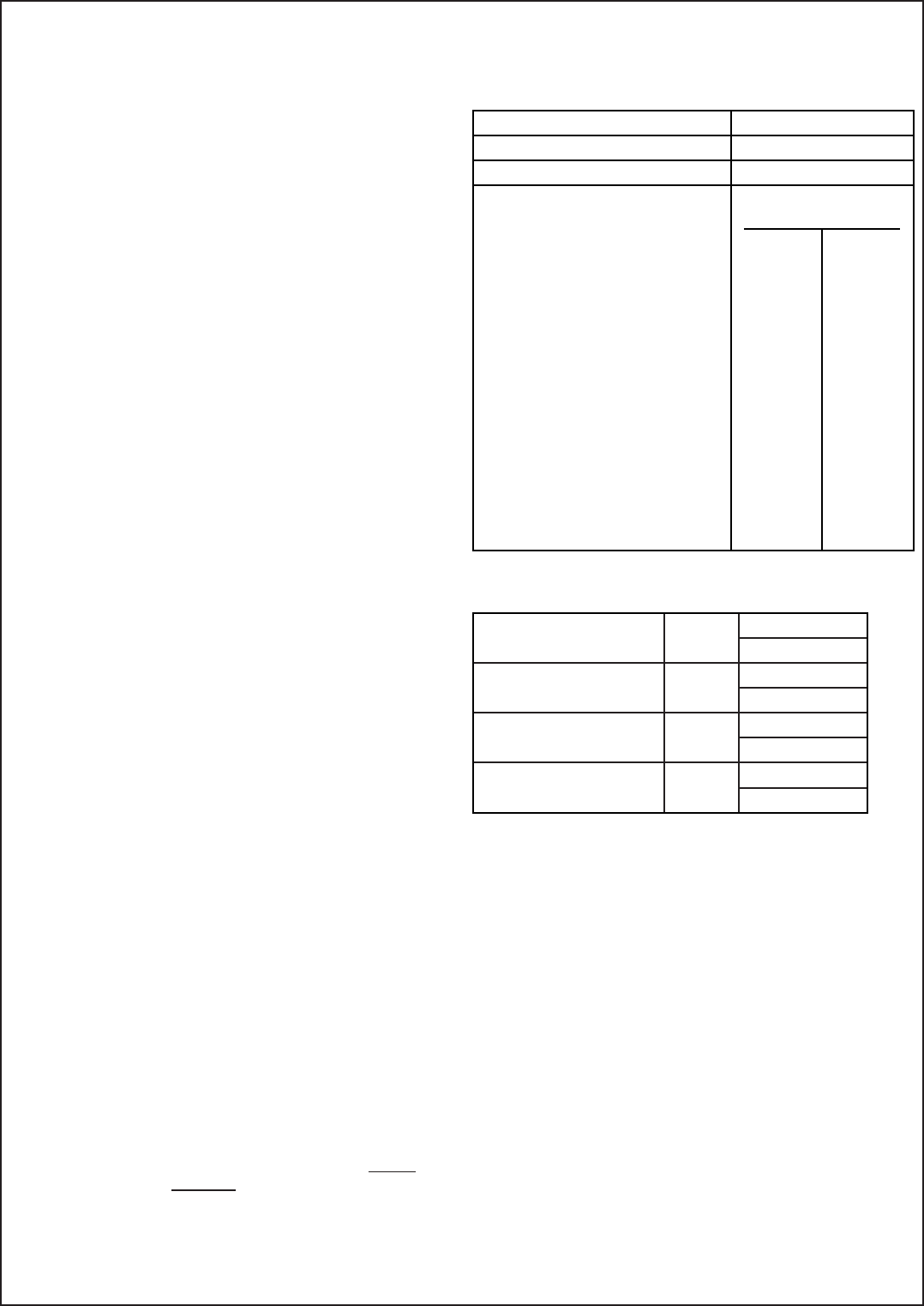
10
Keston Combi - Installation and Servicing
general
General
1. The installation must comply with all relevant national and local
regulations.
2. The installation should be designed to work with flow
temperatures of up to 86 oC.
3. All components of the system must be suitable for a working
pressure of 3 bar and temperature of 110 oC. Extra care should
be taken in making all connections so that the risk of leakage is
minimised.
The following components are incorporated within the appliance:
a. Circulating pump.
b. Safety valve, with a non-adjustable preset lift pressure of 3
bar.
c. Pressure gauge, covering a range of 0 to 4 bar.
d. An 8-litre expansion vessel, with an initial charge pressure
of 0.75 bar.
4. ‘Make-up’ Water. Provision must be made for replacing water
loss from the system, either :
a. From a manually lled ‘make-up’ vessel with a readily visible
water level. The vessel should be mounted at least 150mm
above the highest point of the system and be connected
through a non-return valve to the system, tted at least
150mm below the ‘make-up’ vessel on the return side of
the radiators. or
b. Where access to a ‘make-up’ vessel would be difcult, by
pre-pressurisation of the system.
The maximum cold water capacity of the system should
not exceed 143 litres, if not pressurized. However, if
the system is to be pressurized, the efciency of the
expansion vessel will be reduced and a larger vessel
(or smaller system volume) may be necessary. If the
capacity of the vessel is not considered sufcient for this,
or for any other reason, an additional vessel MUST be
installed on the RETURN to the boiler.
Guidance on vessel sizing is given in Table above.
Notes
a. The method of lling, relling, topping up or ushing sealed
primary hot water circuits from the mains via a temporary
hose connection is only allowed if acceptable to the local
water authority.
b. Antifreeze uid, corrosion and scale inhibitor uids suitable
for use with boilers having aluminium heat exchangers may
be used in the central heating system.
2
SYSTEM REQUIREMENTS - Central Heating
5. Filling
The system may be lled by the following method:
Where the mains pressure is excessive a pressure
reducing valve must be used to facilitate lling.
a. Thoroughly ush out the whole system with cold
water.
b. Fill and vent the system until the pressure gauge
registers 1bar and examine for leaks. Refer to Frame
22 for lling detail.
c. Check the operation of the safety valve by raising the
water pressure until the valve lifts. This should occur
within 0.3bar of the preset lift pressure.
d. Release water from the system until the
minimum system design pressure is reached;
1.0 bar if the system is to be pre-pressurised.
continued . . . . . .
Water Flow Rate and Pressure Loss
Max CH Output kW 24.2
(Btu/h) (82,600)
Water ow rate l/min 17.3
(gal/min) (3.8)
Temperature Differential oC 20
(oF) (36)
Head available for m.w.g. 3.4
system (ft.w.g.) (11.1)
Safety valve setting bar 3.0
Vessel charge pressure bar 0.5 to 0.75
System pre-charge pressure bar None 1.0
System volume
(litres)
Expansion vessel
volume (litres)
25 1.6 1.8
50 3.1 3.7
75 4.7 5.5
100 6.3 7.4
125 7.8 9.2
150 9.4 11.0
175 10.9 12.9
190 11.9 14.0
200 12.5 14.7
250 15.6 18.4
300 18.8 22.1
For other system volumes
multiply by the factor access 0.063 0.074
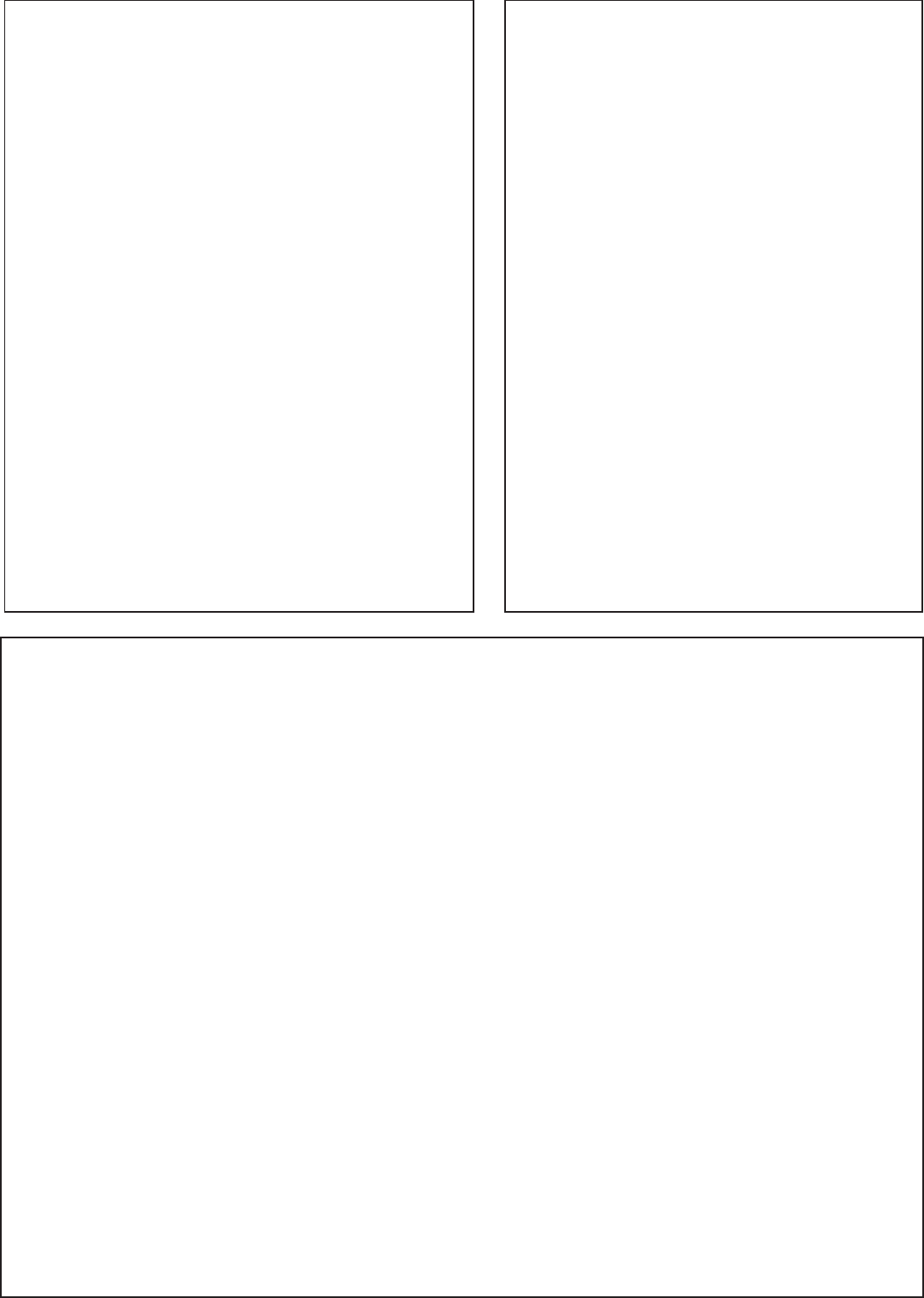
11Keston Combi - Installation and Servicing
general
The boiler does not normally need a bypass but at least
some radiators on the heating circuit, of load of at least
10% of the minimum boiler output, must be provided with
twin lockshield valves so that this minimum heating load
is always available. See note regarding thermostatic
radiator valves on page 8.
Note. Systems incorporating zone valves which could
completely cut off the ow through the system must also
include a bypass.
BALANCING
1. Set the programmer to ON.
Close the manual or thermostatic valves on all
radiators, leaving the twin lockshield valves (on the
radiators referred to above) in the OPEN position.
Turn up the room thermostat and adjust the
lockshield valve to give an uninterrupted ow through
the radiator.
These valves should now be left as set.
2. Open all manual or thermostatic radiator valves
and adjust the lockshield valves on the remaining
radiators, to give around 20oC temperature drop at
each radiator.
3. Adjust the room thermostat and programmer to
NORMAL settings.
4
SYSTEM BALANCING
3
SYSTEM REQUIREMENTS cont’d
DOMESTIC HOT WATER
1. The domestic hot water service must be in accordance with
BS 5546 and BS 6700.
2. Refer to Table 1 for minimum and maximum working
pressures. In areas of low mains water pressures the
domestic hot water regulator may be removed from the DHW
ow turbine cartridge. Refer to Frame 70. The boiler will
require the ow rate to be set to obtain a temperature rise of
35oC at the tap furthest from the boiler.
3. The boiler is suitable for connection to most types of washing
machine and dishwasher appliances.
4. When connecting to suitable showers, ensure that:
a. The cold inlet to the boiler is tted with an approved anti-
vacuum or syphon non-return valve.
b.
Hot and cold water supplies to the shower are of equal
pressure.
5. Hard Water Areas
Where the water hardness exceeds 200mg/litre, it is
recommended that a proprietary scale reducing device is
tted into the boiler cold supply within the requirements of the
local water company.
IMPORTANT
Provision MUST be made to accommodate the expansion of DHW
contained within the appliance, if a non-return valve is tted to the
DHW inlet, or a water meter with a non-return valve is installed.
Cold water rising main and pipework in exposed areas need to
be suitably lagged to prevent freezing.
5
WATER TREATMENT
CENTRAL HEATING
The Keston Combi range boiler has an ALUMINIUM alloy
heat exchanger.
IMPORTANT.
The application of any other treatment to this product
may render the guarantee of Keston Invalid.
Keston recommend Water Treatment in accordance with the
Benchmark Guidance Notes on Water Treatment in Central
Heating Systems.
If water treatment is used Keston recommend only the use
of SCALEMASTER GOLD 100, FERNOX, MBI, ADEY MC1 or
SENTINEL X100 inhibitors and associated water treatment
products, which must be used in accordance with the
manufacturers’ instructions.
Notes.
1. It is most important that the correct concentration of the
water treatment products is maintained in accordance
with the manufacturers’ instructions.
2. If the boiler is installed in an existing system any
unsuitable additives MUST be removed by thorough
cleansing. BS 7593:2006 details the steps necessary to
clean a domestic heating system.
3. In hard water areas, treatment to prevent lime scale may
be necessary - however the use of articially softened
water is NOT permitted.
4. Under no circumstances should the boiler be red
before the system has been thoroughly ushed.
DOMESTIC HOT WATER
In hard water areas where mains water can exceed 200ppm
Total Hardness (as dened by BS 7593:2006 Table 2) a scale
reducing device should be tted into the boiler cold supply within
the requirements of the local water company. The use of articially
softened water, however, is not permitted.
Keston recommend the use of Fernox Quantomat, Sentinel
Combiguard or Calmag CalPhos I scale reducing devices together
with scalemaster in-line scale inhibitor branded Ideal, which must
be used in accordance with the manufacturers’ instructions.
For further information contact:
Fernox Cookson Electronics
Forsyth Road, Sheerwater, Woking, Surrey GU21 5RZ
+44 (0) 870 601 500
Sentinel Performance Solutions
The Heath Business & Technical Park, Runcorn, Cheshire WA7 4QX
Tel: 0800 389 4670
www.sentinel-solutions.net
Scalemaster Water Treatment Products
Emerald Way, Stone, Staffordshire ST15 0SR
Tel: +44 (0) 1785 811636
Calmag Ltd.
Unit 3-6, Crown Works, Bradford Road, Sandbeds, Keighley,
West Yorkshire BD20 5LN
Tel: +44 (0) 1535 210 320
Adey Professional Heating Solutions
Gloucester Road, Cheltenham GL51 8NR
Tel: +44 (0) 1242 546700
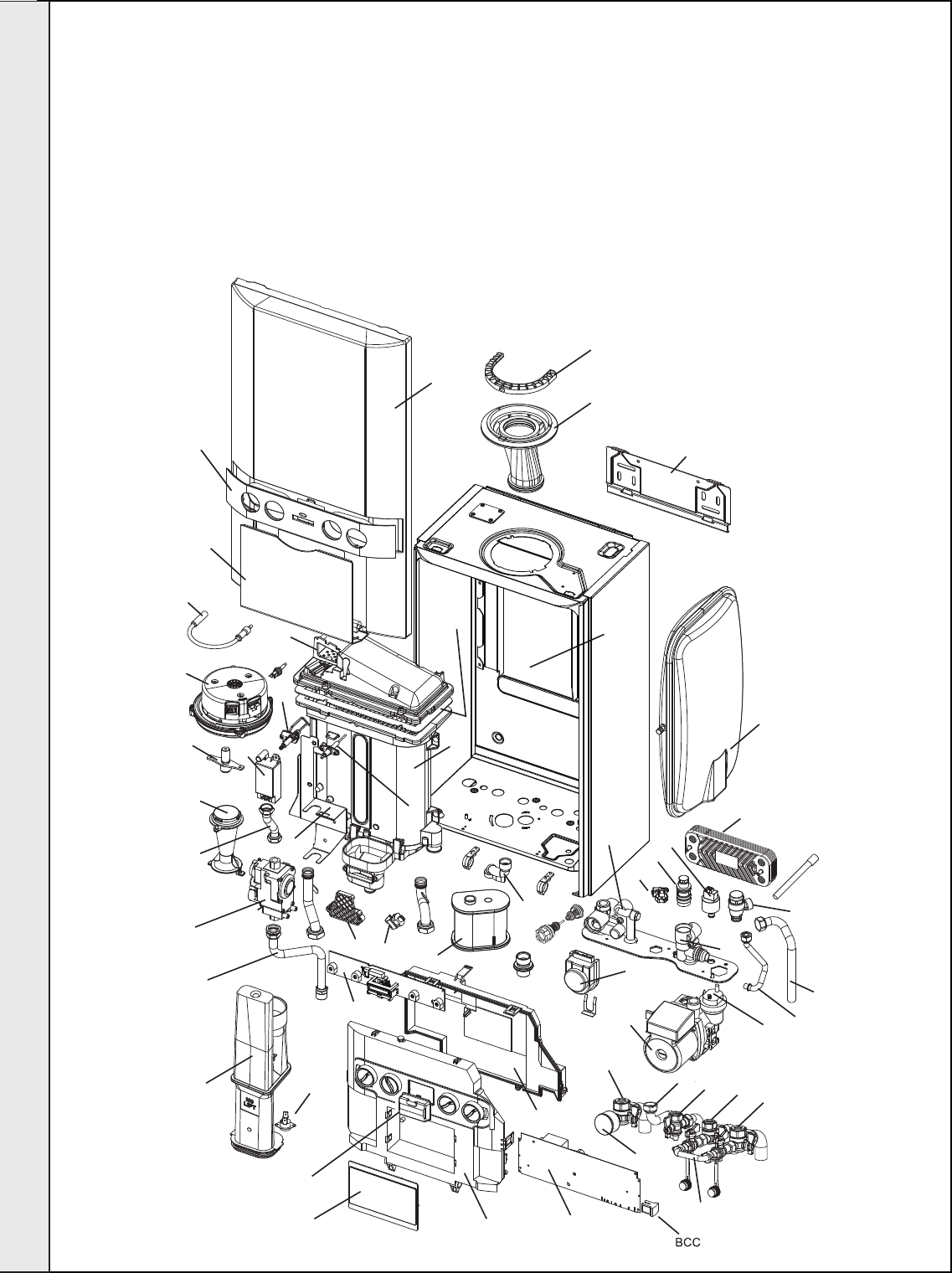
12
INSTALLATION
Keston Combi - Installation and Servicing
6
BOILER ASSEMBLY - Exploded View
227
224
503
313
504
505
512
215
217
309
306
308
211
214
206
205
204
223 332
326 325 302
*
104
110
114
113
136
121
118
507
131
128
127
120
119
117
106
203
106
107
135
105
111
231
112
228
229
303
304
116
115
219
301
401
218
307
324
108
314
506
104 CH Return Valve
105 CH Flow Valve
106 DHW Inlet & Outlet
107 Filling Loop
108 Pump Head
110 Air Vent Pump
111 Diverter Valve Head
112 Diverter Valve Cartdrige
113 Pressure Relief Valve
114 Pipe - PRV Outlet
115 Pipe - Flow
116 Pipe - Return
117 Pipe - Expansion Vessel
118 Expansion Vessel
119 Return Group Manifold
120 Flow Group Manifold
121 Plate Heat Exchanger
127 Flow Sensor Hall Effect
128 Flow Turbine Cartridge
131 Water Pressure Transducer
135 Pressure Gauge
136 Safety Valve Drain Pipe
203 Gas Cock
204 Pipe - Gas Inlet
205 Gas Valve
206 Pipe - Gas Injector
211 Injector Assembly
214 Venturi
215 Fan
217 Burner
218 Gasket - Burner
219 Sump Clean Out Cover
223 Flue Manifold
224 Flue Manifold Top
227 Clamp Retaining Flue Turret
228 Hose Condensate Internal
229 Siphon Trap
231 Condensate Outlet Connection
301
Ctrs Box Fixings Hinge & Spring
302 Primary PCB*
303 CUI Board
304 Control Thermistor (Return)
306 Electrode Ignition
307 Electrode Detection
308 Igniter Unit
309 Thermistor No Flow
313 Ignition Lead
314 Control Box Lens
324 Controls Box Lid
325 Control Box Front
326 Programmer Insert
332 Flue Thermostat
401 Heat Engine
503 Wall Mounting Bracket
504 Front Panel
505 Fascia
506 Bracket - Gas Valve
507
Bracket - Exp. Vessel
136 Safety Valve Drain Pipe
512 Drop Down Door
332 Flue Thermostat
* Note that production boiler PCBs are
factory pre-set to operate for boiler range
and output. When ordering Primary PCB
as a spare, an additional Boiler Chip Card
(BCC) MUST also be purchased for your
specic boiler range and output.
Check boiler serial letter code on data
plate to obtain correct BCC.
INSTALLATION
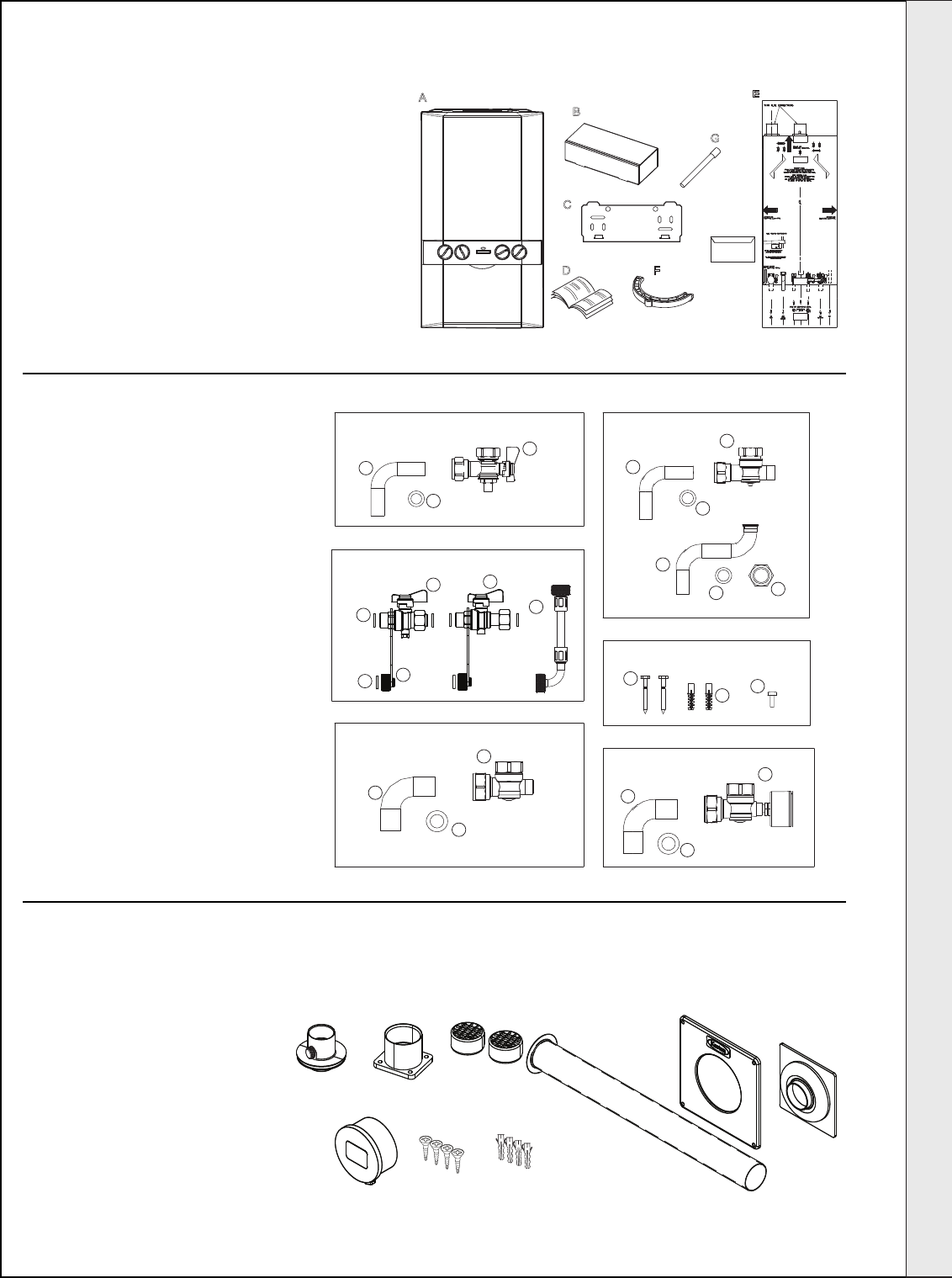
13
INSTALLATION
Keston Combi - Installation and Servicing
7
UNPACKING
Unpack and check the contents.
Pack 1 Contents
A Boiler
B Hardware Pack Box
C Wall Mounting Plate
D These Installation Instructions
E Wall Mounting Template
(located on internal protective packaging)
F Turret Clamp
G Safety Valve Drain Pipe
H Boiler Guarantee / Registration pack
continued . . . . .
C
A
D F
G
B
E
H
Boiler Guarantee
HARDWARE PACK CONTENTS
Gas Valve Pack
1. Pipe - Gas Inlet
2. Washer - Gas (blue)
3. Gas Cock
Filling Loop Pack
1. 3/8" Fibre washer (x4)
2. Valve (double check valve) fitting
3. Valve - Filling Loop
4. Plastic Chain (x2)
5. Filling Loop
6. 3/8" Blanking Rubber Washer (x2)
Return Valve Pack
1. Pipe CH Return
2. Washer CH
3. Valve Return
DHW Pack
1. Pipe DHW Outlet
2. Valve - Return DHW
3. Washer DHW (x2)
4. Pipe DHW Inlet
5. Nut 1/2"
Accessory Pack
1. Screw (x2)
2. Wallplug (x2)
3. Turret Clamp Screw (x1)
Flow Valve Pack
1. Pipe CH Flow
2. Washer CH
3. Valve Flow (with gauge)
Gas Valve Pack DHW Pack
Accessory Pack
Flow Valve Pack
Return Valve Pack
Filling Loop
3
11
1
1
1
5
2
3
3
3
1
23
4
6
5
4
2
2
2
2
3
3
A Flue Adaptor
B Air Spigot
C Terminals - 2 off
D Flue Sleeve
E Wall Plate
F Wall Seal
G Outside Sensor
H Screws - 4 off
J Wall Plugs - 4 off
B
A
GHJ
F
E
D
C
B
A
GHJ
F
E
D
C
Flue Pack Contents
INSTALLATION
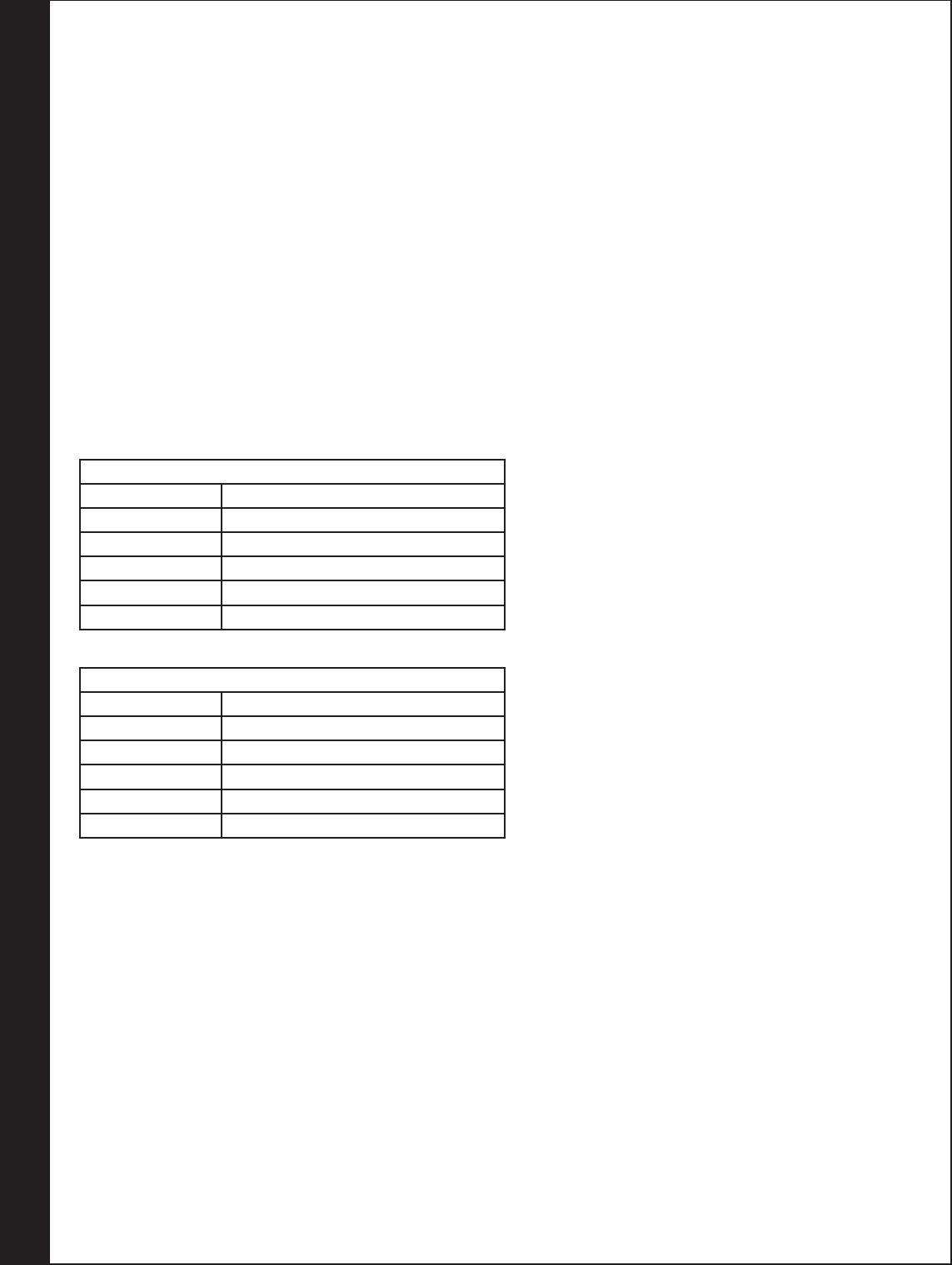
14
INSTALLATION
Keston Combi - Installation and Servicing
FLUE OUTLET
8
FLUE SYSTEM
IMPORTANT
When installing a replacement boiler a new ue system must be used. DO NOT re-use the existing boiler
ue installation.
DESIGN
Individual air supply and ue outlet pipes are used as standard.
The material approved for this application is which MUST be used is:
Marley muPVC Solvent Weld System (50mm) and Polypipe System 2000 muPVC solvent weld
(50mm), to BS5255 and/or BSEN1566-11 and BSEN1329, are the only systems approved for this
application.
Thefollowingpipeandttingsareapproved.
Polypipe System 2000 muPVC solvent Weld System (50mm)
Poly Pipe Code
MU 301 4m length muPVC wastepipe 5/225
MU 313 50mm x 45 deg muPVC obtuse bend
MU 314 50mm x 92.5 deg muPVC swept bend
MU 310 50mm muPVC straigh coupling
MU 316 50mm x 92.5 deg muPVC swept pipe
Marley muPVC Solvent Weld System (50mm)
Marley Code
KP 304 50mm x 4m double spigot pipe
KP32 50mm x 45 deg bend
KSC3 50mm straight coupling
KB3 50mm x 88.5 deg bend
KT3 50mm swept tee
Consideration MUST be given to expansion and contraction of the ue. Refer to Assembly Practice Frame in this installation and
Servicing Instructions for further guidance.
continued............
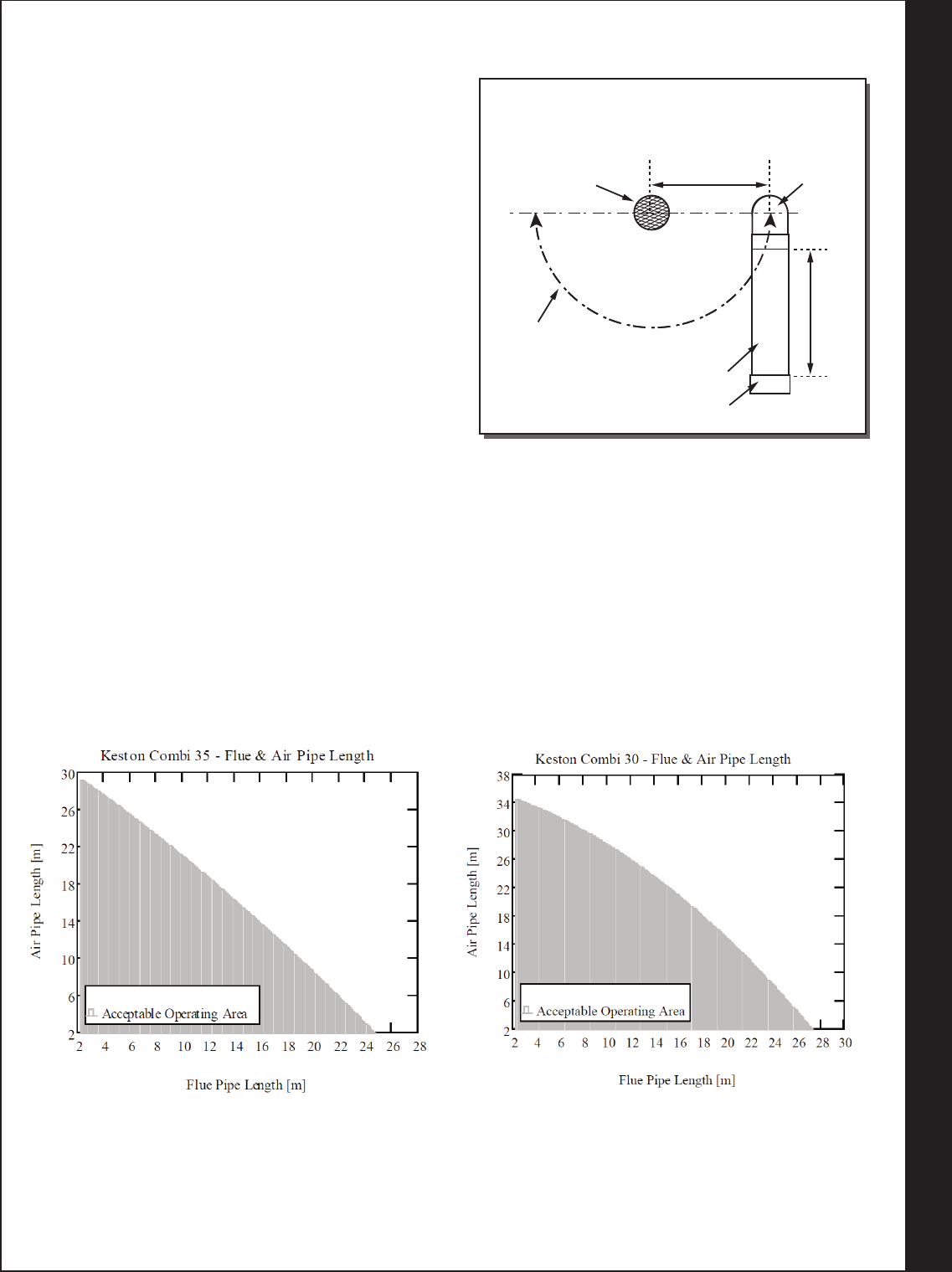
15
INSTALLATION
Keston Combi - Installation and Servicing
FLUE OUTLET
SLOPE
‘Horizontal’ ue outlet pipework MUST slope at least 1.5 degrees (26mm per metre run) downwards towards the boiler. Pipework
can be vertical. Only swept elbows can be used.
Air inlet pipework can be truly horizontal or vertical, or sloping in a downward direction towards the boiler but in each case rain, etc.,
must be prevented from entering the pipe. Theremustbenotroughsinanyofthepipework,whetheritbeairinletorue
outlet.
9
FLUE SYSTEM.... CONT’D
TERMINATION OF THE FLUE AND AIR
The ue and air pipes may terminate independently through any
external walls within the same dwelling except on opposing walls,
within the maximum lengths shown in graph below.
The air pipe must have an elbow and 150mm length of pipe
directed downwards with a termination grill tted.
The air pipe can be situated at the side or beneath the ue pipe to
a minimum dimension of 140mm (see diagram below). It must not
be sited above the ue pipe.
The ue and air pipes must extend by at least 40mm from the wall
surface.
Condensing boiler emit a visible plume of water vapour from the
ue terminal, this is normal. It is the responsibility of the installer
to judiciously select a terminal location that does not cause a
nuisance.
If either the ue or air terminal is below a height of 2m from ground
level a terminal guard must be tted.
TERMINAL POSITIONS
Flue
Pipe Elbow
Minimum Separation
140mm
Acceptable
range of air
pipe siting
Terminal
Air Pipe
150mm
MAXIMUM LENGTHS
Due to the resistance presented by extended ue length a slight reduction in maximum boiler output will occur where
combined ue and air lengths in excess of 18.0m and 16.0m (50mm muPVC) are used. In such cases the boiler output will be
reduced by 0.6% and 0.8% per additional metre.
The maximum lengths of both air inlet pipe and ue outlet pipe, when no bends are used, are as detailed in graphs below.
However, each bend used has an equivalent length that must be deducted from the maximum straight length stated in graphs
below. Knuckle bends must not be tted.
A 92.5º swept elbow is equivalent to 1.0m straight length. A 45º bend is equivalent to 0.5m straight length.
It is possible to have variable ue and air lengths as described within the shaded area of graphs below.
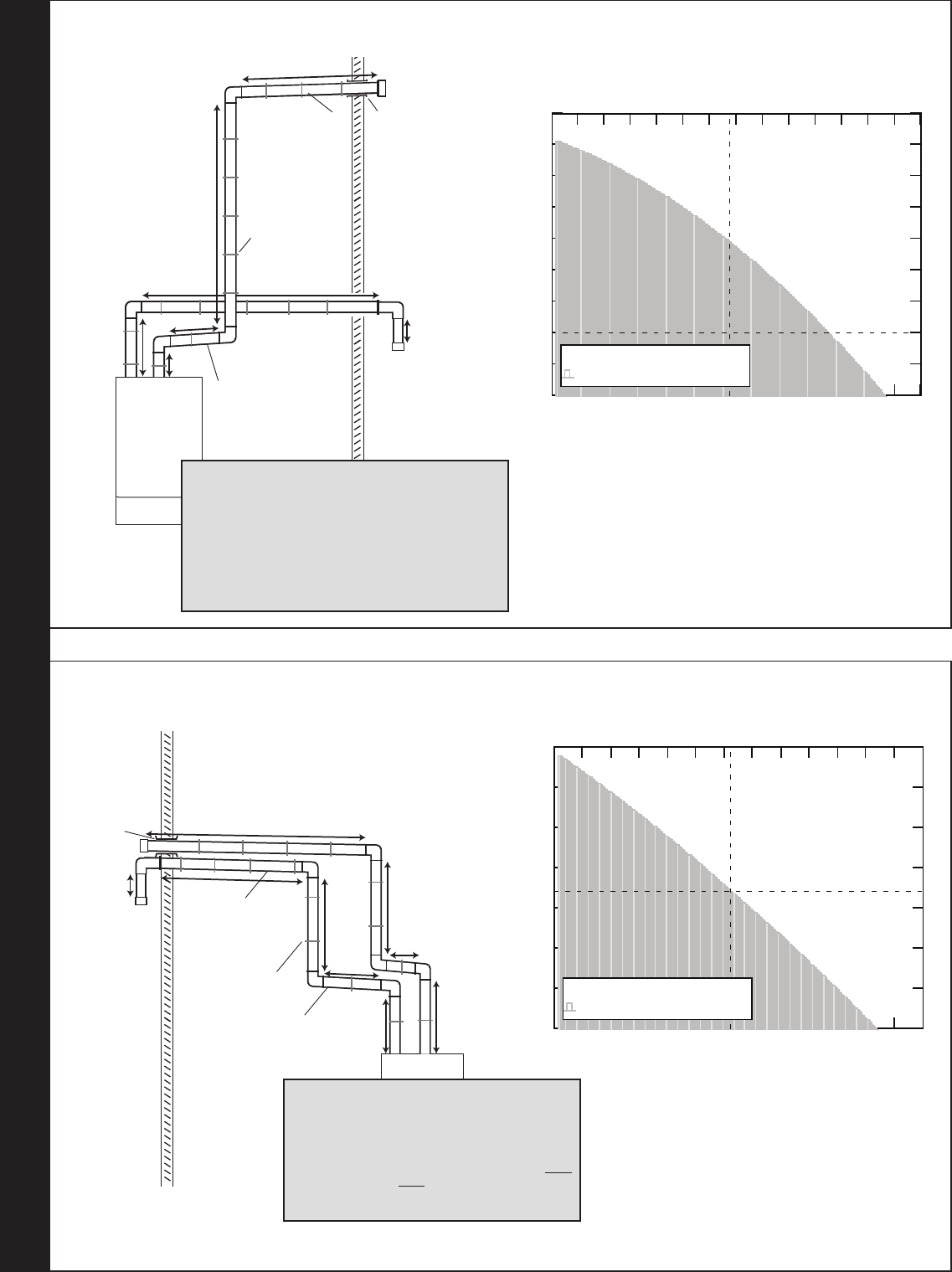
16
INSTALLATION
Keston Combi - Installation and Servicing
FLUE OUTLET
10
FLUE INSTALLATION EXAMPLE KESTON COMBI 30
11
FLUE INSTALLATION EXAMPLE KESTON COMBI 35
6m
2m
Bracket at
each 1 metre
1m
4m
1.5m
6m
1.5º back
to boiler
1.5º back
to boiler
Air
Elbows 2 x 1m = 2m
Straights 6+2+0.15 = 8.15m
Total = 10.15m
Overall Flue / Air = 25.65m
Flue
Elbows 3 x 1m = 3m
Straights 4+6+1.5+1 = 12.5m
Total = 15.5m
Calculations
0.15m
Sleeve
2m 2.5m
1.5m
2m
4m
4m
0.15m
3.5m
3.5m
1.5º back
to boiler
Air
Sleeve
1.5º back
to boiler
Bracket every
1 metre
Flue
3 x 90º elbows 3
Straight lengths 2.5
1.5
3.5
4
14.5
Overall Flue / Air = 30.15m
Air
4 x 90º elbows 4
Straight lengths 2
2
3.5
4
0.15
15.65
Calculations
246810 12 14 16 18 20 22 24 26 28
2
6
10
14
18
22
26
30
Accep table Op erating Area
Keston Combi 35 - Flue & Air Pipe Length
Flue Pipe Length [m]
Air Pipe Length [m]
15.65
14.5
246810 12 14 16 18 20 22 24 26 28 30
2
6
10
14
18
22
26
30
34
38
Accep table Op erating Area
Keston Combi 30 - Flue & Air Pipe Length
Flue Pipe Length [m]
Air Pipe Length [m]
10.15
15.5
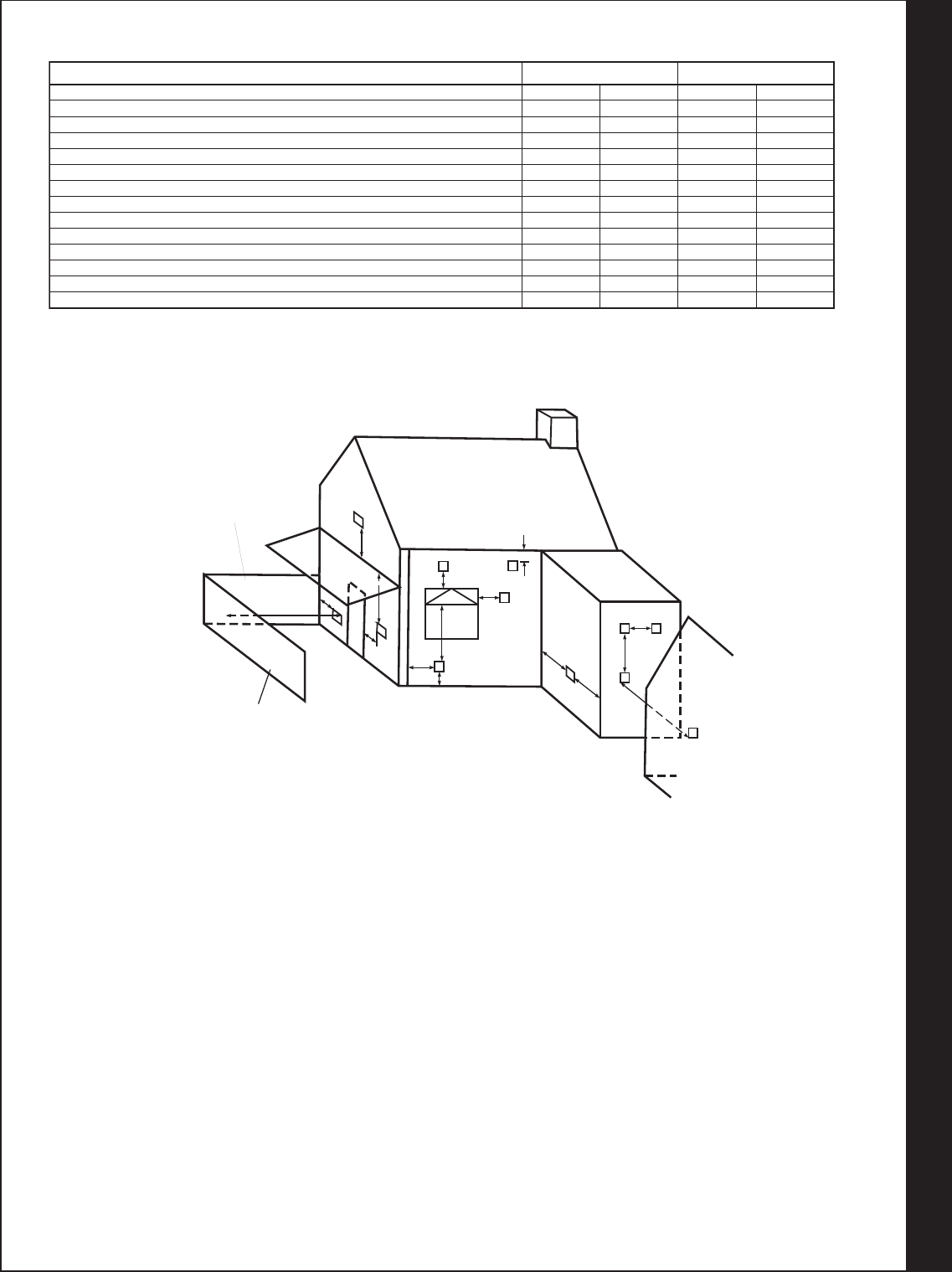
17
INSTALLATION
Keston Combi - Installation and Servicing
FLUE OUTLET
12
FLUE TERMINATION POSITION
Twin Flue Positions
Below an opening (1)
Above an opening (1)
Horizontally to an opening (1)
Below gutters, soil pipes or drain pipes
Below eves
Below balcony or car port roof
From a vertical drain pipe or soil pipe
From an internal or external corner or to a boundary alongside the terminal
Above ground, roof or balcony level
From a surface or a boundary facing the terminal
From a terminal facing the terminal
From an opening in the car port into the building
Vertically from a terminal on the same wall
Horizontally from a terminal on the same wall
300 mm
300 mm
300 mm
75 mm
200 mm
200 mm
150 mm
300 mm
300 mm
600 mm
1200 mm
1200 mm
1500 mm
300 mm
50 mm
50 mm
50 mm
75 mm
50 mm
50 mm
50 mm
50 mm
100 mm
100 mm
1200 mm
100 mm
1500 mm
300 mm
2"
2"
2"
3"
2"
2"
2"
2"
4"
4"
48"
4"
60"
12"
12"
12"
12"
3"
8"
8"
6"
12"
12"
24"
48"
48"
60"
12"
A.
B.
C.
D.
E.
F.
G.
H.
I.
J.
K.
L.
M.
N.
Flue Minimum Spacing Air Minimum Spacing
(1) An opening here means an openable element, such as a openable window, or a fixed opening such as an air vent. However, in addition, the outlet should not
be nearer than 150mm (fanned draught) to an opening into the building fabric formed for the purpose of accommodating
a built in element, such as a window frame.
The dimensions given in the table above may need to be increased to avoid wall staining and nuisance depending on site conditions.
boundary
boundary
JH
L
F
I
G
I
A
B
C
D, E
H
H
K
M
N
GENERAL INSTALLATIONS
All parts of the system must be constructed in accordance with BS 5440 Part 1, except where specically mentioned in these
instructions.
All pipe work must be adequately supported.
All joints other than approved push-on or plastic compression connectors must be made and sealed with solvent cement suitable
for muPVC pipes and conforming to BS 6209: 1982.
Consideration must be given to Corgi/Gas Safe bulletin TB200/TB008 regarding ues in voids.
The boiler casing must always be correctly tted to the boiler when leaving the appliance operational.
External wall faces and any internal faces of cavity walls must be good.
AIR SUPPLY
The Keston Combi is a room-sealed appliance and therefore does not require purpose provided ventilation to the boiler room for
combustion air.
COMPARTMENT INSTALLATION
Due to the low casing temperatures generated by the boiler, no compartment ventilation is required. However, the cupboard or
compartment must not be used for storage.
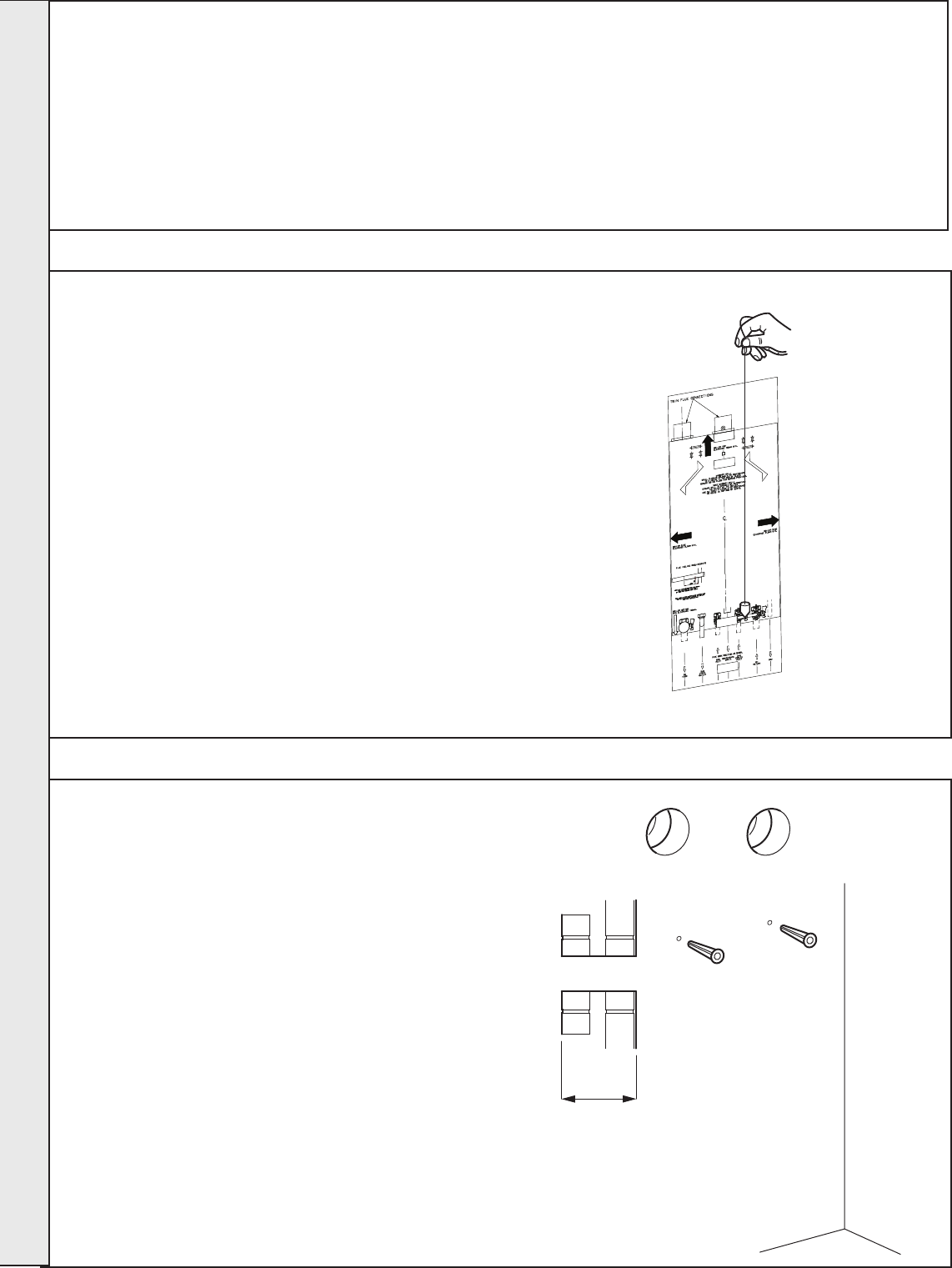
18
INSTALLATION
Keston Combi - Installation and Servicing
13 INSTALLING THE BOILER
Installation of the boiler is straightforward but consideration must be given to access to allow ue and air pipes to be pushed
through walls and ceilings. The order in which the components are installed will depend upon particular site conditions, but in
general it will be easiest and most accurate to install the boiler and then build up the ue outlet and air inlet pipes to the terminal
- this is the sequence described.
The wall mounting template is located on the internal protective
packaging.
Note.
The template shows the positions of the xing holes and
the position of the air and ue connections. Care MUST be
taken to ensure the correct holes are drilled.
1. Tape template into the selected position. Ensure squareness
by hanging a plumbline as shown.
2. Mark onto the wall the following:
a The wall mounting plate screw positions (choose one from
each group).
b The position of the air and ue when exiting straight out of
the wall where the boiler is mounted.
Note. Mark the centre of the hole as well as the
circumference.
3. Remove the template from the wall.
14
WALL MOUNTING TEMPLATE
15
PREPARING THE WALL
IMPORTANT.
Ensure that, during the cutting operation, masonry falling
outside of the building does not cause damage or personal
injury.
1. Cut the ue and air holes (preferably with 60mm core bore
tool) ensuring the holes are square to the wall.
2. Drill 2 holes with a 7.5mm / 8mm masonry drill and insert
the plastic plugs, provided, for the wall mounting plate.
3. Locate 2 No.14 x 50mm screws in the wall mounting plate
(one at each side, in any of the 3 holes provided at each
side) and screw home.
3G10030
X
Section
through wall
Note. Check all of the hole
positions before drilling.
Rear flue only
60mm diameter
holes
INSTALLATION
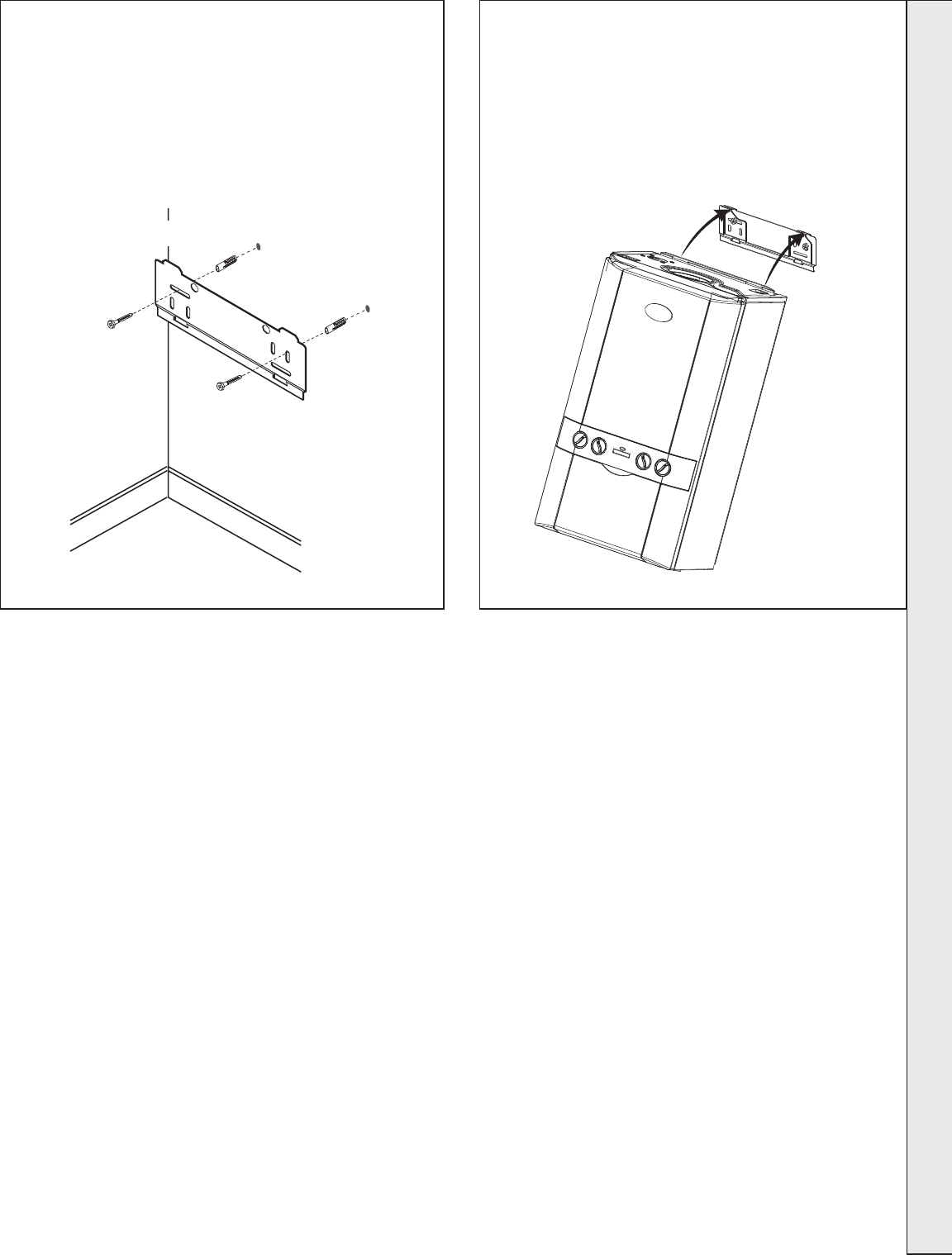
19
INSTALLATION
Keston Combi - Installation and Servicing
esp9496
Example of fixing
17
MOUNTING THE BOILER
1. Ensure the plastic plugs are removed from both the CH
and DHW connections before mounting the boiler.
2. Lift the boiler onto the wall mounting plate (refer to the
Introduction section for safe handling advice), locating it
over the two tabs.
16
FITTING THE WALL MOUNTING PLATE
Screw the wall mounting plate to the wall using 2 wall plugs
(previously tted) with the 2 screws provided.
Choose one of the 2 sets of slots in left and right bank.
Ensuring that at least one of the screws is tted into a top slot.
INSTALLATION
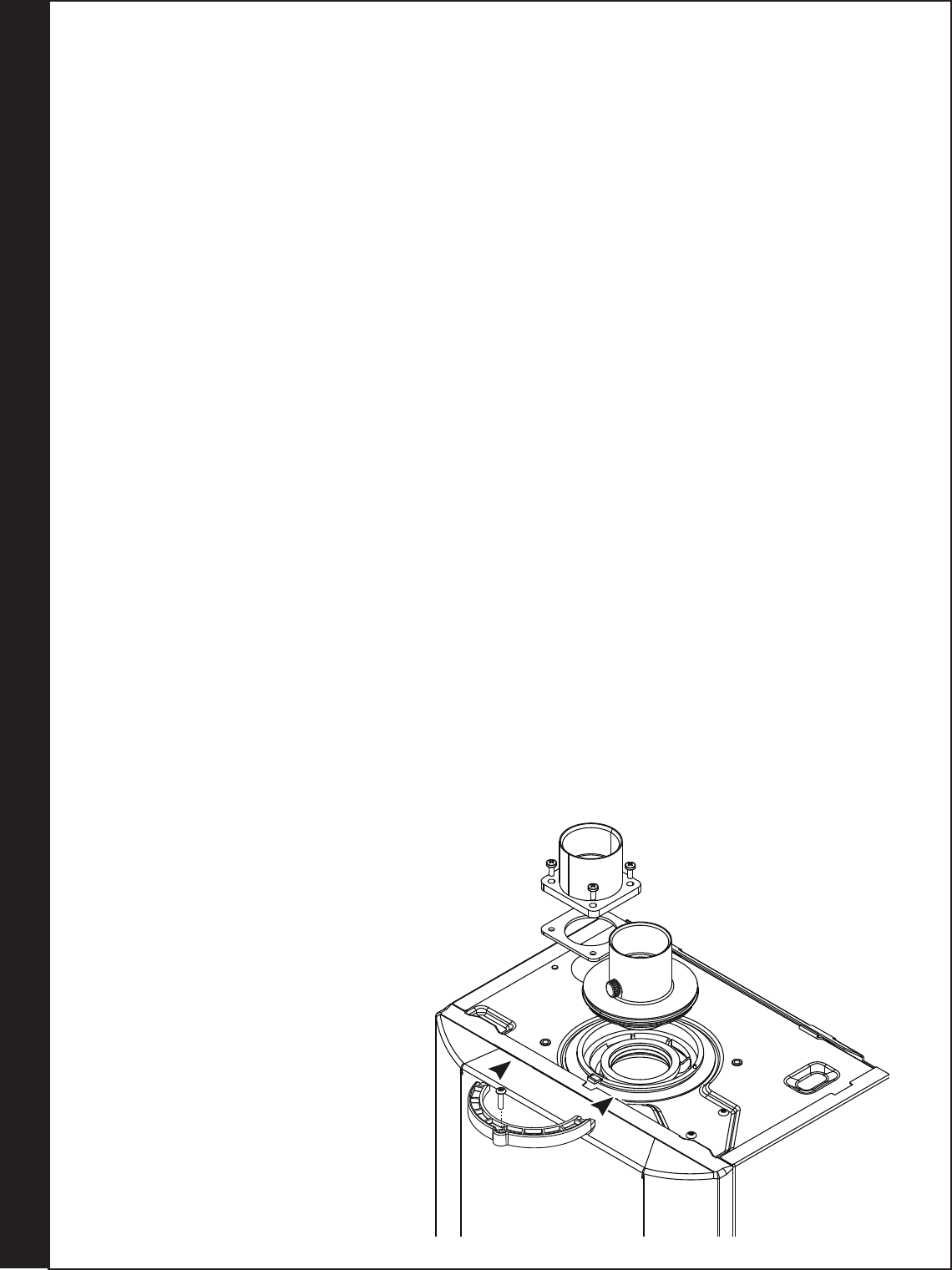
20
INSTALLATION
Keston Combi - Installation and Servicing
FLUE OUTLET
18 ASSEMBLY PRACTICE
Remove all plastic debris and burrs when installing air intake
piping. Plastic llings caused by cutting muPVC pipe must not
be allowed to be drawn into the combustion air blower. Prevent
dust entering the air intake when cutting on building sites. Blower
failure which is determined to be caused by plastic lings or other
debris will not be covered by guarantee.
INSTALLING FLUE AND AIR PIPES
Important - When installing the boiler on an existing system a
new ue and air intake system MUST also be installed. You
MUST NOT re-use existing ue or air pipework components.
• Remove the ue adaptor and air spigot from the ue pack
supplied with the boiler.
• Remove boiler front panel - Frame 39.
• Remove air intake blanking plate by unscrewing 4 x M5
screws and put to one side, leaving sponge gasket in
place.
• Fix air spigot to boiler using the 4 M5 screws, see diag.
below. Ensure sponge gasket is in place and not damaged.
• Insert the ue adaptor into the ue manifold on the top of the
boiler and secure using the clamp provided in the packaging
box, see diagram below.
• Measure, cut and check the air and ue pipes to pass to the
exit from the wall(s) or ceiling.
• Always thoroughly deburr all pipes and most important,
remove shavings from within the pipe.
• Assemble, using solvent weld cement, the pipework from
the boiler connections to the exit from the rst wall/ceiling,
(remount the boiler if removed). When pushing pipe through
walls, ensure grit and dust is not allowed to enter the pipe.
Ensure pipes are fully engaged into sockets and solvent
welded with no leaks.
• Using the same methods drill any further holes (always
covering existing pipework), cut and assemble the
pipework.
• From outside, complete the two terminations - See Frame
8 Flue System and make good all holes. (Wall sealing
collars are available to make good hole areas on the wall
face (part number C.08.0.00.07.0).
• Support any pipes whose route could be displaced
either of its own accord or by accident. Any horizontal
run over 1m or vertical runs of any length must
always be supported. Brackets should be placed at
intervals of approximately 1m. Brackets should be
loose enough on the pipe to allow thermal expansion
and contraction movement.
• Flue pipework through walls MUST be sleeved to
allow thermal expansion and contraction movement.
• Check all connections for security and re-seal any joints
using solvent cement where soundness may be in doubt.
Note. It is equally important to seal the air inlet with solvent
cement as the ue outlet pipe joints.
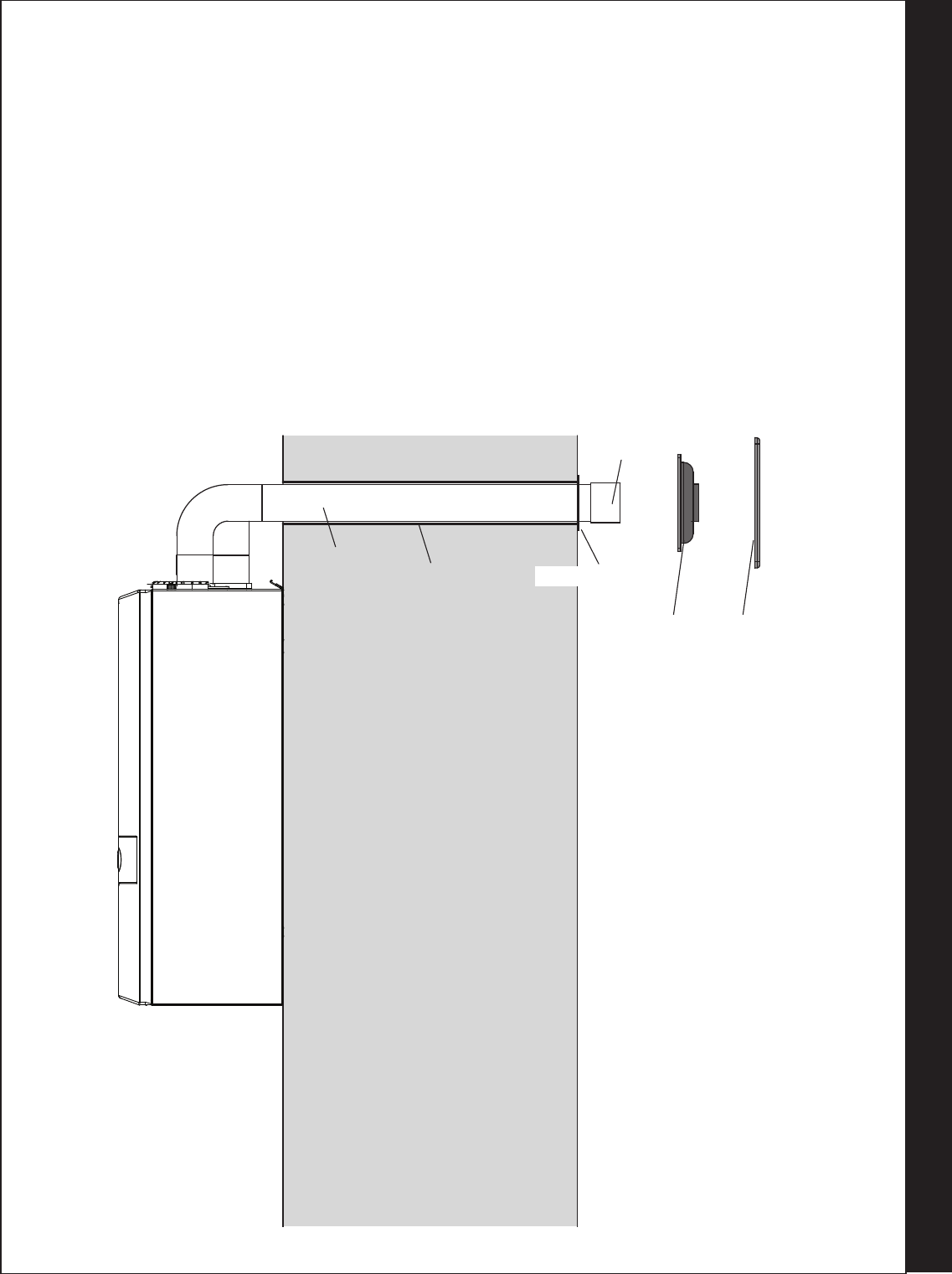
21
INSTALLATION
Keston Combi - Installation and Servicing
FLUE OUTLET
19
FITTING THE FLUE SLEEVE
Flue Sleeve
Flue Pipe
Flue
Terminal
Flexible
Wall
Seal
Wall
Plate
Flue Sleeve Flange
1. Cut hole in wall.
2. Measure wall Thickness
3. Cut sleeve length to match wall thickness & remove burrs.
4. Grout sleeve into wall with ange on external face.
5. Slide ue pipe into sleeve, checking it is free to slide.
6. Slide Flexible wall seal over ue pipe and push centre ring up to sleeve ange when cold.
7. Locate wall plate over exible wall seal and clamp in place using the raw plug pack.
8. Afx ue terminal
9. During boiler test check that the ue end is free to expand and contract with exible wall seal.
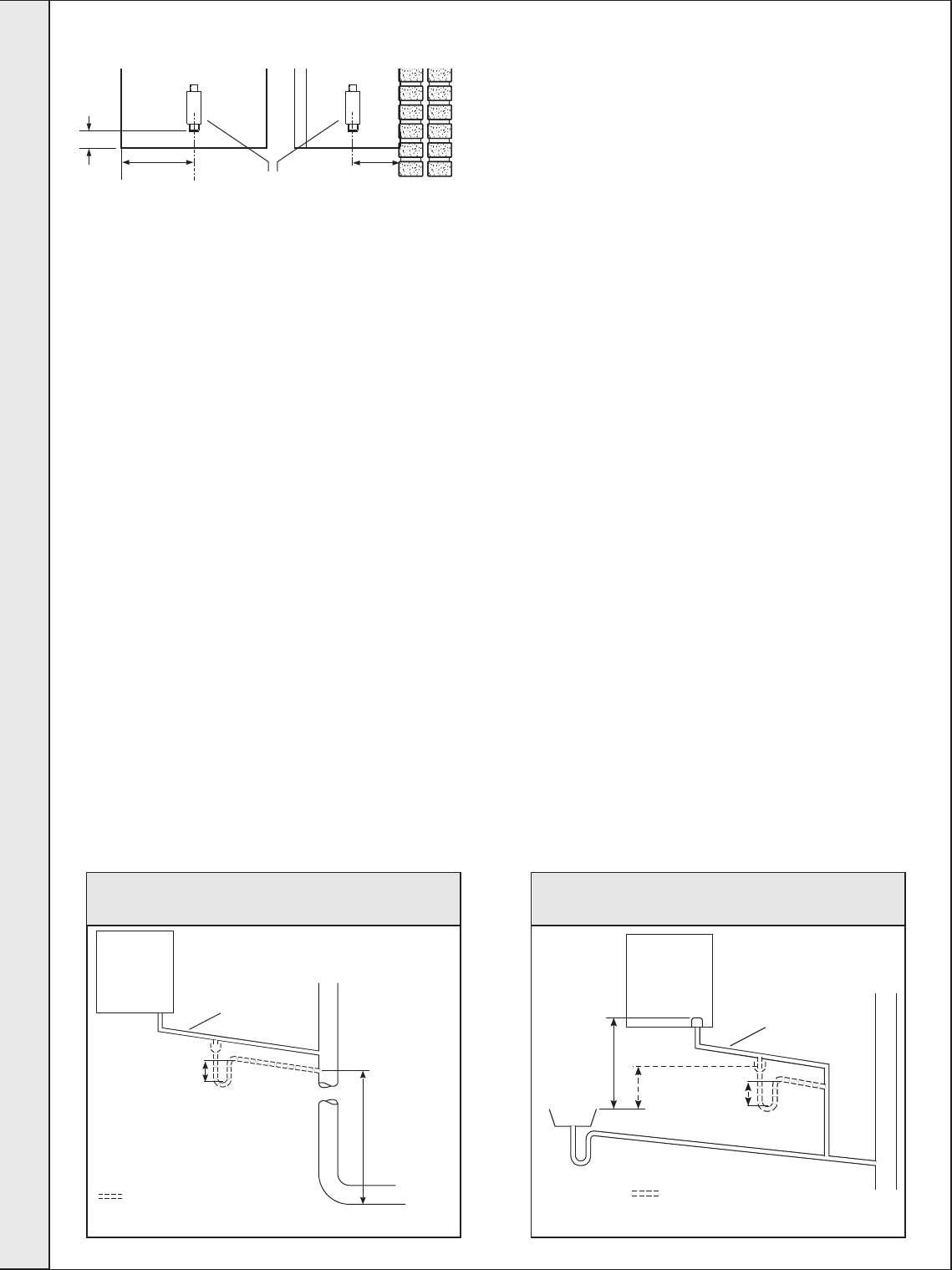
22
INSTALLATION
Keston Combi - Installation and Servicing
20
CONDENSATE DRAIN
203
47
149
Condensate
Drain
This appliance is tted with a siphonic 75mm condensate trap
system that requires lling before operating the appliance for the
rst time or after maintenance.
All condensate pipework should conform to the following:
a. Where a new or replacement boiler is being installed, access to
an internal ‘gravity discharge’ termination should be one of the
main factors considered in determining boiler location.
b. Plastic with push t or solvent connections.
c. Internal plastic pipe work a minimum of 19mm ID (typically
22mm OD)
d. External plastic pipe must be a minimum of 30mm ID (typically
32 OD) before it passes through the sleeved wall.
e. All horizontal pipe runs, must fall a minimum of 45mm per metre
away from the Boiler.
f. External & unheated pipe work should be kept to a minimum
and insulated with Class “O” waterproof pipe insulation.
g. All installations must be carried out in accordance to the
relevant connection methods as shown in the “Condensate
installation diagrams” & BS6798:2009
h. Pipe work must be installed so that it does not allow spillage
into the dwelling in the event of a blockage (through freezing)
i. All internal burrs should be removed from the pipe work and any
ttings.
In order to minimise the risk of freezing during prolonged very cold
spells, one of the following methods of terminating condensate
drainage pipe should be adopted.
Internal Drain Connections
Wherever possible, the condensate drainage pipe should be routed
to drain by gravity to a suitable internal foul water discharge point
such as an internal soil and vent stack or kitchen or bathroom
waste pipe etc. See Figs 1 and 2.
Condensate Pump
Where gravity discharge to an internal termination is not physically
possible or where very long internal pipe runs would be required
to reach a suitable discharge point, a condensate pump of a
specication recommended by the boiler or pump manufacturer
should be used terminating into a suitable internal foul water
discharge point such as an internal soil and vent stack or internal
kitchen or bathroom waste pipe etc. (g 3).
External Drain Connections
The use of an externally run condensate drainage pipe should
only be considered after exhausting all internal termination options
as described previously. An external system must terminate at a
suitable foul water discharge point or purpose designed soak away.
If an external system is chosen then the following measures must
be adopted:
The external pipe run should be kept to a minimum using the most
direct and “most vertical” route possible to the discharge point, with
no horizontal sections in which condensate might collect.
- For connections to an external soil/vent stack see Fig 4.
Insulation measures as described should be used.
- When a rainwater downpipe is used, an air break must be
installed between the condensate drainage pipe and the
downpipe to avoid reverse ow of rainwater into the boiler
should the downpipe become ooded or frozen, see Fig 5.
- Where the condensate drain pipe terminates over an open
foul drain or gully, the pipe should terminate below the grating
level, but above water level, to minimise “wind chill” at the open
end. The use of a drain cover (as used to prevent blockage by
leaves) may offer further prevention from wind chill. See Fig 6.
- Where the condensate drain pipe terminates in a purpose
designed soak away (see BS 6798) any above ground
condensate drain pipe sections should be run and insulated as
described above. See Fig 7
Unheated Internal Areas
Internal condensate drain pipes run in unheated areas, e.g. lofts
basements and garages, should be treated as external pipe.
Ensure the customer is aware of the effects created by a frozen
condensate and is shown where this information can be found in
the user manual.
Boiler
with 75mm
sealed
condensate
trap Min Ø 19mm
Internal pipe
Minimum
connection
height up to 3
storeys
Soil & vent stack
≥ 450
75
Boilers without 75mm sealed
condensate trap must be fitted with
a 75mm trap and visible air break
Sink/basin/
bath or
shower
Boiler
with 75mm
sealed
condensate
trap
Min Ø 19mm
Internal pipe
Internal soil & vent stack
Boilers without 75mm sealed
condensate trap must be fitted with
a 75mm trap and visible air break
75
≥ 100
≥ 100
Figure 1 - Connection of Condensate Drainage Pipe to
Internal Soil & Vent Stack
Figure 2 - Connection of a Condensate Drainage Pipe
Downstream of a Sink, Basin, Bath or Shower Water Trap to
Internal Soil Vent Stack
continued . . . . .
INSTALLATION
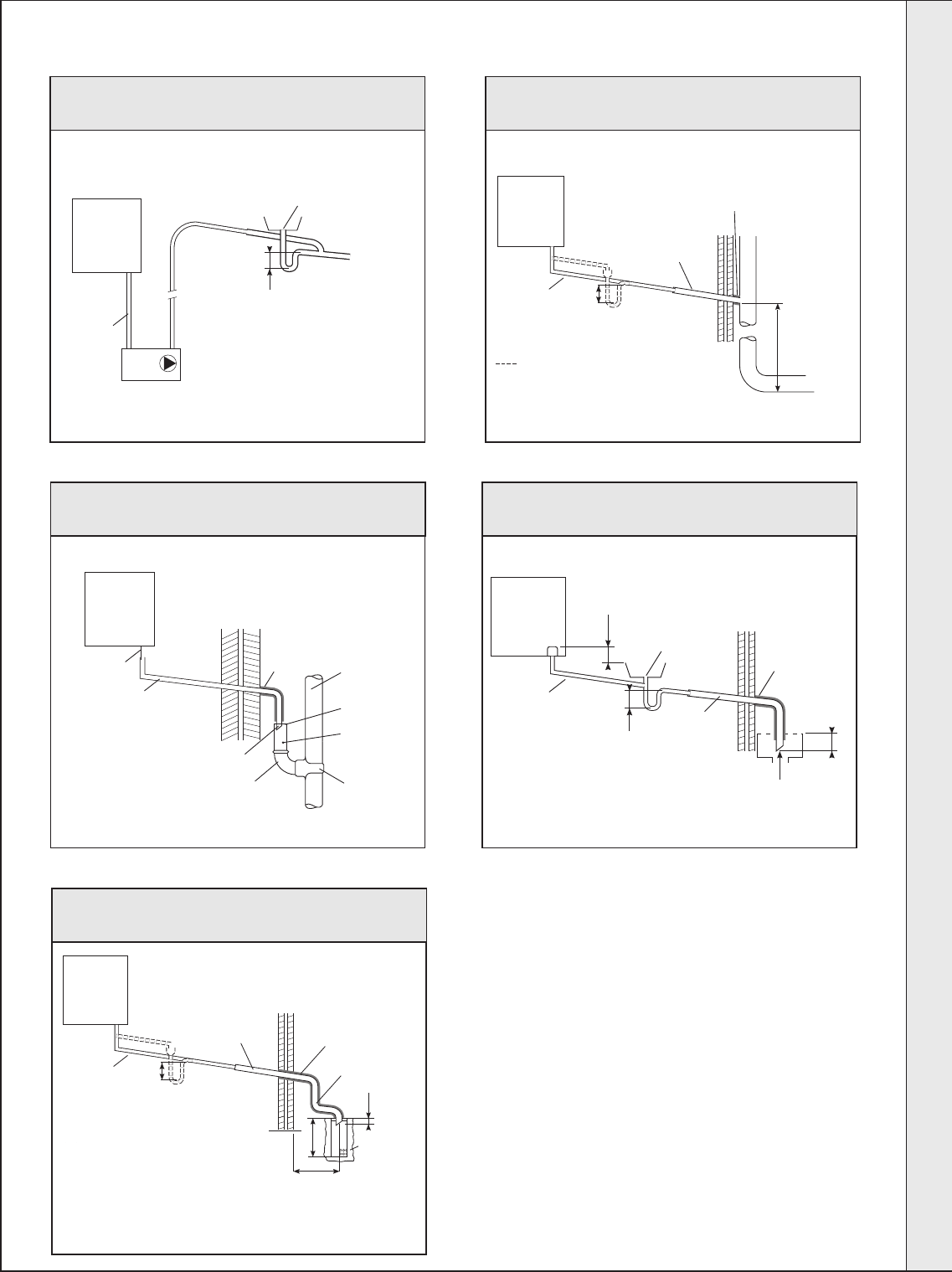
23
INSTALLATION
Keston Combi - Installation and Servicing
21
CONDENSATE DRAIN - CONT’D.......
Visible air break
Condensate pump
(Install in accordance with manufacturers instructions)
Min Ø 19mm
Internal pipe
Boiler
with 75mm
sealed
condensate
trap
75
Min Ø 19mm
Internal pipe
Min Ø 30mm
Internal pipe
Air gap
External air
break
combined foul/
rain water drain
Terminated
and cut at 45º
43mm 90º male/
female bend
Water/
weather proof
insulation
68mm Ø PVCU
Strap on fitting
Boiler
with 75mm
sealed
condensate
trap
Boiler
with 75mm
sealed
condensate
trap
Min Ø 19mm
Internal pipe
Min Ø 30mm
Internal pipe Water/Weather
proof insulation
Max 3m external
pipework
Limestone
chippings
≥ 500
≥ 300
≥ 25
75
Boilers without 75mm sealed
condensate trap must be fitted with
a 75mm trap and visible air break
2 rows of three Ø12mm holes
25mm centres, 50mm from
the bottom of the tube, facing
away from the house
Minimum
connection
height up to 3
storeys
Soil & vent stack
≥ 450
Boiler
with 75mm
sealed
condensate
trap
Min Ø 19mm
Internal pipe
Min Ø 30mm
Internal pipe
Water/weather
proof insulation
75
Boilers without 75mm sealed
condensate trap must be fitted with
a 75mm trap and visible air break
Visible air break
at plug hole
Min Ø 19mm
Internal pipe
Sink, basin, bath or
shower with integral
overflow and 75mm trap
Minimum 30mm
internal pipe
Water/
weather proof
insulation
≥ 25 Below grate
45º pipe
termination
Boiler
with 75mm
sealed
condensate
trap
75
≥ 100
Figure 3 - Connection of a Condensate Pump Typical
Method (see manufacturers detailed instructions)
Figure 4 - Connection of condensate Drainage Pipe to
External Soil & Vent Stack
Figure 5 - Connection of a Condensate Drainage Pipe to an
External Rainwater Downpipe (only combined foul/rainwater
drain)
Figure 7 - Connection of a Condensate Drainage Pipe to an
External Purpose Made Soak Away.
Figure 6 - Connection of Condensate Drainage Pipe
Upstream of a Sink, Basin, Bath or Shower Waste Trap to
External Drain, Gulley or Ranwater Hopper
INSTALLATION
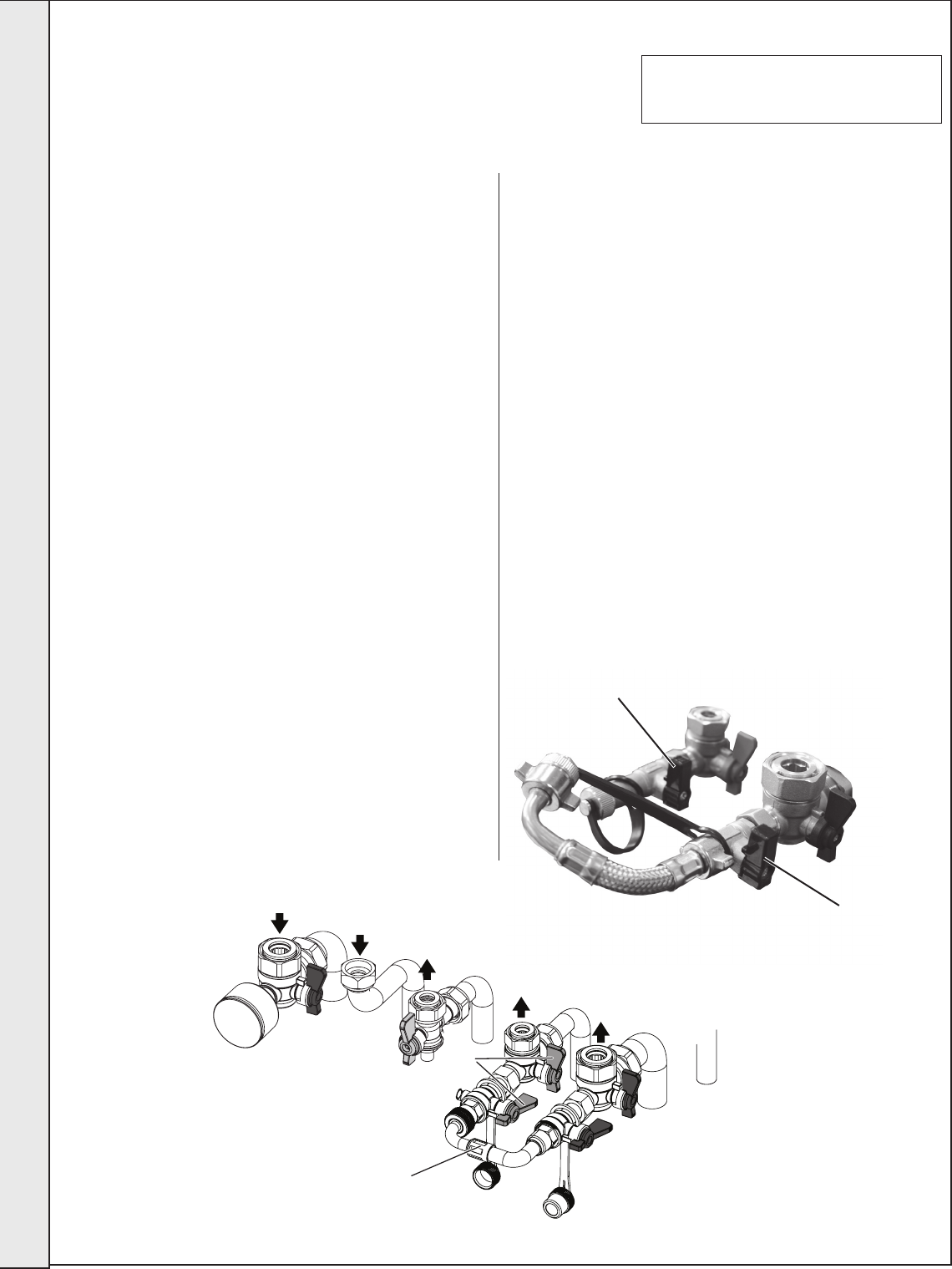
24
INSTALLATION
Keston Combi - Installation and Servicing
Blue
Handle
Black
Handle
Black
Handle
Black
Handle
Yellow
Handle
Filling
Loop
CH Flow DHW
Outlet
Gas
Supply
DHW
Inlet CH
Return
Safety
Drain
Valve
22
CONNECTIONS & FILLING
Note. The domestic hot water ow rate
is automatically regulated to a maximum
of 12.4 l/m (2.8 gpm)
FILLING
NOTES.
Ensure all boss blanking plugs are removed before connecting hardware. Each
valve must be tted to the correct boss as shown in the picture.
Ensure each union is tted with bre seals provided.
Do not subject any of the isolating valves to heat as the seals may be damaged.
Note that all isolation handles
are shown in the open postion.
WATER CONNECTIONS CH
1. Connect the CH ow service valve (black handle) and
copper tail provided in the hardware pack to the threaded
boss connection provided at the lower rear of the boiler.
2. Connect the CH rtn. valve (black handle) and copper tail.
3. If connecting the boiler to heating loads in excess of
60,000 Btu/h, connecting ow and return heating systems
pipework must be sized in 28mm diameter at the point
of pipe connection to the boiler tails. use 22mm x 28mm
pipe adaptors as appropriate.
GAS CONNECTION
IMPORTANT. The gas service cock is sealed with a non-metallic
blue bre washer, which must not be overheated when making
capillary connections. Refer to Frame 1 for details of the position
of the gas connection.
For additional gas supply info refer to “Gas Supply” on page 8.
SAFETY VALVE DRAIN
The safety valve connection, located at the bottom right-hand
side of the boiler, comprises a 15mm diameter stub pipe.
The Installer to provide a compression joint on the end of the
stub pipe. This assists with pipe removal when servicing.
The discharge pipe should be positioned so that the discharge
of water or steam cannot create a hazard to the occupants of
the premises or damage the electrical components and wiring.
WATER CONNECTIONS DHW
1. Fit the DHW inlet service valve (blue handle) and copper tail
to the threaded boss connection ensuring the seal provided
is correctly located.
2. Fit the DHW outlet pipe tail to DHW outlet connection,
ensuring the seal provided is correctly located.
3. Fit the lling loop provided between the DHW inlet valve and
the CH return valve
IMPORTANT -whenlling:
When lling, there may be a slight water leak from the air vent
therefore electrical connections should be protected.
1. Ensure Filling Loop is connected
2. Ensure dust cap on auto air vent is slackened off (refer to
Frame 66).
3. Check all isolation handles on all water connections are in
the open position.
4. Open handle on the lling loop, then slowly open handle
until pressure gauge reads between 1 to 1.5 bar.
5. Once pressure gauge dial reads between 1 - 1.5 bar turn the
lling loop isolation valves back to the closed position.
6. Disconnect lling loop at the LH side, ensuring top hat
washer is retained and screw on blanking cap.
7. Connect extended blanking cap and top hat washer to lling
loop pipe.
FILLING
Note. Fully open all DHW taps and ensure water is
owing freely. Once satised close all taps.
Handle
(Shown in closed position)
Handle
(Shown in closed position)
INSTALLATION
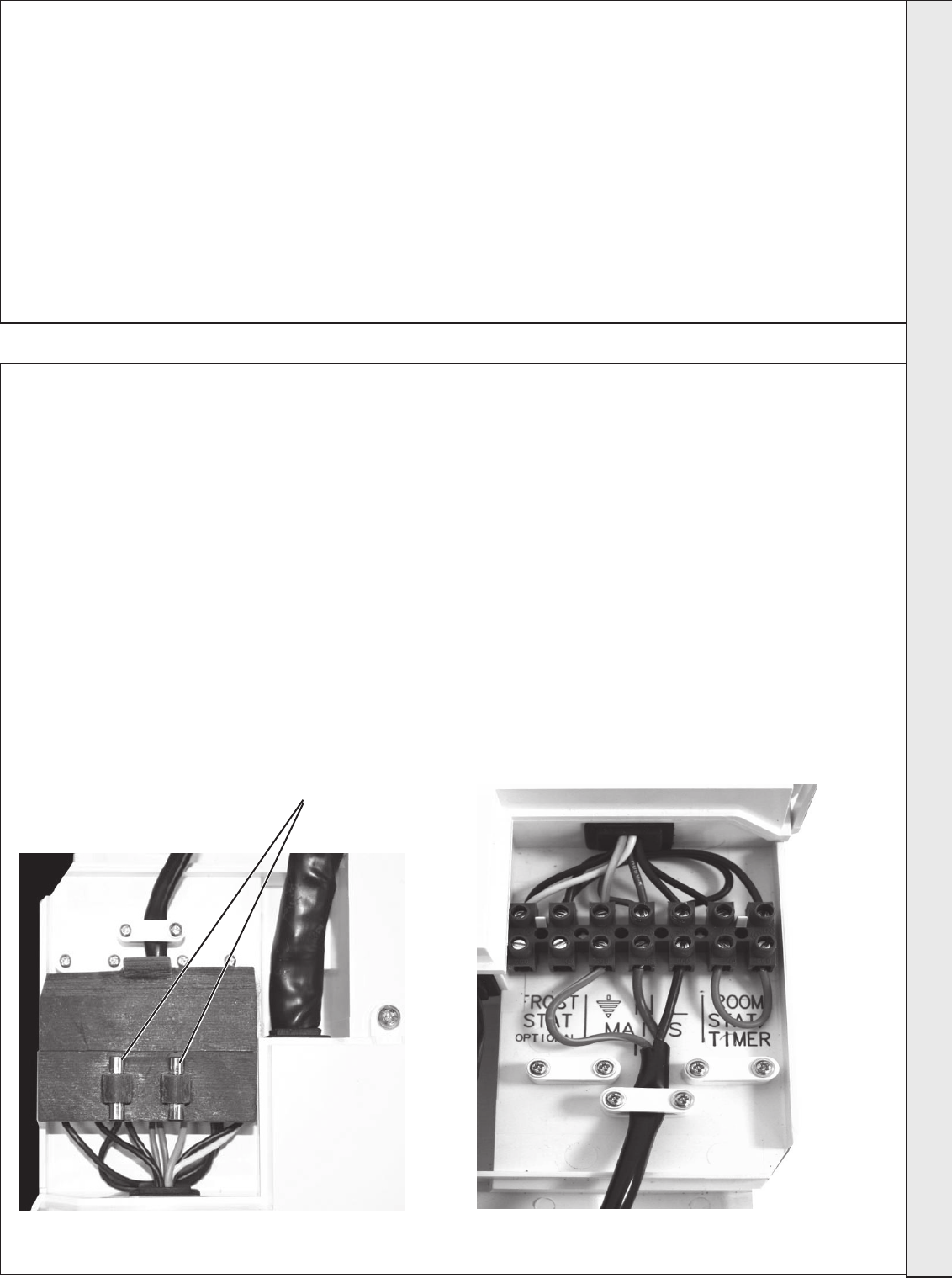
25
INSTALLATION
Keston Combi - Installation and Servicing
24
INTERNAL WIRING
The Keston Combi boiler comes pre-tted with 1.8m of
mains cable. This must be connected to a permanent live
supply and NOT switched by thermostats/programmers.
For installers wishing to change this cable refer to Frame
26.
The Keston Combi boiler comes pre-tted with a link wire
between the room thermostat/Timer connections on the
terminal strip. This creates a permanent call for heat
and must be removed when adding a room thermostat/
programmer.
The terminal block cover carries two spare fuses for the
main PCB.
To add thermostat/programmer:
1. Isolate the mains supply to the boiler.
2. Remove the front panel. Refer to Frame 39.
3. Swing the control box down into the servicing position.
Refer to Frame 45.
4. Route incoming cables through the grommets in bottom
panel (note, grommets are ‘blind’ and will require puncturing)
and secure using clamps and screws provided in hardware
pack.
5. Pull off rubber terminal block cover.
6. Connect wires to terminal block, as shown below
7. Re-assemble in reverse order.
continued . . . .
23
ELECTRICAL CONNECTIONS
Wiring should be 3 core PVC insulated cable, not less than
0.75mm2 (24 x 0.2mm), and to BS 6500 Table 16. For IE
reference should be made to the current ETCI rules for electrical
installations.
Connection must be made in a way that allows complete isolation
of the electrical supply such as a double pole switch having
a 3mm (1/8”) contact separation in both poles. The means of
isolation must be accessible to the user after installation.
WARNING. This appliance MUST be earthed.
A mains supply of 230Vac ~ 50 Hz is required.
The fuse rating should be 3A. All external controls and wiring
must be suitable for mains voltage.
Wiring external to the boiler MUST be in accordance with the
current I.E.E. (BS.7671) Wiring Regulations and any local
regulations.
Spare PCB fuses
INSTALLATION
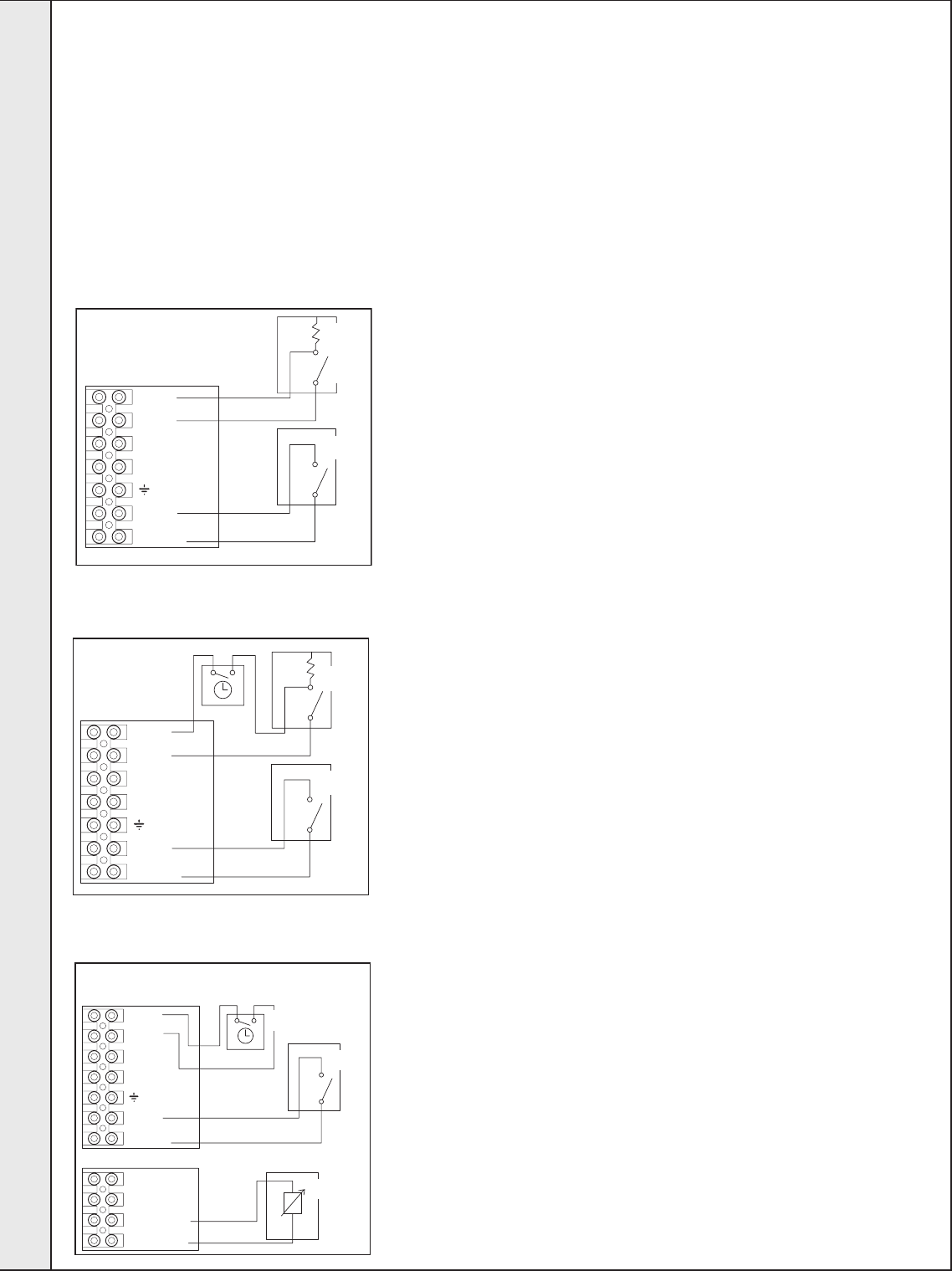
26
INSTALLATION
Keston Combi - Installation and Servicing
3G9560
N
L
N
FROST
STAT
(
OPTIONAL
)
ROOM
STAT/
TIMER
Room
Stat or
Prog.
Room
Stat
Optional
Frost Stat
DIAGRAM A
Internal Timer or
Programmable Room Stat
3G9561
N
L
N
FROST
STAT
(
OPTIONAL
)
ROOM
STAT/
TIMER
Room
Stat
Optional
Frost Stat
DIAGRAM B
External
Timer
Keston offer 2 kits as follows:
(see individual kits for installation instructions)
Electronic Timer (7 day) kit - 7 day electronic CH timer ts into the control box of the boiler. This can be tted in conjunction
with a room thermostat. Features English language installation help messages.
25
INTERNAL WIRING.... CONT’D
(1) ROOM THERMOSTAT WITH INTERNAL BOILER TIMER OR
(2) PROGRAMMABLE ROOM THERMOSTAT
1. Remove link wire between room stat/timer terminals.
2. Connect room stat across terminals as shown in diagram A
3. If room stat has a neutral connection, connect this to terminal
N (load) in the fused spur.
3G9707a
L
N
FROST
STAT
(OPTIONAL)
ROOM
STAT/
TIMER
OpenTherm
Harness
Weather
Compensation
Optional
Frost Stat
Outside
Sensor
DIAGRAM C
Weather Compensation Kit
Timer
ROOM THERMOSTAT + TIMER
1. Remove link wire between room stat/timer terminals.
2. Connect room stat and programmer in series as shown in diagram B.
3. If room stat has a neutral connection, connect this to terminal N (load) in the
fused spur.
FROST THERMOSTAT
If parts of the system are vulnerable to freezing or the programmer is likely to be
left off during cold weather, a frost stat should be tted in conjunction with a pipe
thermostat.
1. Position the frost thermostat in a suitable position, i.e. area vulnerable to
freezing.
2. Connect frost stat across terminals marked frost stat shown in diagrams A &
B.
WEATHER COMPENSATION KIT
The two wires from the weather compensation kit (outside
sensor), must be connected into the two right hand terminals as
shown in diagram C.
INSTALLATION
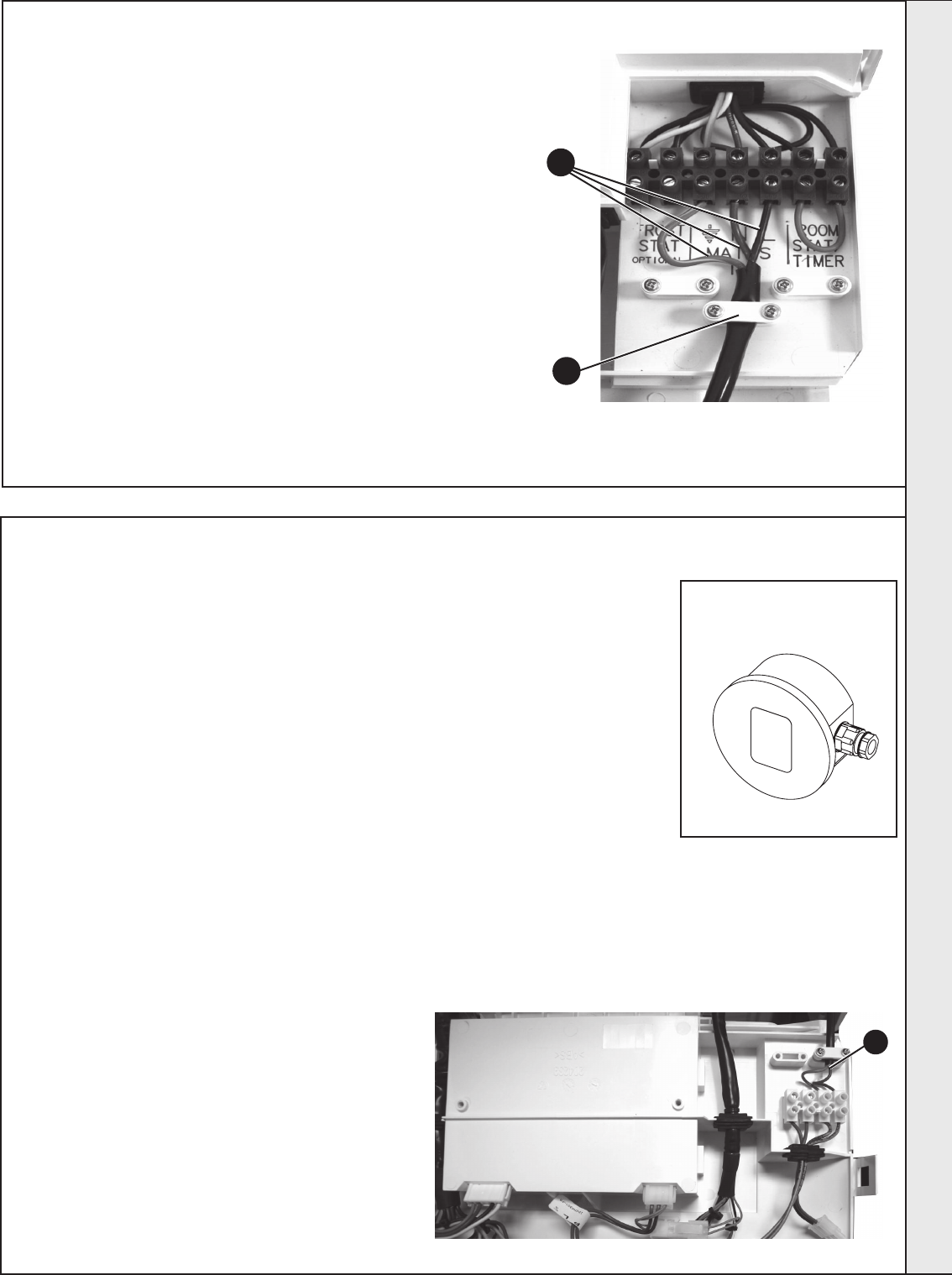
27
INSTALLATION
Keston Combi - Installation and Servicing
26
REPLACING PRE-FITTED MAINS CABLE
If it is necessary to use an alternative mains cable to the one pre-tted
then use the following guide.
Replacement wiring should comply with notes in Frame 23.
1. Isolate the mains supply to the boiler.
2. Remove the front panel. Refer to Frame 39.
3. Swing the control box down into the service position. Refer to
frame 45.
4. Remove the live, neutral and earth wires from the terminal block.
5. Loosen the cable clamp and withdraw the mains cable.
6. Route replacement cable back through the cable clamp and
grommet and re-tighten to provide cord anchorage.
7. Connect the live, neutral and earth wires to the terminal strip.
When making the mains electrical connections to the boiler it is
important that the wires are prepared in such a way that the earth
conductor is longer than the current carrying conductors, such that
if the cord anchorage should slip, the current carrying conductors
become taut before the earthing conductor.
8. Swing the control box back up into the operating position and re-t
the front panel ensuring a good seal is made.
5
4
FITTING THE KIT
Note. A timer should be tted to the system so that CH will be switched off when appropriate.
Fitting the sensor
The air sensor should be located on an external wall of the building to be heated. Fix the sensor to a north/north-east facing wall
to avoid direct radiation from the sun. The air sensor should be located to avoid any heating effect from the boiler ue.
To x the air sensor to the wall, unscrew the sensor box plastic cover and screw/plug the sensor body to the wall.
Wire a twin core 0.5mm2 cable from the sensor to the boiler through an RH grommet located on the underside of the boiler. Cable
length between sensor and boiler should be no greater than 20m. Note that this connection is safety extra low voltage. It is not
necessary for the person carrying out the wiring to be approved to Part P of the Building Regulations.
Avoid running this cable alongside mains voltage cables.
Wiring the Weather Compensation Kit to
the Keston Combi.
1. Isolate the electricity supply to the boiler.
2. Remove the boiler front panel (refer to
boiler installation instructions).
3. Hinge down the control box.
4. Connect the sensor wiring into the RHS of
the 4 way terminal block and secure with a
cable clamp.
5. Re-assemble in reverse order.
27
FITTING THE WEATHER COMPENSATION KIT - SUPPLIED AS STANDARD
This kit provides the facility to apply outside air temperature control to the boiler
water ow temperature which provides energy savings. The outside sensor provided
measures outside air temperature and sends a signal to the boiler, which adjusts the
maximum boiler ow temperature in response. If outside air temperature is greater than
the system design temperature, the boiler ow temperature is reduced providing running
cost savings. The boiler will operate in the condensing mode more frequently increasing
savings.
Once the sensor is tted it is automatically detected.
The sensor operation may be congured by adjustment of the boiler operating
parameters, if necessary.
Kit Contents
A. Outside Air Sensor
A
3G10011
4
INSTALLATION
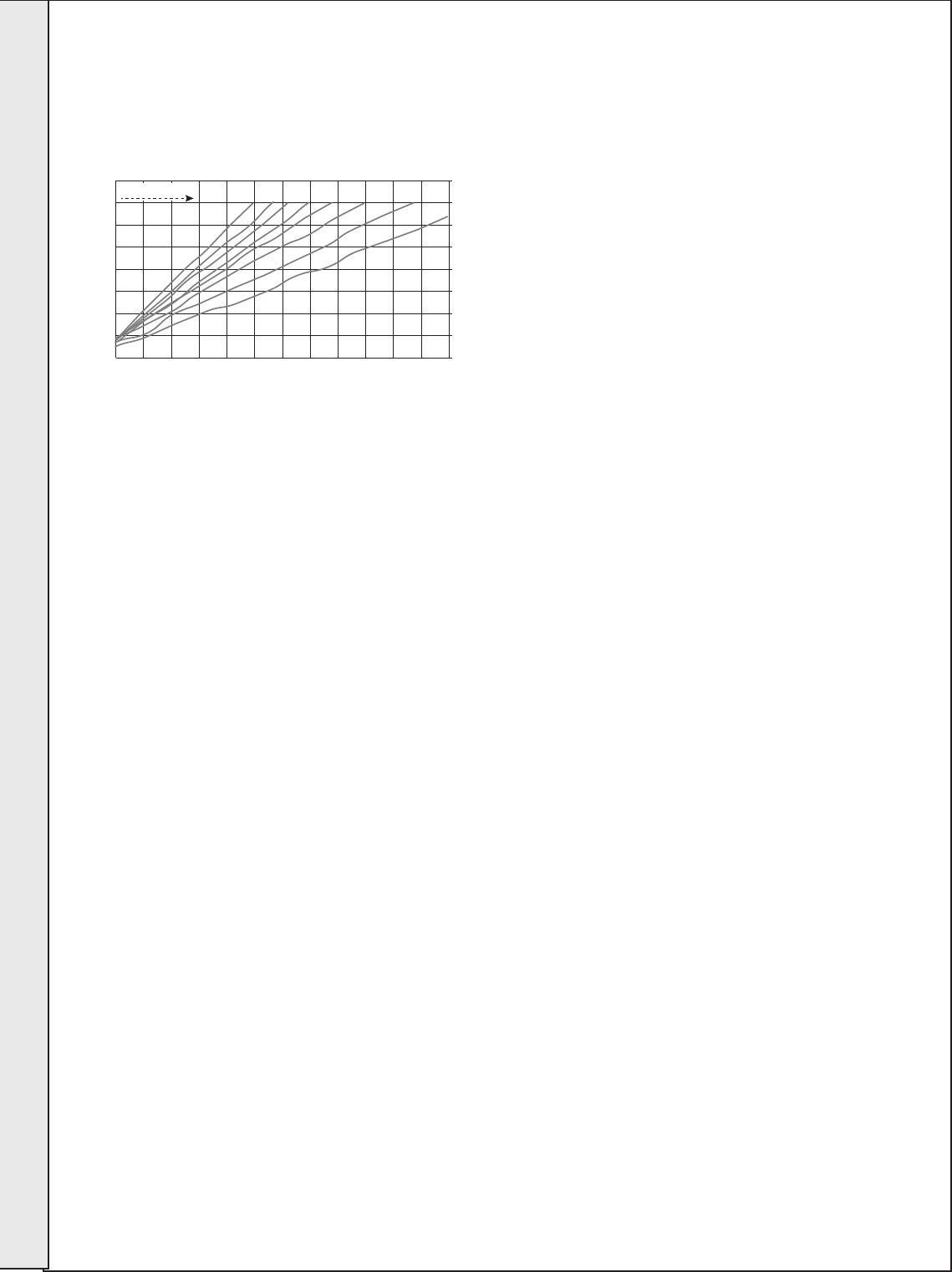
28
INSTALLATION
Keston Combi - Installation and Servicing
28
CH OPERATION
The On and Off time control of central heating should be controlled by a separate timer. This can be a standard unit or either of
the options available from Keston Combi range.
During programmed On times the Central Heating Radiator Flow Temperature is controlled by the boiler relative to the Outside
Temperature as shown in the following diagram.
The Room temperature can be adjusted using the Central Heating Temperature Control Knob on the boiler as follows.
Essentially rotating the knob clockwise increases the room temperature and rotating the knob anti-clockwise decreases the room
temperature.
If the Central Heating Temperature Control Knob is rotated fully clockwise then for an Outside Temperature of 15°C a Flow
Temperature of 40°C will be provided. For an Outside Temperature of 0°C a Flow Temperature of 78°C will be provided with the
relationship varying lineally in between these 2 points (line on the graph 2.5)
If the Central Heating Temperature Control Knob is in its mid position then for an Outside Temperature of 15°C a Flow
Temperature of 36°C will be provided. For an Outside Temperature of 0°C a Flow Temperature of 65°C will be provided with the
relationship varying lineally in between these 2 points (line on the graph between 1.6 and 1.8)
If the Central Heating Temperature Control Knob is rotated fully anti-clockwise then for an Outside Temperature of 15°C a Flow
Temperature of 30°C will be provided. For an Outside Temperature of 0°C a Flow Temperature of 44°C will be provided with the
relationship varying lineally in between these 2 points (line on the graph 1.0)
20 10 0 -10 -20 -30 -40
30
20
40
50
60
70
80
90
100
Weather Compensation Control / Room Setpoint = +20ºC
Outside Temperature [ºC]
CH Temperature Setpoint [C]
Heating slope
2.5 2.2 2.0 1.8 1.6 1.4 1.2 1.0
INSTALLATION
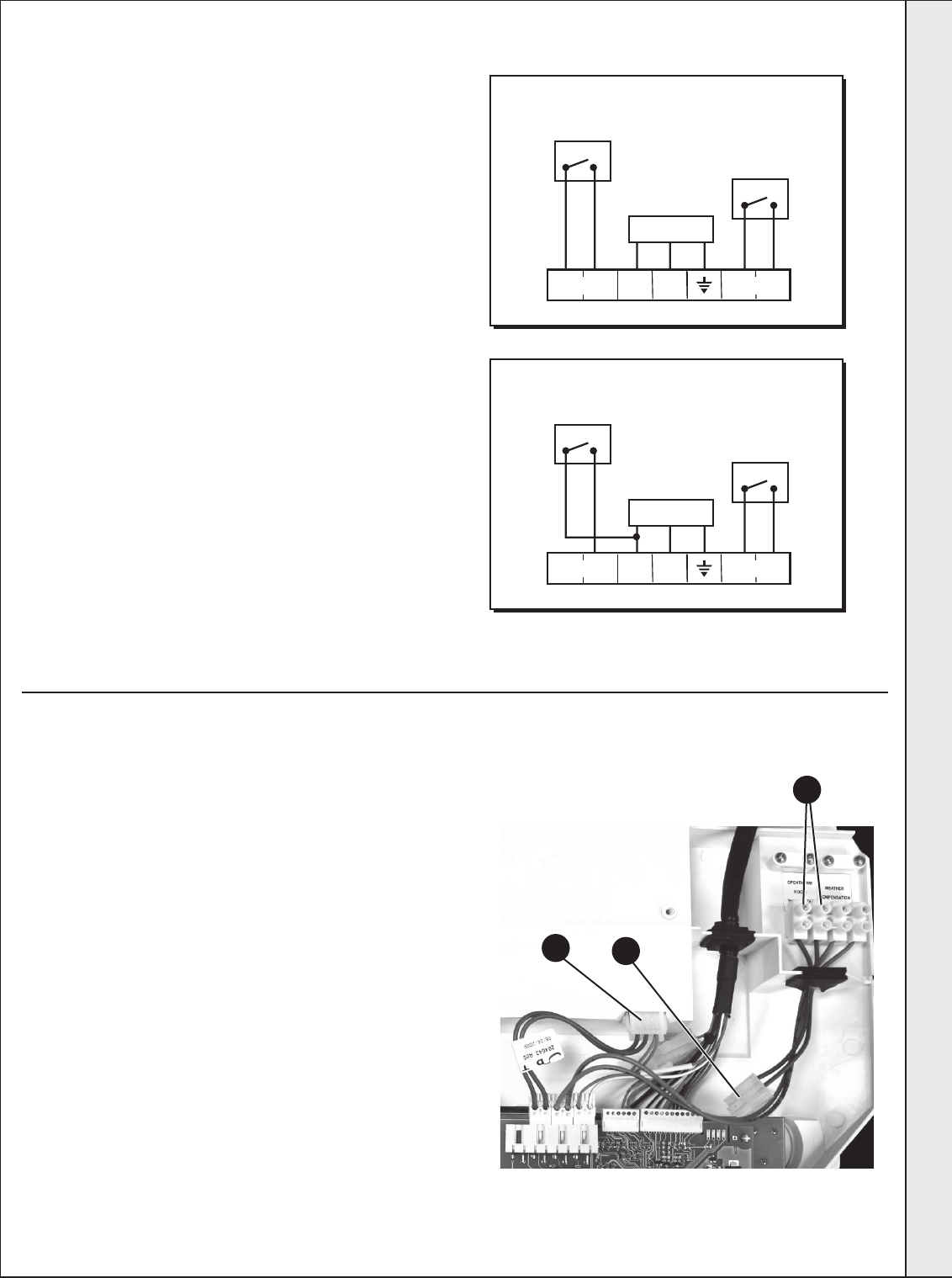
29
INSTALLATION
Keston Combi - Installation and Servicing
29
EXTERNAL ELECTRICAL CONTROLS
Wiring External to the Boiler
The fuse rating should be 3A.
Wiring external to the boiler MUST be in accordance with
the current I.E.E. (BS.7671) Wiring Regulations and any
local regulations.
Frost Protection
If parts of the pipework run outside the house or if the
boiler will be left off for more than a day or so then a frost
thermostat should be wired into the system.
This is usually done at the programmer, in which case the
programmer selector switches are set to OFF and all the
other controls MUST be left in the running position.
The frost thermostat should be sited in a cold place but
where it can sense heat from the system.
Note. If the boiler is installed in a garage it may be
necessary to t a pipe thermostat, preferably on the return
pipework.
Earths are not shown for clarity but must never be
omitted.
OpenTherm Programmable Room Temperature Control
Note. These terminals MUST ONLY be connected to an
OpenTherm Controller, (such as the Keston Chronothern Room
Controller (c.17.4.21.00.0). Connecting any other device /
control wiring may destroy the primary PCB.
1. Isolate the mains supply to the boiler.
2. Remove the front panel. Refer to Frame 39.
3. Swing the control box down into the servicing position. Refer
to Frame 45.
4. Remove the control box cover. Refer to Frame 57, no’s 3
and 4.
5. Unclip the 3 way in-line connector containing 2 purple wires
and 2 red wires.
6. Connect this 3 way connector to the 3 way connector
containing 2 purple wires wired from the 4 way terminal
block.
7. Connect the two wires from the OpenTherm Programmable
Room Temperature Control to the two LH connections of the
terminal block as shown.
8. Re-assemble in reverse order.
56
7
3G9990a
LN
Room Stat Frost Stat
Mains In
Programmable Room Stat
LN
Room Stat Frost Stat
Mains In
Use of General Live for Room Stat
Programmable
Room
Stat
Room
Stat
Optional
Frost Stat
Optional
Frost Stat
INSTALLATION
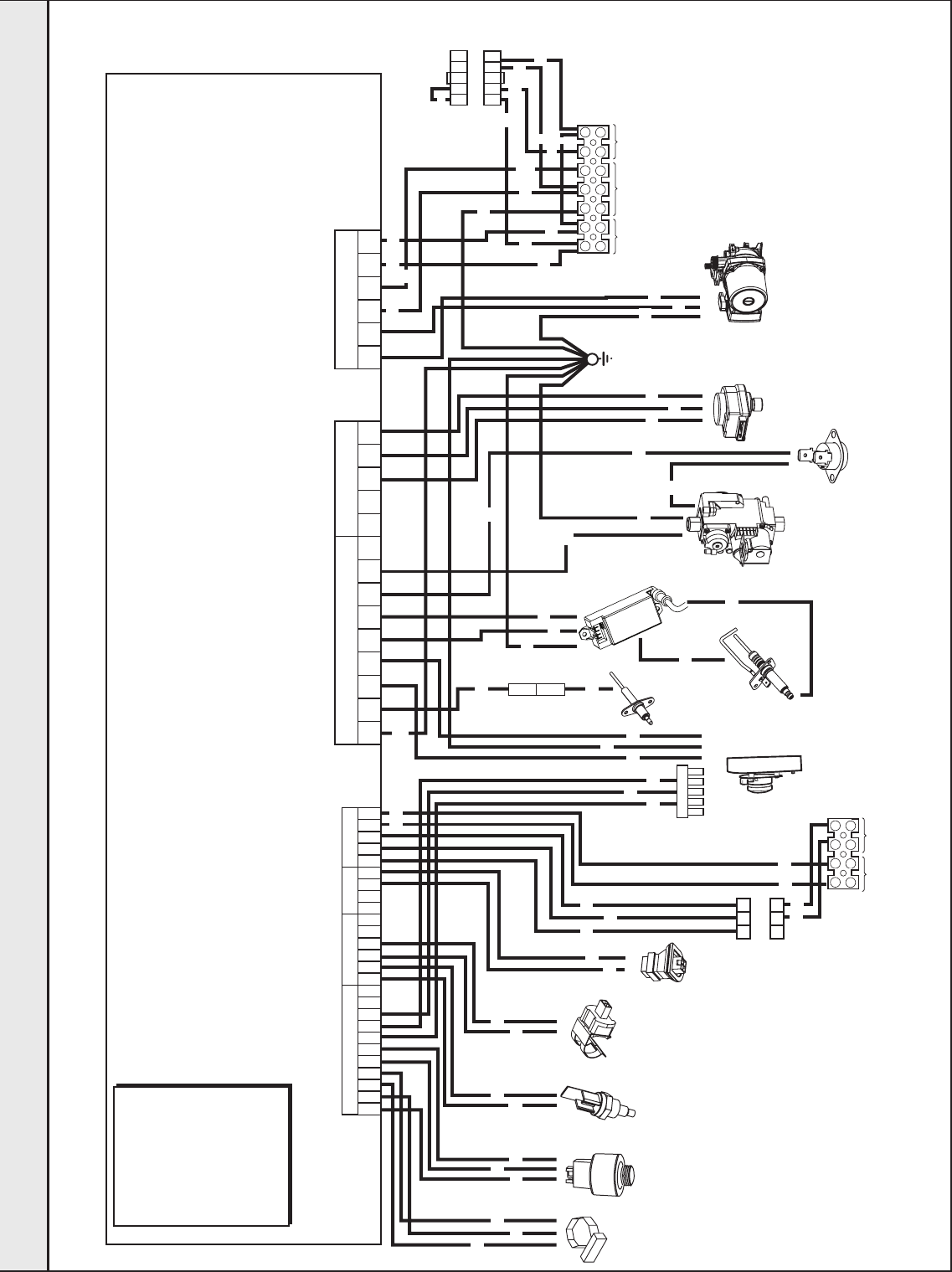
30
INSTALLATION
Keston Combi - Installation and Servicing
30
WIRING DIAGRAM
Flue
Thermostat
Timer
r
b
bk
or
bk
1
X1X2X3
X5X6X8
2345612345123456879
1234123456
X7
12345123456789
1011
Water
Flow
Turbine
p
bk
r
r
bk
Water
pressure
Sensor
PCB
Flow
Thermistor
Return
Thermistor
Earth
y/g
br
b
bk
bk
r
b br
y/g
Service
Connector
Selv Timer
- blue
- black
- brown
- red
- pink
- yellow
- white
- yellow/green
- grey
- orange
- violet
b
bk
br
r
p
y
w
y/g
g
or
v
KEY
p y
Flame
Sensor
Electrode
Fan
bk
bk
b
y/g
br
y/g
y/g
Spark
Electrode
Spark
Generator
bk
Gas
Valve
b
bk
bk
bk
br
bk b
Divertor
Valve Pump
y/g
Frost
Stat
Main
Supply
Room
Stat
r v
bk
bk v
g
bk
g
bk
b
b
y/g
br
br
bk
bk
bk
bk
r
r
r
r
b
b
r
bk
bk
Weather
Compensation
Opentherm
Room Thermostat
bk
INSTALLATION
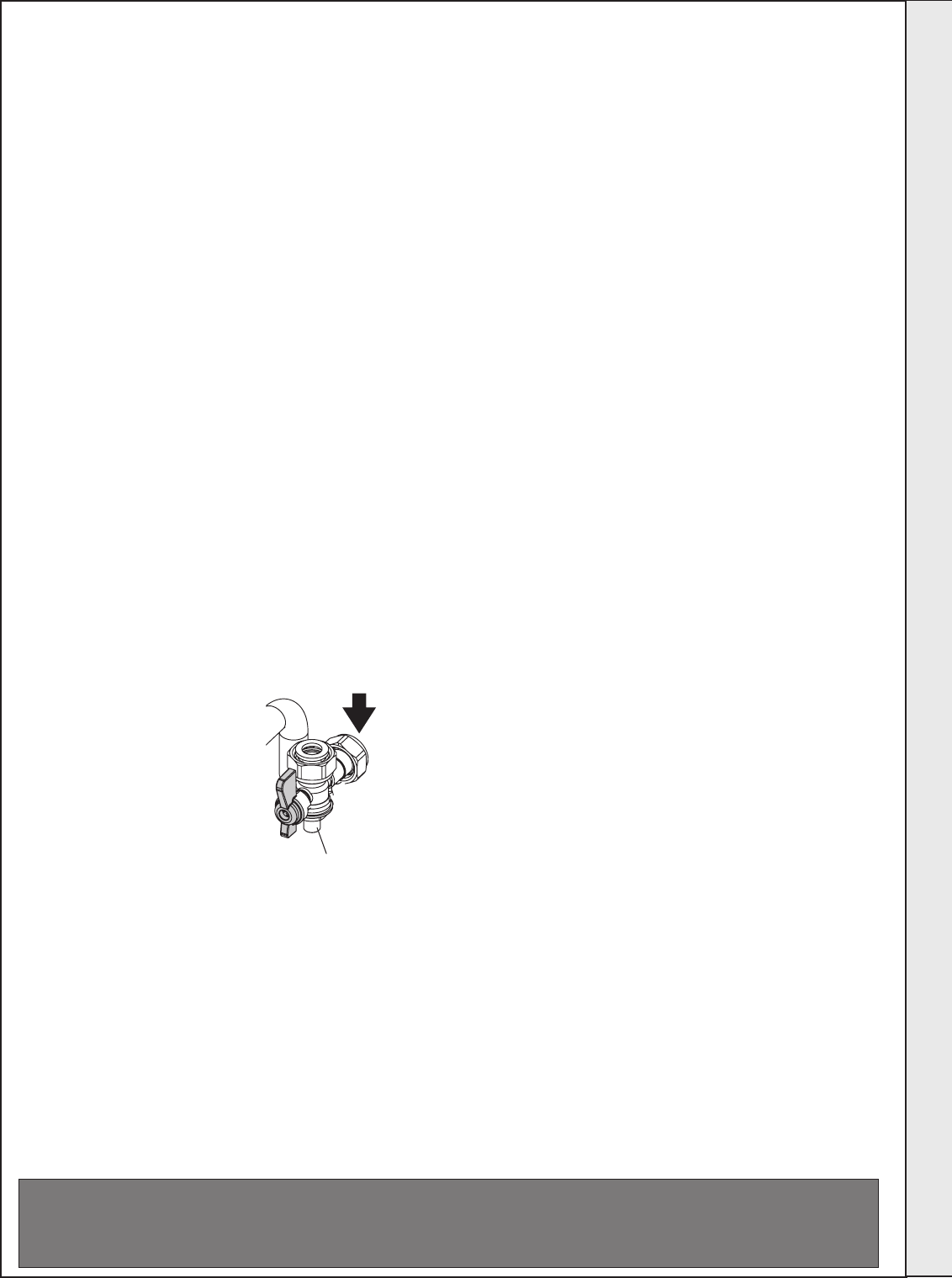
31
INSTALLATION
Keston Combi - Installation and Servicing
WARNING. Whilst effecting the required gas tightness test and purging air from the gas installation,
open all windows and doors, extinguish naked lights and DO NOT SMOKE.
A. Electrical Installation
1. Checks to ensure electrical safety should be carried out by a
competent person.
2. ALWAYS carry out the preliminary electrical system checks,
i.e. earth continuity, polarity, resistance to earth and short
circuit, using a suitable test meter.
3.
After wiring the boiler, all grommets in the bottom panel MUST
be in place to ensure that the boiler case sealing is maintained.
B. Gas Installation
1. The whole of the gas installation, including the meter,
should be inspected and tested for tightness and purged in
accordance with the recommendations of BS. 6891.
In IE refer to IS.813:2002.
2. Purge air from the gas installation by the approved methods
only.
31
COMMISSIONING AND TESTING
GENERAL
Please Note: The combustion for this appliance has
been checked, adjusted and preset at the factory for
operation on the gas type dened on the appliance
data plate. No measurement of the combustion is
necessary. DO NOT adjust the air/gas ratio valve.
Having checked:
- That the boiler has been installed in accordance
with these instructions.
- The integrity of the ue system and the ue seals,
as described in the Flue Installation section.
Proceed to put the boiler into operation as follows:
CHECK THE OPERATIONAL (WORKING) GAS
INLET PRESSURE
Set up the boiler to operate at maximum rate by
opening hot tap to maximum
ow.
With the boiler operating in
the maximum rate condition
check that the operational
(working) gas pressure at
the inlet gas pressure test
point complies with the
requirements - refer to “Gas
Supply” on page 8.
Ensure that this inlet pressure
can be obtained with all other
gas appliances in the property
working.
Safety
Drain
Valve
Black
Handle Yellow
Handle
Black
Handle
Blue
Handle
3G9927a
CH Flow
DHW Outlet
Gas Supply
CH Return
DHW Inlet
Gas Pressure
Test Point
ATTENTION !
IT IS A CONDITION OF THE MANUFACTURERS WARRANTY THAT THE BENCHMARK
COMMISSIONING CHECKLIST IS FULLY COMPLETED AND LEFT WITH THE APPLIANCE
“SERVICE REQUIRED” Function
When the boiler has been installed for more than 1 year the following
message will appear on the screen:
“12 Month Service Interval Request”
To cancel this message move the CH Temperature Control Knob away
from the maximum position. Then move the knob to the maximum
position, away from the maximum position and back into the maximum
position again within 3s.
“Service Mode” will be shown on the screen, this will disappear after
5 mins.
“AIR VENTING” Function
The Air Venting function should not be required for this boiler.
• The Air Venting function operates for 5 mins as follows:
• Pump On for 50s, Pump Off for 10s (repeats 5 times)
• Diverter valve in hot water position for 30s then CH position for
30s (repeats 5 times)
• The function ends automatically.
To activate the Air Venting function proceed as follows:
Turn the DHW temperature control knob fully anti-clockwise.
Turn the CH ow temperature control knob fully anti-clockwise.
Turn and hold the Mode Knob in the Reset position for more than 5s
and then turn it to the Winter or Summer position
The boiler will display “Installer Mode”
If no faults have occurred the boiler will display “No Faults”
If any faults have occurred a list of faults up to a maximum of 10
including the type of fault and how long ago it occurred will be shown.
The boiler will then display the current values of ow temperature,
return temperature, domestic hot water temperature, DHW ow rate
and diverter valve position.
Next the boiler will display
“Venting Boiler OFF” - “For Activation change Pre-heat Mode”
Now move the pre-heat knob and the Air Venting Function will begin,
the boiler will display:
“Venting Boiler Off” - “Pump and Diverter Valve Cycling” -
Duration 5 mins” - “Reset to End”
As part of the commissioning process, the combustion of this appliance must be checked
and the Benchmark Checklist completed. A ow chart to assist is provided on page 71.
INSTALLATION
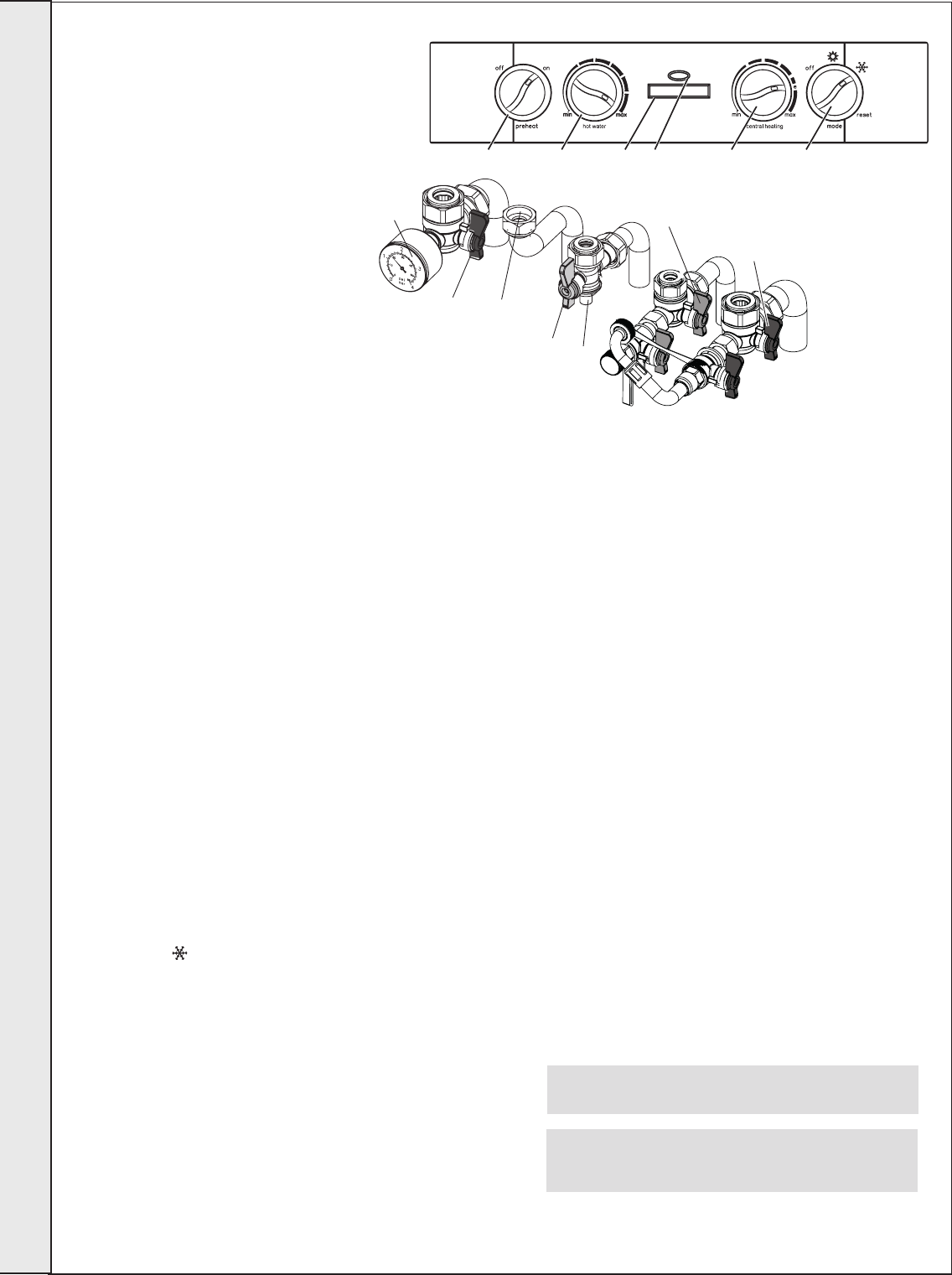
32
INSTALLATION
Keston Combi - Installation and Servicing
32
INITIAL LIGHTING
1. Check that the system has been lled and that the boiler is not
airlocked. Ensure the automatic air vent cap is open. Refer to
Frame 22.
Note.
It is important the burner is not operated before the system is
fully vented of air. If it is necessary to operate the appliance
pump to assist venting of the air this must be done with the gas
service cock turned off.
2. Ret the boiler front panel. Refer to Frame 39.
3. Check that the drain cock is closed and that the CH and DHW
isolating valves (M, L and G) are OPEN.
4. Check that the electrical supply is OFF.
5. Check that the boiler mode control knob (D) is off.
6. Check that the gas service cock (K) is OPEN.
7. Slacken the screw in the inlet pressure test point (J) and
connect a gas pressure gauge via a exible tube.
8. Switch the electricity supply ON and check all external controls
are calling for heat.
CENTRAL HEATING
9. Set the CH temp control (C) to max and turn the mode control
knob (D) to , ensure the timer/room stat are on. The boiler
control will now go through its ignition sequence until the
burner is established.
10. If the boiler does not light the following messages will be
displayed in rotation “Ignition Lockout” - “1 Check
other gas appliances” - “2 Reset boiler” - “3 Contact
installer”. After 5 attempts the boiler will lock out and carry
on displaying the messages. Reset the boiler (refer to Frame
40B). The boiler will repeat its ignition sequence. If reset
occurs 5 times within 15 minutes then “Too many resets”
will be shown. If power is removed this will be reset.
When the burner is established the BLUE ‘Burner On’ neon
(F) will be illuminated, the LCD will display “Central Heating”
and “Radiator Temp XXoC”.
DOMESTIC HOT WATER
11. With the boiler ring, set the DHW Temp Control knob (B)
to maximum and fully open a DHW tap.
The boiler will continue to run and the display (E) will
show “Hot Water” - “Temperature XXoC” - “High
Efciency”.
12. Ensure that with the boiler operating the dynamic gas
pressure is able to obtain maximum output. Refer to Table
2.
IMPORTANT
The gas input to the burner is regulated by the gas valve
accordingtotheairowproducedbythefan.ItisNOT
user-adjustable. Any interference to sealed settings on
the gas valve will adversely affect operation and render
our warranty void.
For additional gas supply information refer to “Gas Supply” on
page 8
13. Turn off the DHW tap.
continued. . . . .
Note. The temperature displayed “XXºC” is that
measured at that moment, not the set temperature.
Note. The boiler incorporates a fan overrun cycle
which MUST NOT be prematurely interrupted by
isolation of the mains electricity supply.
Legend
A. Pre-heat On/off
B. DHW temperature control
C. CH temperature control
D. Off/Summer/Winter/Reset Control
E. Boiler Status
F. Burner ‘on’ indicator
G. CH Flow Isolating Valve
H. Pressure Gauge
J. Gas Inlet Pressure Test Point
K. Gas Service Cock
L. DHW Inlet Valve
M. CH Return Isolating Valve
N. DHW Outlet
G
H
J
L
N
M
K
A B E F C D
INSTALLATION
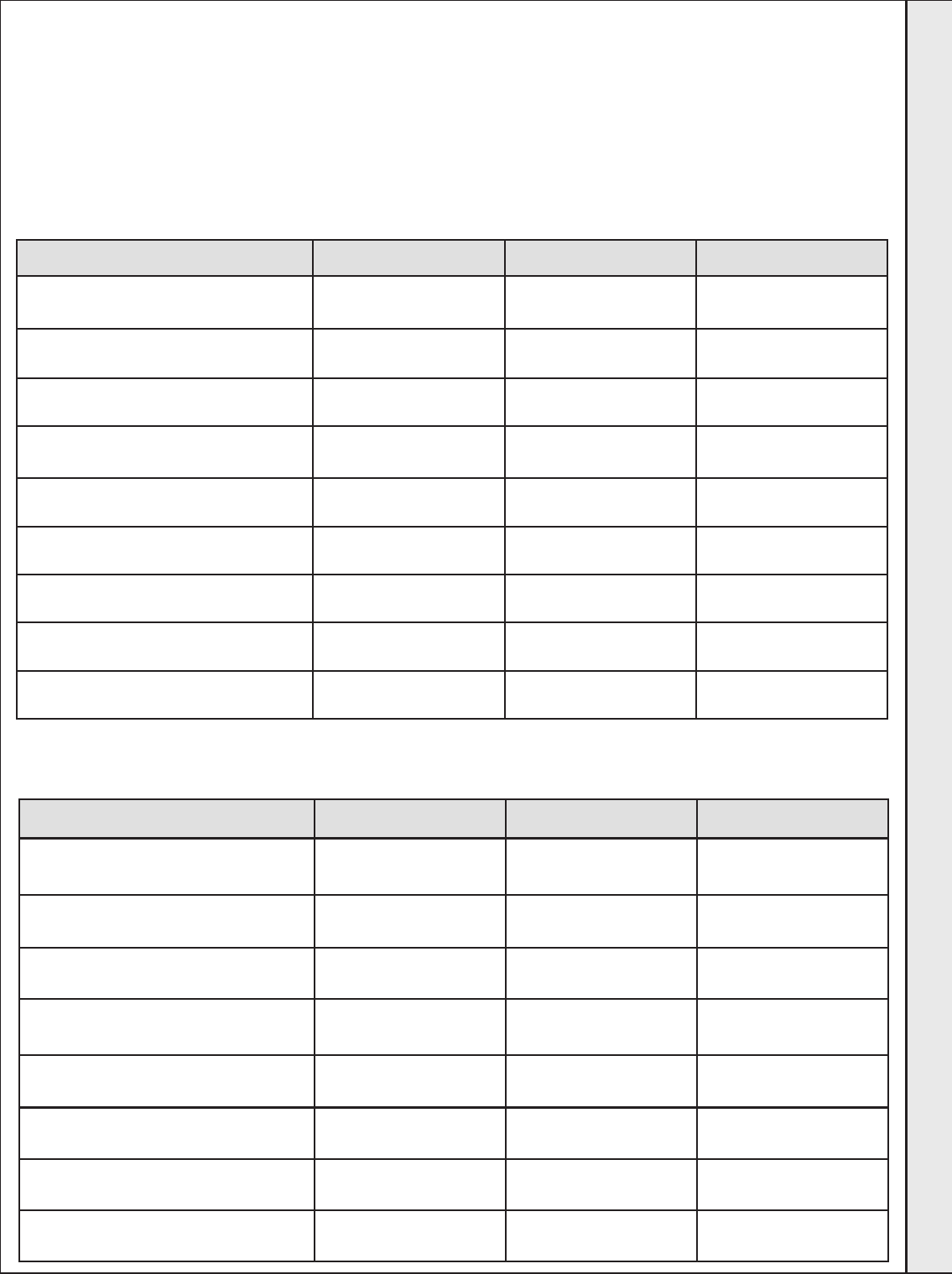
33
INSTALLATION
Keston Combi - Installation and Servicing
THE DISPLAY
The user control has one neon and one display to inform the user about the status. The display will show the status of the boiler.
The neon will show the status of the ame. If no ame is detected the neon is off. When the ame is detected the neon will be lit
permanently.
The display scrolls through a maximum of 3 messages under any operational condition as shown below.
Notes: Boiler frost protection - boiler res if temperature is below 5º C.
The temperatures shown below are for illustration purposes only. The measured temperatures will be shown on the boiler.
33
INITIAL LIGHTING . . . . CONT’D
NORMAL OPERATION MESSAGE 1 MESSAGE 2 MESSAGE 3
Mode knob in standby position and no
heat demand
Standby mode For hot water turn mode
knob clockwise
For central heating turn
mode knob clockwise twice
Mode knob in summer position and no
heat demand
Summer mode For central heating turn
mode knob clockwise
Mode knob in winter position and no
heat demand
Winter mode Timer or room stat off
Domestic hot water operation Hot water Te mperature 64ºC High efficiency
Central heating operation Radiator Temp 80ºC High efficiency
Pre-heat operation Pre heat
Central heating
Temperature 59ºC High efficiency
Boiler frost protection Boiler frost protection Temperature 5ºC
Pump overrun Pump overrun
Fan post-purge Fan post-purge
High efficiency
Note. High efficiency will not be shown for central heating operation if the central heating flow temperature knob is set to greater than 73ºC.
3G9711
DISPLAY FUNCTIONS IN NORMAL OPERATION
NORMAL OPERATION MESSAGE 1 MESSAGE 2 MESSAGE 3
Pre-heat knob moved to off position Pre heat off
Pre-heat knob moved to on position Pre heat on
DHW temperature knob moved 64ºC DHW temp Hot water
temperature 64ºC
CH temperature knob moved 80ºC CH temp Maximum radiator
temperature 80ºC
May not be achieved for
high flow rates in winter
Mode knob moved to standby position Central heating off Hot water off
Mode knob moved to summer position Summer mode
Standby mode
Central heating off Hot water on
Mode knob moved to winter position Winter mode Central heating on
Mode knob moved to reset position Reset
Hot water on
3G9712
DISPLAY FUNCTIONS - SETTINGS CHANGED
INSTALLATION
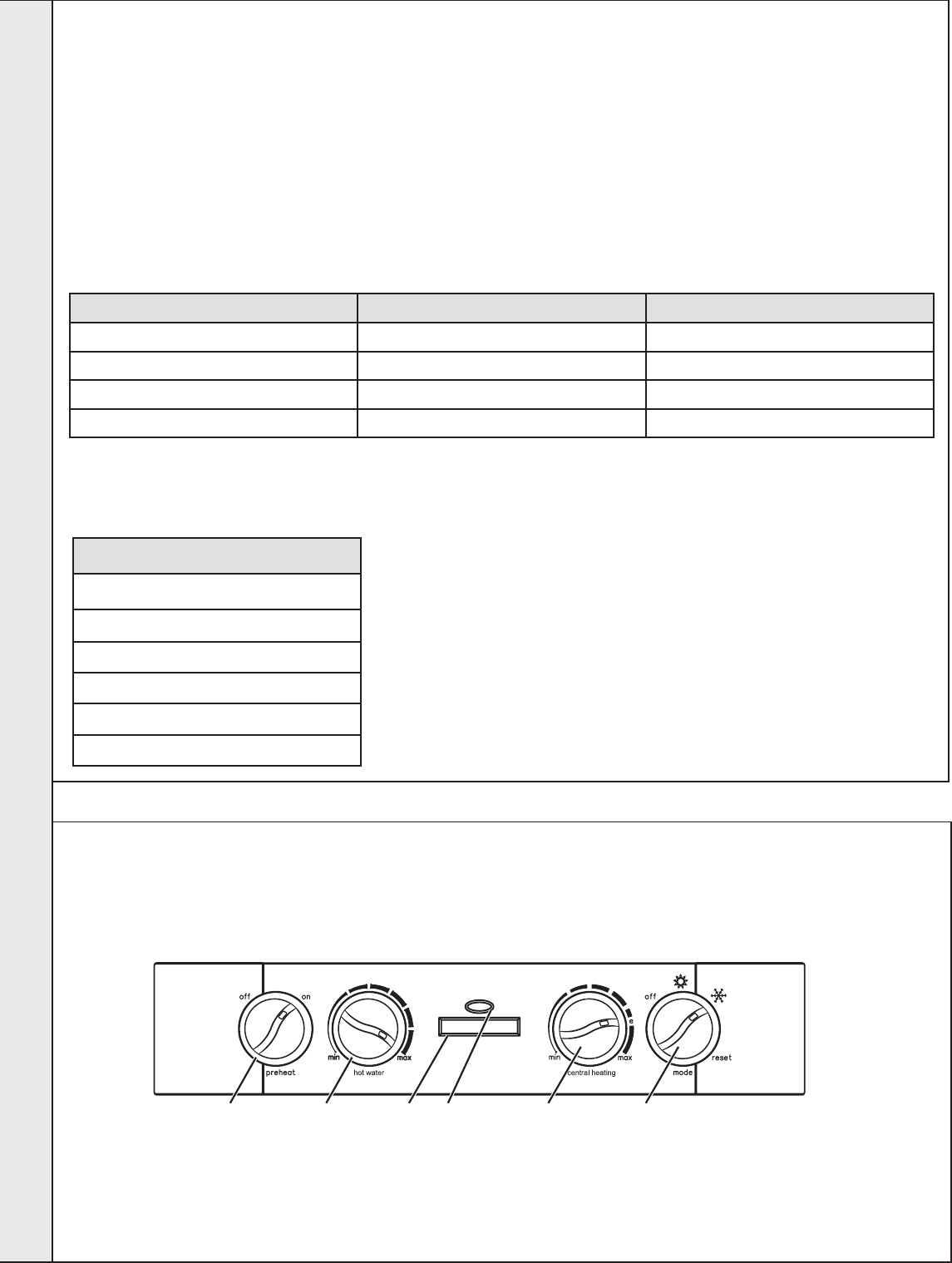
34
INSTALLATION
Keston Combi - Installation and Servicing
34
INITIAL LIGHTING . . . . CONT’D
INSTALLER MODE
Installer Mode is entered as follows:
1. Turn the DHW temperature control knob full anti-clockwise.
2. Turn the CH ow temperature control knob full anti-clockwise.
3. Turn and hold the mode knob in the reset position for more than 5 secs and then turn it to the Winter or Summer position.
The boiler will display “Installer mode”.
If no faults have occurred the boiler will display “No faults”.
If any faults have occurred a list of faults up to a maximum of 10 including the type of fault and how long ago it occurred will be
shown in the following format.
MESSAGE 1 MESSAGE 2 MESSAGE 3
LIST OF FAULTS
Fault 1 (latest fault) Low water pressure 2 days ago
Fault 2 No water flow lockout
Fault 3 Overheat lockout 384 days ago
78 days ago
3G9713a
The boiler will then display the current values of
ow temperature, return temperature, domestic hot
water temperature, DHW ow rate and diverter valve
position in the following format:
MESSAGE 1
CURRENT VALUES
Flow temp 80ºC
Return temp 60ºC
DHW temp 64ºC
DHW flow rate 8 l/min
Diverter valve DHW position
3G9714
Note.
If you would like to hold one of the values on the display to watch
its behaviour then turn the reset knob to the reset position while it is
displayed and hold it there.
Finally the display will operate in one of two modes. If there is a
fault then more extensive corrective actions will be shown than are
usually displayed for the end user. If there is not a fault then the
information displayed for current operating states will also be more
extensive than is usually displayed for the end-user (pre-purge,
ignition and post purge for example).
Installer mode automatically ends after 10 mins or by moving the
mode knob to the standby position.
35
RESET PROCEDURE
To reset boiler, turn the mode control knob (D) to reset position and immediately turn knob back to required setting. The boiler will
repeat the ignition sequence if a heat demand is present.
Legend
A. Pre-heat On/off
B. DHW temperature control
C. CH temperature control
D. Off/Summer/Winter/Reset Control
E. Boiler Status
F. Burner ‘on’ indicator
A B E F C D
INSTALLATION
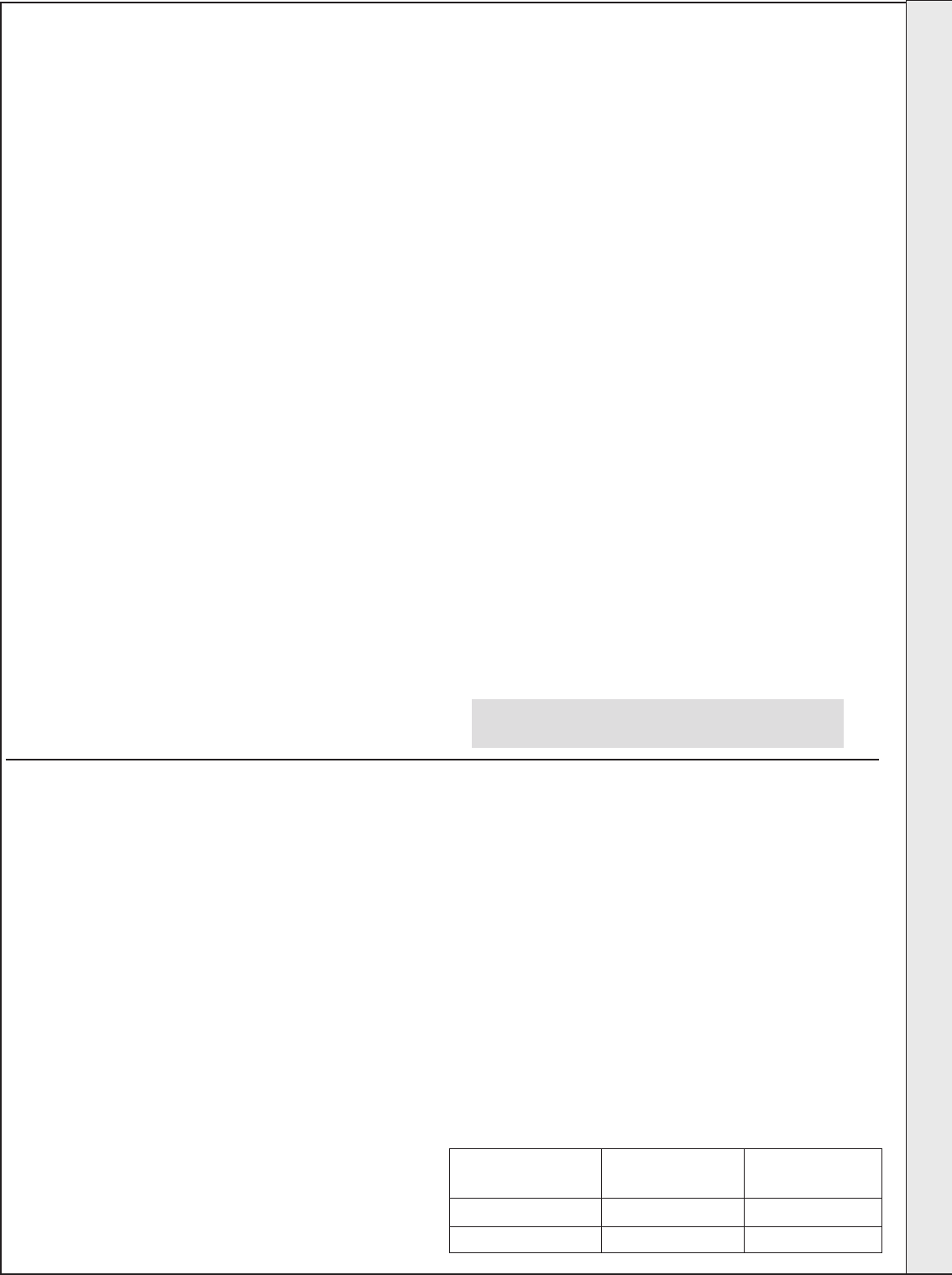
35
INSTALLATION
Keston Combi - Installation and Servicing
INSTALLATION
36
GENERAL CHECKS
DOMESTIC HOT WATER (DHW) MODE
1. Fully open all DHW taps in turn and ensure that water ows
freely and that the mode knob is either in summer or winter
position. The boiler will display
“Hot Water” - “Temperature XXoC” - “High
Efciency”
where the temperature shown is the current Domestic Hot
Water temperature.
When the burner is lit the light above the display will be on.
2. Close all taps except the furthest one from the boiler and
check that the boiler is ring at maximum rate.
This is factory set to give a DHW temperature rise of
approximately 35oC at the ow rate stated on page 6 under
“operation”.
3. Reduce the DHW draw-off rate to about 3 l/min (0.7gpm)
and check that the boiler modulates to deliver DHW at
approximately 64oC (with the DHW temperature control
knob set to maximum).
4. Close the DHW tap and check that the main burner
extinguishes. The pump should overrun for 60 seconds
during which the boiler will display “Pump overrun”. The
fan will then continue to run for a further 3 minutes during
which the boiler will display “Fan Post Purge” after which
the boiler will display one of the following “Standby mode”
- “Summer mode” - “Winter Mode” depending on the
position of the mode knob.
Note. On systems in excess of 2 bar inlet pressure a water
pressure governor may be required to prevent water noise.
Make the following checks for correct operation in:
CH & DHW MODE
1. Ensure the CH controls are calling for heat and that the
boiler mode knob is in the winter position and the CH ow
temperature control knob is in the maximum position. The
Boiler will display
“Central Heating” - “Radiator Temp XXC”
where the temperature shown is the current ow temperature.
When the burner is lit the light above the display will be on.
2. Fully open the DHW tap and check that hot water is delivered.
The boiler will display “Hot water” - Temperature XXoC”
- High Efciency”
3. Gas Rate
Check the boiler gas rate when the boiler is at full DHW
output. Check at the gas meter, with no other appliance in
use. Refer to Tables 2 and 3 for gas rates.
4. Close the DHW tap. The burner should remain on and the
boiler will display “Central heating” - “Radiator temp
XXC”.
5. Set the central heating external controls to off. The burner
will go off and the fan and pump continue to run for 4 minutes.
The boiler will display “Pump overrun” after which the
boiler will display one of the following: “Standby mode”
- “Summer mode” - “Winter mode” depending on the
position of the mode knob.
6. Check the correct operation of the timer (if tted) and all other
system controls. Operate each control separately and check
that the main burner responds.
WATER CIRCULATION SYSTEM
1. With the system COLD, check that the initial pressure
is correct to the system design requirements.
For pre-pressurised systems, this should be 1.0 bar.
2. With the system HOT, examine all water connections
for soundness. The system pressure will increase
with temperature rise but should not exceed 2.5 bar.
3. With the system still hot, turn off the gas, water and
electricity supplies to the boiler and drain down to
complete the ushing process.
Note: A ushing solution should be used during the
ushing procedure. Flushing solutions: Fernox
Superoc, Sentinel X300 (new systems) or X400
(existing systems). Refer to Frame 5.
4. Rell and vent the system, add inhibitor (see Frame
5), clear all air locks and again check for water
soundness.
5. Reset the system initial pressure to the design
requirement.
6. Balance the system. Refer to Frame 4.
7. Check the condensate drain for leaks and check that
it is discharging correctly.
WATER TEMPERATURES
Temperatures can be selected using the CH and DHW thermostats.
Knob Setting CH Flow Temp DHW Outlet Temp
oC (oF) oC (oF)
Max 80 (176) 64 (147)
Min 45 (113) 40 (104)
8. Finally, set the controls to the User’s requirements.
Notes.
1. If the pump has not operated in the last 24 hours it will run
briey to prevent seizure
2. If the diverter valve has not operated in the last 24 hours
it will be operated briey to prevent seizure. These two
operations will not occur at the same time.
Note. The temperature displayed “XXºC” is that
measured at that moment, not the set temperature.
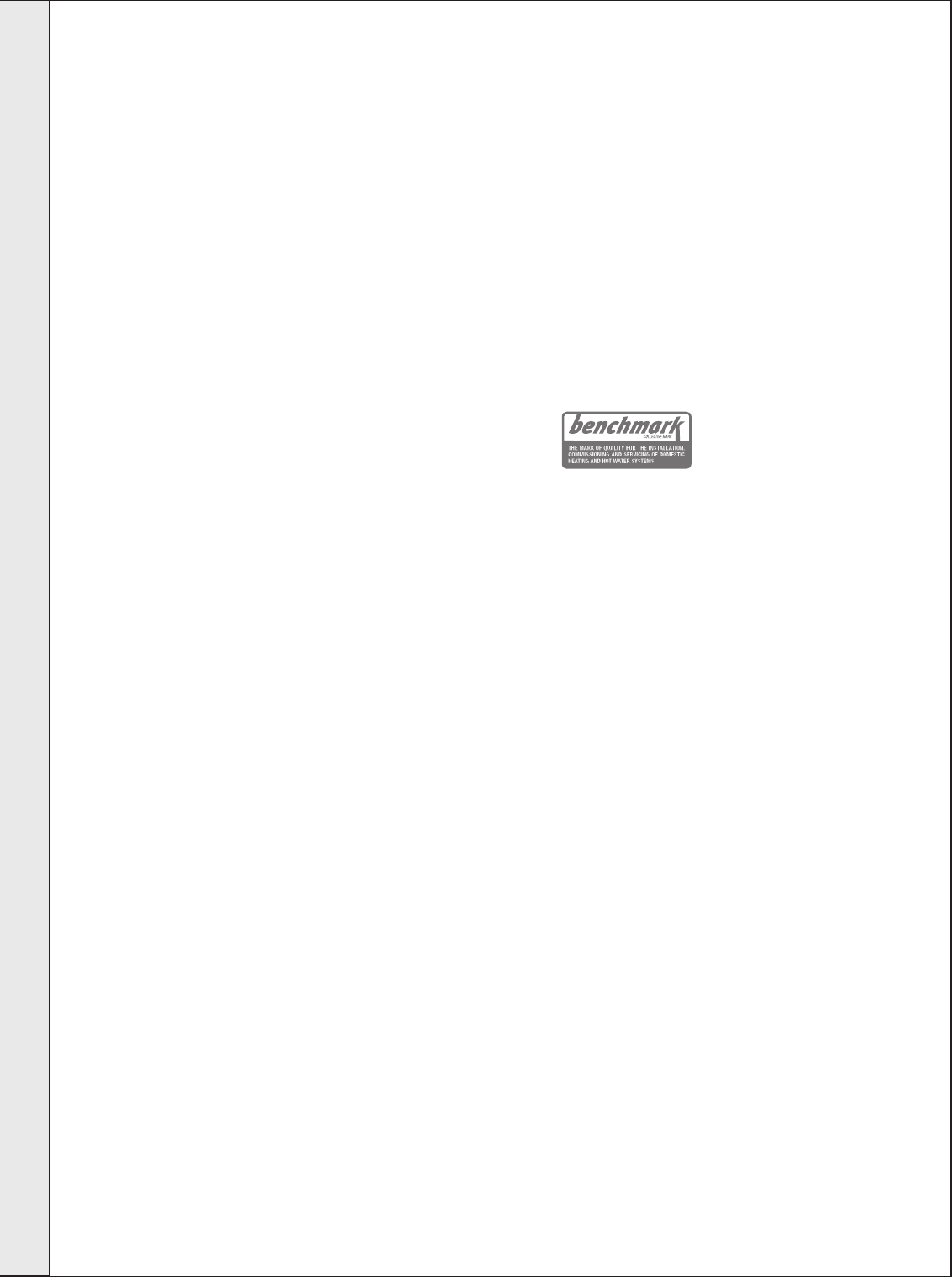
36
INSTALLATION
Keston Combi - Installation and Servicing
37
HANDING OVER
8. Loss of system water pressure
Explain that the dial underneath the boiler indicates the
central heating system pressure and that if the normal COLD
pressure of the system is seen to decrease over a period of
time then a water leak is indicated. Explain the re-pressurising
procedure and if unable to re-pressurise or if the pressure
continues to drop a registered local heating installer should be
consulted.
9. Explain boiler reset procedure (refer to Frame 35).
10. After installation and commissioning please complete
the Commissioning Checklist before
handover to the customer. For IE, its is necessary to complete
a “Declaration of Conformity” to indicate compliance to I.S.
813:2002.
IMPORTANT
11. A comprehensive service should be carried out ANNUALLY.
Stress the importance of regular servicing by a Gas Safe
Registered Engineer. In IE servicing work must be carried out
by a Registered Gas Installer (RGII).
12. Inform the householder of the guarantee form and the
requirement to register it to receive the full benet of the
warranty.
1. Make the householder aware that the user instructions
are located in the pocket in the drop down door and
explain his/her responsibilities under the relevant national
regulations.
2. Explain and demonstrate the lighting and shutting down
procedures.
3. The operation of the boiler and the use and adjustment
of all system controls should be fully explained to
the householder, to ensure the greatest possible fuel
economy consistent with the household requirements of
both heating and hot water consumption.
Advise the User of the precautions necessary to prevent
damage to the system and to the building, in the event of
the system remaining inoperative during frosty conditions.
4. Explain the function and the use of the boiler heating and
domestic hot water controls.
Explain that due to system variations and seasonal
temperature uctuations DHW ow rates/temperature
rise will vary, requiring adjustment at the draw off tap. It
is therefore necessary to draw the users attention to the
section in the Users Instructions titled “Control of Water
Temperature” and the following statement:
“Additionally, the temperature can be controlled by
the user via the draw-off tap: the lower the rate the
higher the temperature, and vice versa”.
5. Explain the function of the boiler fault mode.
Emphasise that if a fault is indicated, the boiler should be
turned off and a Gas Safe Registered Engineer consulted.
In IE contact a Registered Gas Installer (RGII).
6. Explain and demonstrate the function of time and
temperature controls, radiator valves etc., for the
economic use of the system.
7. If a timer is tted draw attention to the timer Users
Instructions and hand them to the householder.
After completing the installation and commissioning of the system the installer should hand over to the householder by
the following actions:
INSTALLATION
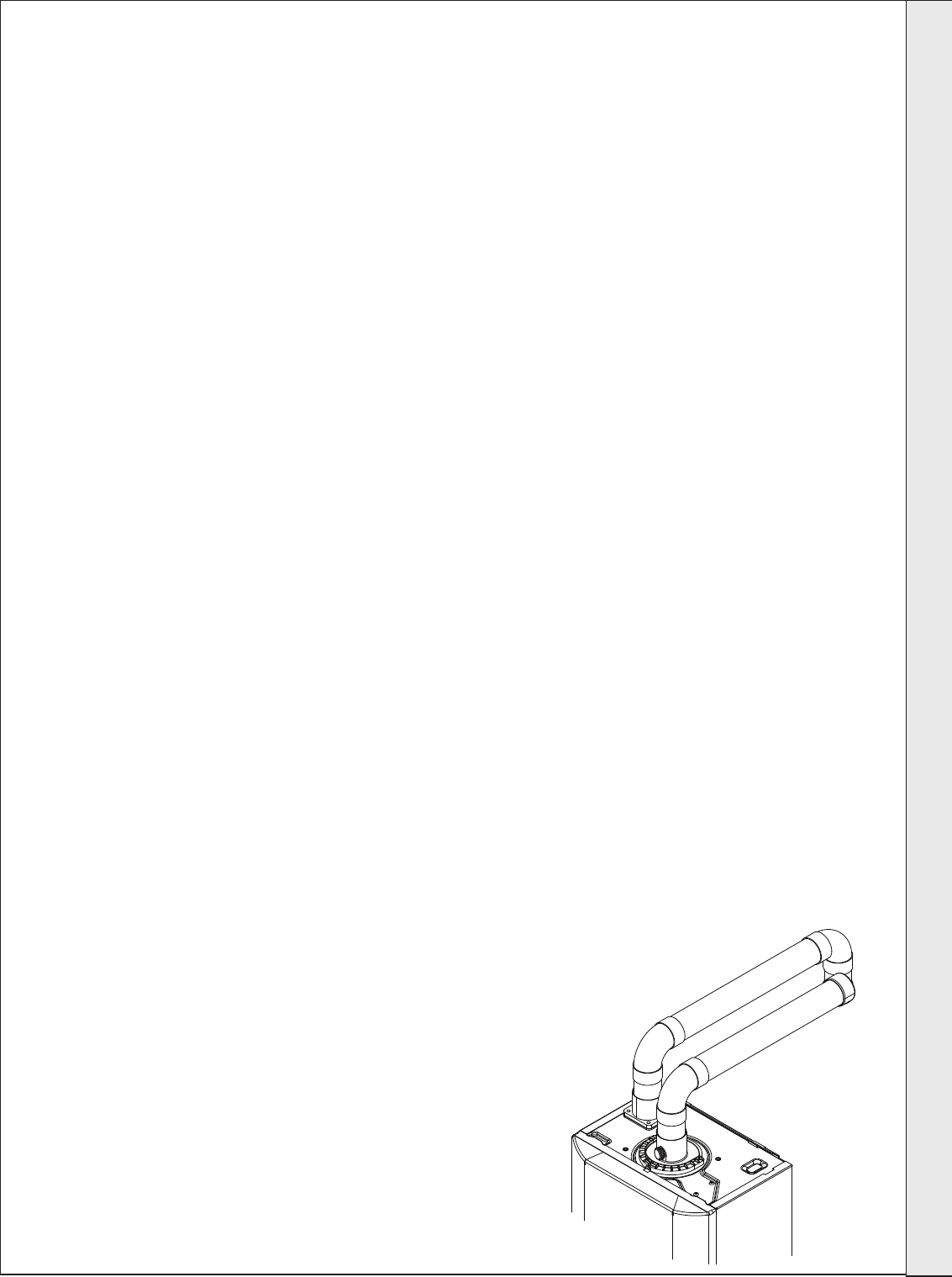
37
SERVICING
Keston Combi - Installation and Servicing
38
SERVICING SCHEDULE
For the very latest copy of literature for specication & maintenance practices, visit our website www.keston.co.uk, where you will
be able to download the relevant information.
WARNING. Always turn OFF the gas supply at the gas service cock, and switch OFF and disconnect the electricity
supply to the appliance before servicing.
Combustion testing must be carried out by a competent person using a combustion analyser conforming to BS7927.
To ensure the continued safe and efcient operation of the appliance it is recommended that it is checked at regular intervals and
serviced as necessary. The frequency of servicing will depend upon the installation condition and usage but should be carried out
at least annually.
It is the law that any service work must be carried out by a Gas Safe Registered Engineer. In IE service work must be carried out
by a Registered Gas Installer (RGII).
INSPECTION
1. Light the boiler and carry out a pre-service check, noting any
operational faults.
2. Check the ue terminal (and terminal guard if tted) is undamaged
and clear of any obstruction.
3. Check all water and gas joints for signs of leakage. Remake any
suspect joints ensuring a gas tightness check is carried out if
applicable and the water system is correctly relled, vented and
re-pressurised.
CLEANING PROCEDURE
Note. In order to carry out either servicing or replacement of
components the boiler front panel must be removed. Refer to
Frame 39.
1. Clean the main burner. Refer to frame 41.
2. Clean the heat exchanger & condensate trap/siphon. Refer to
Frames 41 & 42.
3. Check the main injector for blockage or damage. Refer to Frame
40.
4. Check that the ue terminal is unobstructed and that the ue system
is sealed correctly.
ALSO IF THE DHW FLOW RATE IS IN QUESTION :-
5. Check the DHW lter for blockage. Refer to Frame 70.
The cleaning procedures are covered more fully in Frames 40-45 and
MUST be carried out in sequence.
IMPORTANT.
6. After completing the servicing or exchange of components always
test for gas tightness.
7. When work is complete the front panel MUST be correctly retted,
ensuring that a good seal is made.
Do NOT OPERATE the boiler if the front panel is not
tted.
8. If, for any reason, the condensate trap/siphon has been removed
ensure the trap is relled with water before
reassembling.
9. Check the gas consumption.
10. Check combustion by connecting the ue gas analyser to the ue
gas sampling point as shown in the diagram and measure CO &
CO2.
If the CO/CO2 ratio is greater than 0.004 AND the integrity of the
complete ue system and combustion circuit seals have been
veried and the inlet gas pressure (and gas rate) have been
veried, then contact Keston.
11. Complete the service section in the Benchmark Commissioning
Checklist.
GENERAL
Please Note: During routine servicing, and after any
maintenance or change of part of the combustion
circuit, the following must be checked:
- The integrity of the ue system and the ue seals,
- The integrity of the boiler combustion circuit and
the relevant seals
- The operational (working) gas inlet pressure at
maximum rate.
- The gas rate
- The combustion performance.
COMPETENCE TO CARRY OUT THE CHECK
OF COMBUSTION PERFORMANCE
Please Note: BS 6798:2009 Specication for
installation and maintenance of gas-red boilers of
rated input not exceeding 70kW net advises that:
- The person carrying out a combustion
measurement should have been assessed as
competent in the use of a ue gas analyser and the
interpretation of the results.
- The ue gas analyser used should be one meeting
the requirements of BS7927 or BS-EN50379-3
and be calibrated in accordance with the analyser
manufacturers requirements, and
- Competence can be demonstrated by satisfactory
completion of the CPA1 ACS assessment, which
covers the use of electronic portable combustion
gas analysers in accordance with BS7967, Parts 1
to 4.
SERVICING
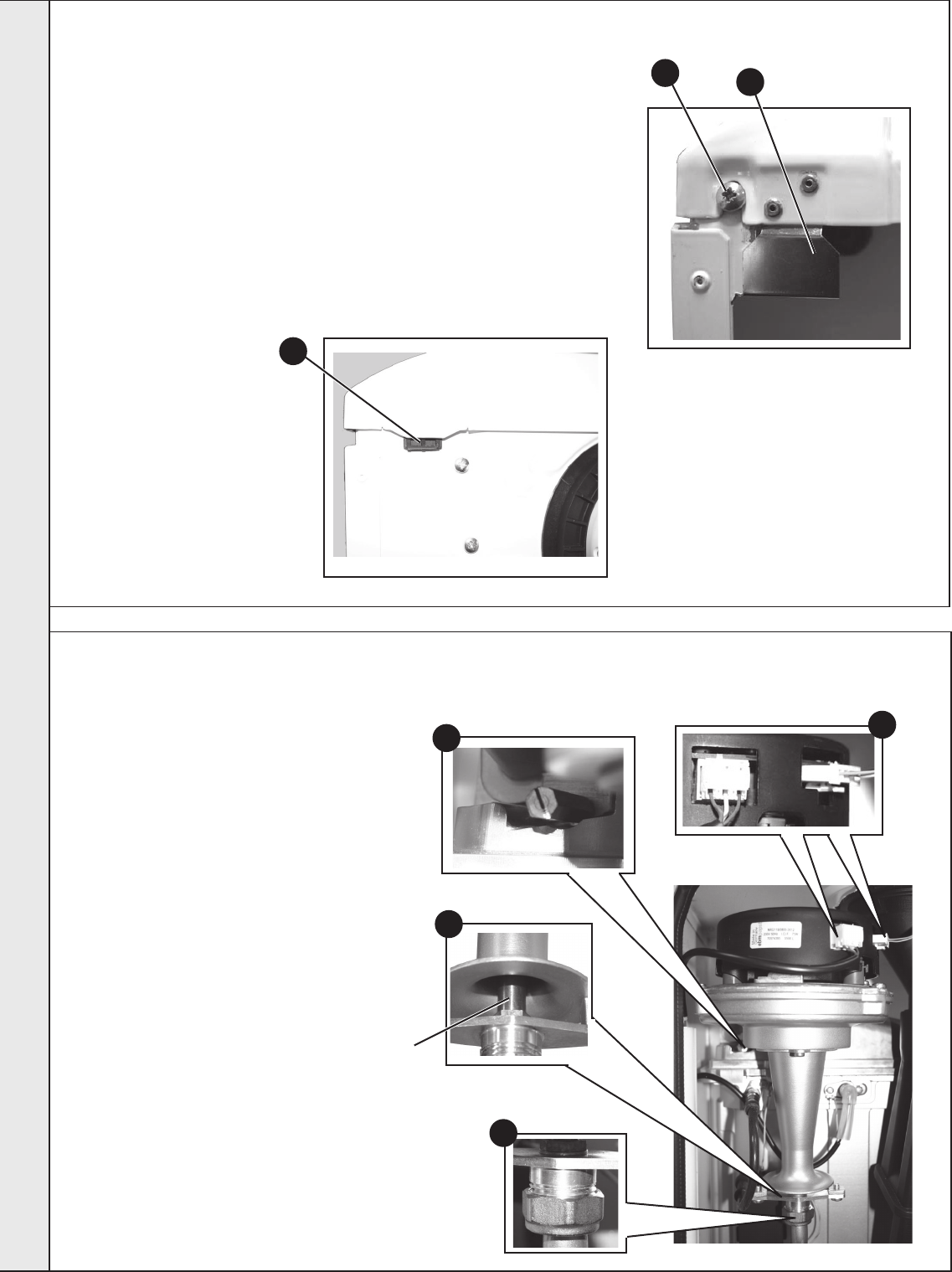
38
SERVICING
Keston Combi - Installation and Servicing
39
BOILER FRONT PANEL REMOVAL / REPLACEMENT
REMOVAL
1. Loosen the two screws retaining the front panel.
2. Pull the two spring clips down to disengage and pull panel
forward and upward and remove.
REPLACEMENT
3. Hook the panel onto the top retaining clips.
4. Push the panel until the 2 bottom spring clips engage
ensuring the 4 control knobs line up with the holes in the
front panel.
5. Re-tighten the two retaining screws.
40
FAN AND VENTURI ASSEMBLY REMOVAL AND CLEANING
1. Disconnect the electrical leads from the fan.
2. Undo the gas pipe union connection to the
injector housing.
3. Remove the extended nut on the fan
mounting bracket.
4. Lift off fan and venturi assembly.
5. Inspect the injector for blockage or damage.
6. Inspect fan outlet sealing gasket and
replace if necessary.
view from top of boiler
view from bottom of boiler
12
3
1
2
3
5
Injector
SERVICING
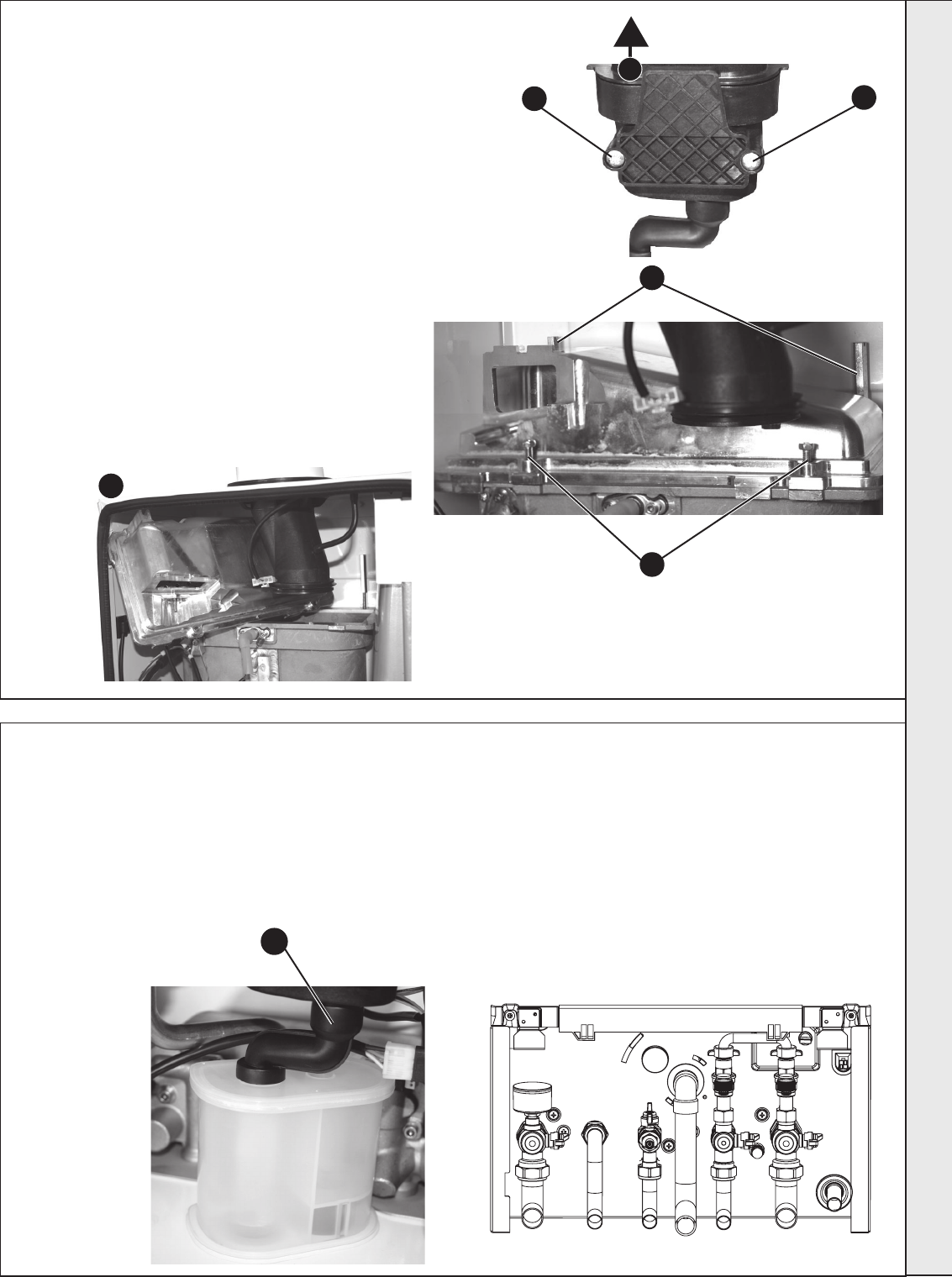
39
SERVICING
Keston Combi - Installation and Servicing
41
BURNER REMOVAL AND CLEANING
1. Ensure the sump is fully drained
2. Undo the two screws and remove the sump cover retaining the lower
ue manifold.
3. Lift the manifold to clear the bottom sealing gasket and remove
manifold.
4. Remove the 2 burner front xing screws and loosen the 2 rear
extended nuts by at least ten turns.
5. Lift off the burner from the combustion chamber. To facilitate the
removal angle the burner as shown.
IMPORTANT
The burner head is a ceramic plaque construction. Care must be
taken to ensure that the burner is not placed down upon
its face as this may cause damage to the ceramic.
6. Brush off any deposits that may be on the ceramic with a
SOFT brush.
7. Inspect the sealing gasket around the burner for any
signs of damage. Replace as necessary.
42
CLEANING THE CONDENSATE TRAP/SIPHON
1
3
22
4
4
5
3G9690
1. Pull off the rubber pipe at the sump drain.
2. Disconnect the condensate drain pipe.
3. Turn the siphon clockwise to disengage and lift to
remove.
Note. Keep siphon upright when removing
4. Clean siphon with water.
5. Re-assemble in reverse order.
B When re-assembling ensure the trap is full of water.
SERVICING
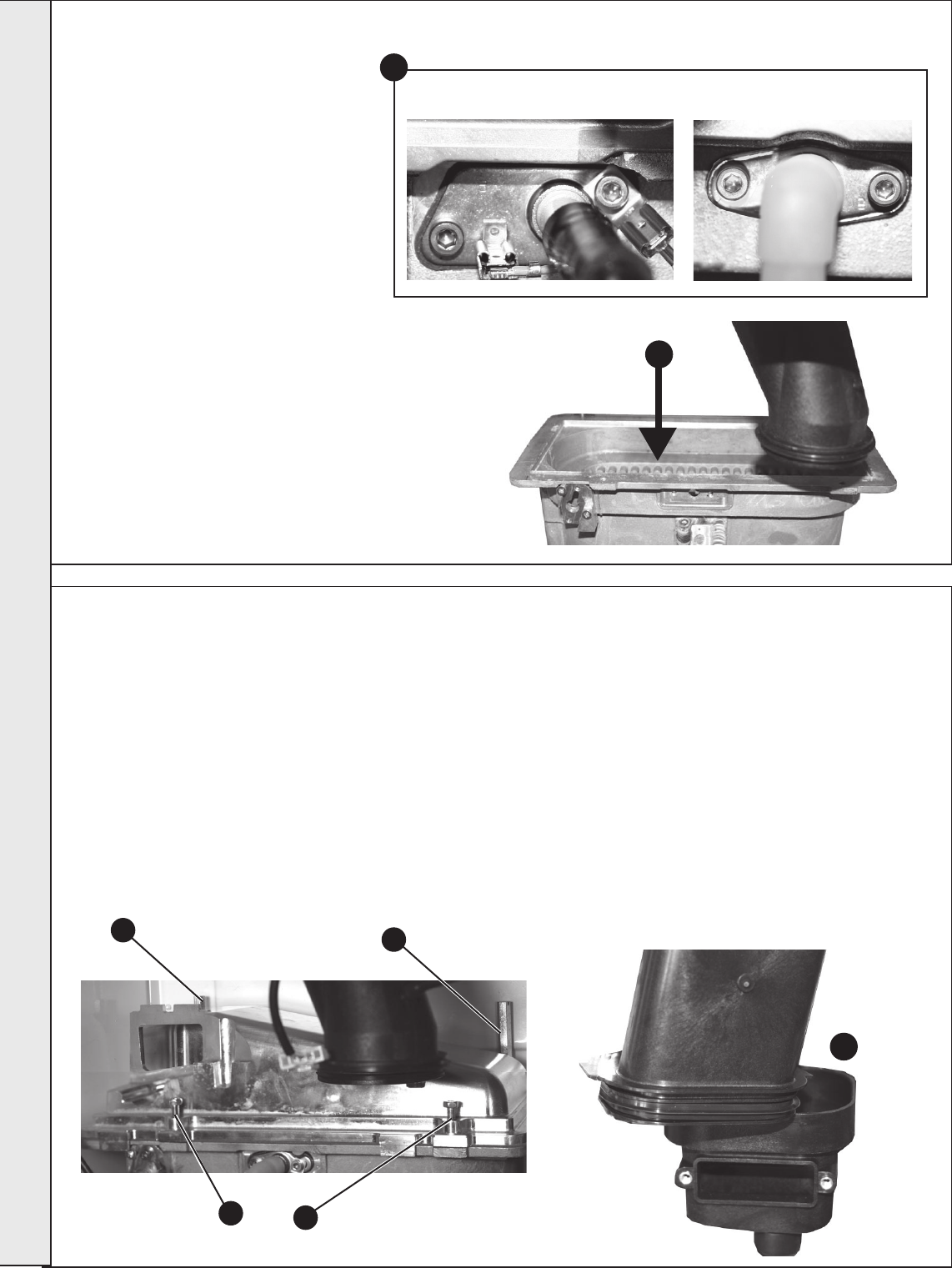
40
SERVICING
Keston Combi - Installation and Servicing
3
43
CLEANING THE HEAT EXCHANGER
Note: Ensure the condensate trap/siphon
is fully drained before cleaning. Refer to
Frame 61.
1. Remove ignition and ame detection
electrodes. Refer to Frames 51 & 52.
2. It is advisable to replace the sump cover
prior to the water ush process.
3. Thoroughly ush the heat exchanger
by pouring water into the top of the
combustion chamber ensuring the full top
area is covered.
4. Remove the sump cover and clean loose
deposits from the sump.
5. Inspect the ignition and detection
electrodes. Ensure that they are clean
and in good condition - replace if
necessary.
6. Re-t the ignition and ame detection
electrodes, ensuring that both earth tabs
are tted to ignition electrode.
7. Check that the ignition and detection gaps
are correct. Refer to Frames 51 & 52.
1
Ignition Electrode Flame Detection
Reassemble the boiler in the following order:
1. Ensure that the condensate trap/siphon is full of water.
2. Ret the burner ensuring the sealing gasket is correctly
positioned and free from damage (tighten the 4 xing screws
in the sequence shown below).
3. Ret the fan / venturi assembly ensuring the retaining tabs
are correctly positioned and the sealing gasket is correctly
positioned and free from damage.
4. Reconnect the fan electrical leads.
5. Remove the sump cover and ret the lower ue manifold as
shown.
44
REASSEMBLY
5
1
6. Ret the sump cover.
7. Ret the boiler front panel.
IMPORTANT. Ensure that the boiler front panel is
correctly tted and that a good seal is made.
8. Swing the control box back into its working position and
secure.
9. Turn on the gas supply at the gas service cock.
10. Reconnect the electrical supply.
2
4
3
SERVICING
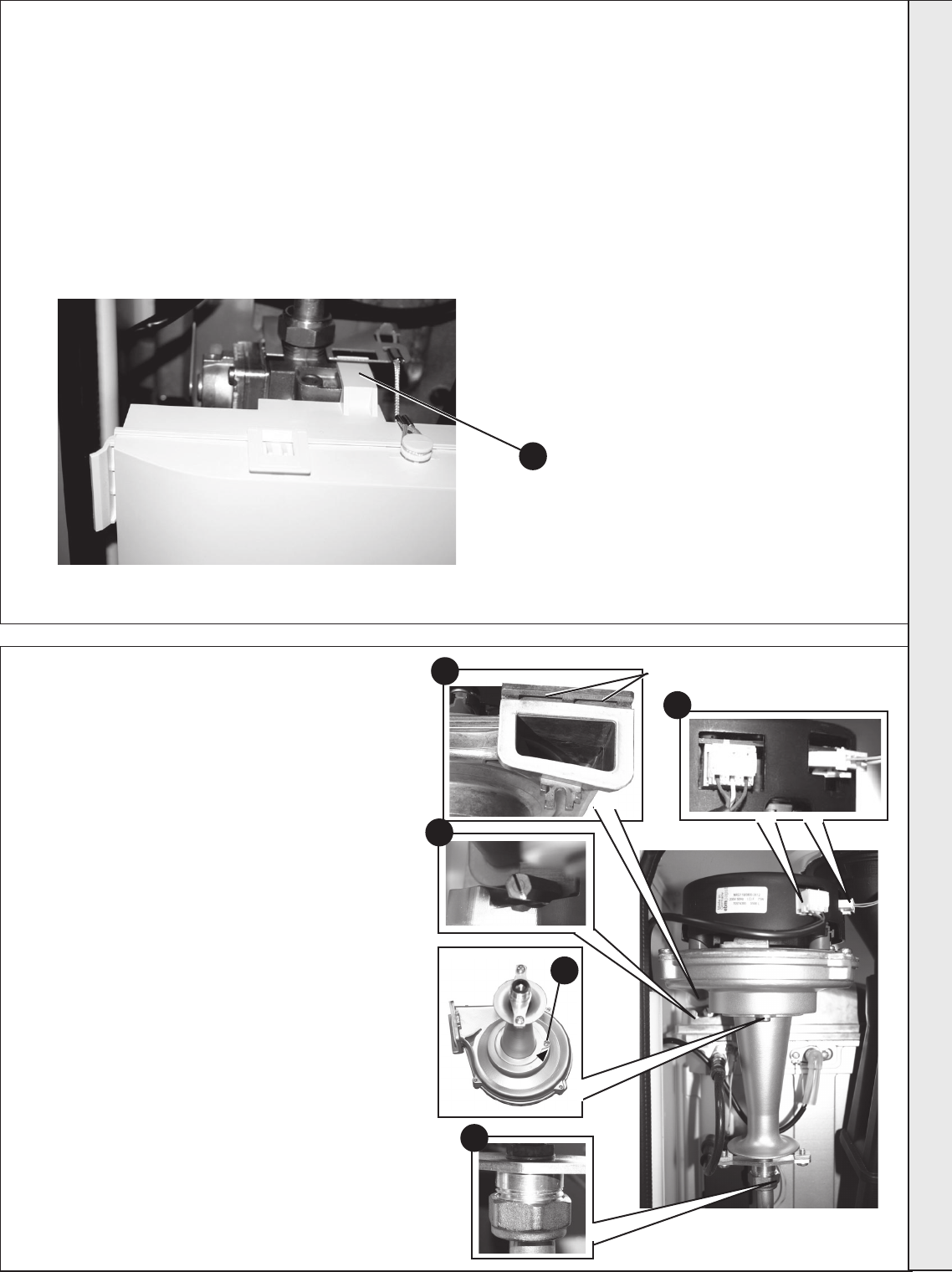
41
SERVICING
Keston Combi - Installation and Servicing
45
REPLACEMENT OF COMPONENTS
GENERAL
When replacing ANY component
1. Isolate the electricity supply.
2. Turn off the gas supply.
3. Remove the boiler front panel. Refer to Frame 39.
4. Release the retaining clip and swing the control box down
into its servicing position.
After replacing ANY component check operation of the
boiler, including gas tightness, gas rate and combustion
test.
IMPORTANT.
When work is complete, the front panel must be correctly
retted - ensuring that a good seal is made.
Notes.
1. In order to assist fault nding, the control panel has
an LED diagnostic display. The key to boiler fault
conditions is shown in Frame 75.
2. In order to replace components in Frames 61-72 it is
necessary to drain the boiler. Refer to Frame 60.
THE BOILER MUST NOT BE OPERATED WITHOUT THE FRONT PANEL FITTED
46
FAN REPLACEMENT
1. Refer to Frame 45.
2. Disconnect the electrical leads from the fan.
3. Undo the gas pipe union connection to the
injector housing.
4. Remove the extended nut retaining the fan
mounting bracket.
5. Lift and remove the fan and venturi assembly.
6. Remove the screw and twist venturi anti-
clockwise to remove venturi assembly, noting
the orientation of the venturi in relation to the
fan body.
7. Transfer the venturi assembly to the new fan,
replacing the ‘o’ ring if evidence of damage or
deterioration is visible.
8. Fit the new fan / venturi assembly ensuring the
retaining tabs are correctly positioned and the
fan outlet sealing gasket is correctly positioned
and free from damage. Ret the extended nut.
9. Reassemble the boiler in reverse order, taking
care not to overtighten the screw on the fan
mounting bracket.
10. Check the operation of the boiler. Refer to
Frame 36.
4
6
3
4
8Retaining Tabs
2
SERVICING
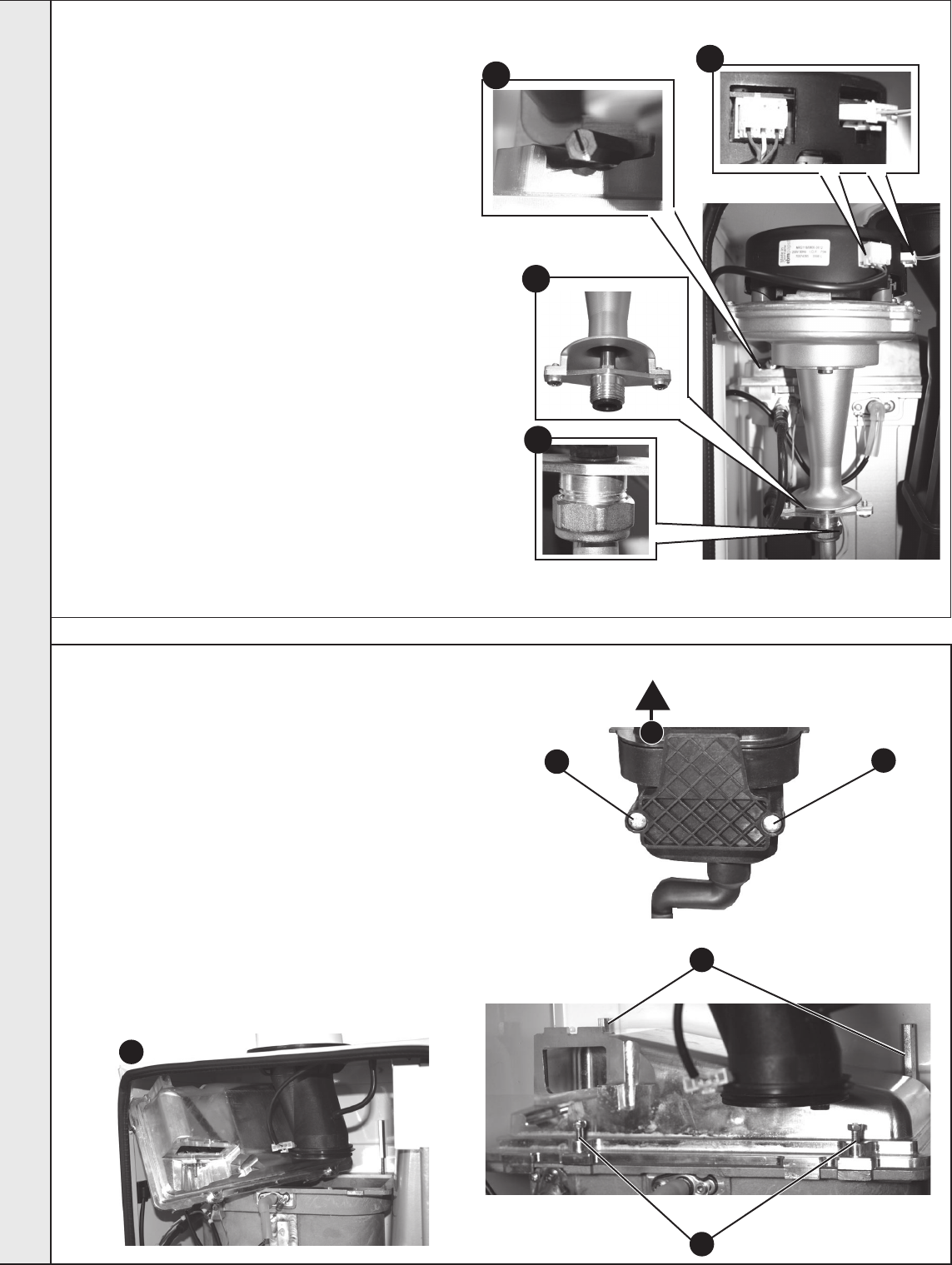
42
SERVICING
Keston Combi - Installation and Servicing
5
44
47
BURNER INJECTOR REPLACEMENT
1. Refer to Frame 45.
2. Disconnect the electrical leads from the fan.
3. Undo the gas pipe union connection to the
injector housing.
4. Loosen the screw retaining the fan mounting
bracket.
5. Lift and remove the fan and venturi assembly.
6. Remove the 2 injector housing screws.
7. Withdraw the injector housing.
8. Fit the new injector housing complete with
injector.
9. Reassemble in reverse order, ensuring that the
new gas seal supplied is located correctly in the
injector housing.
10. Check operation of the boiler. Refer to Frame 36.
2
4
3
6
48
BURNER REPLACEMENT
6
6
7
1. See Frame 39.
2. Refer to Frame 45.
3. Disconnect 2 ag terminals from the ue thermostat.
4. Undo the two screws and remove the sump cover.
5. Lift the manifold to clear the bottom sealing gasket and remove
manifold.
6. Remove the 2 front xing screws and loosen the 2 rear
extended nuts.
7. Lift off the burner from the combustion chamber. To facilitate
the removal angle the burner as shown.
8. Fit the new burner, replacing any damaged or deteriorating
sealing gasket.
9. Reassemble in reverse order. Refer to Frame 44.
10. Check the operation of the boiler. Refer to Frame 36.
SERVICING
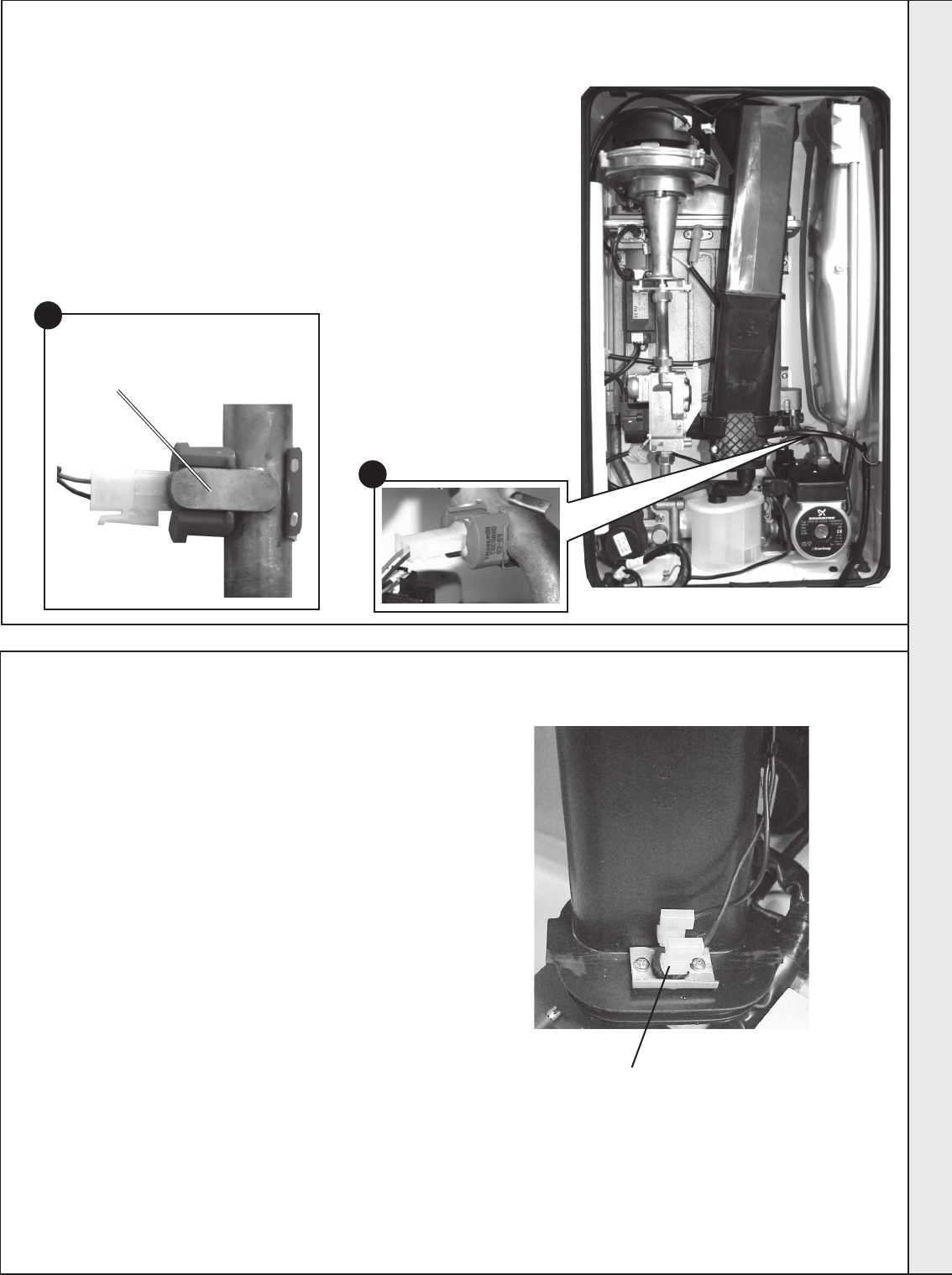
43
SERVICING
Keston Combi - Installation and Servicing
49
RETURN THERMISTOR RENEWAL
1. Refer to Frame 44.
2. Unclip the return thermistor from the return pipe and withdraw it from the
boiler.
3. Disconnect the electrical lead from the thermistor.
4. Reconnect the electrical lead to the new thermistor and reassemble in
reverse order, ensuring that the thermistor is securely tted to the pipe on the
thermistor locator tabs as shown.
5. Check the operation of the boiler. Refer to Frames 29-35.
3
Thermistor Locator Tab
(with thermistor tted)
5
50
FLUE THERMOSTAT REPLACEMENT
1. Refer to Frame 45.
2. Undo the two screws and remove the
sump cover plate.
3. Disconnect the two ag terminals
from the ue thermostat.
4. Lift the manifold to clear the bottom
sealing gasket and remove manifold.
.
5. Unscrew the two M3.5 screws
that connect the thermostat to the
manifold.
6. Replace thermostat with new part
and then ret the two screws,
remembering to t rubber gasket and
sealing clamp.
Flue Thermostat
SERVICING
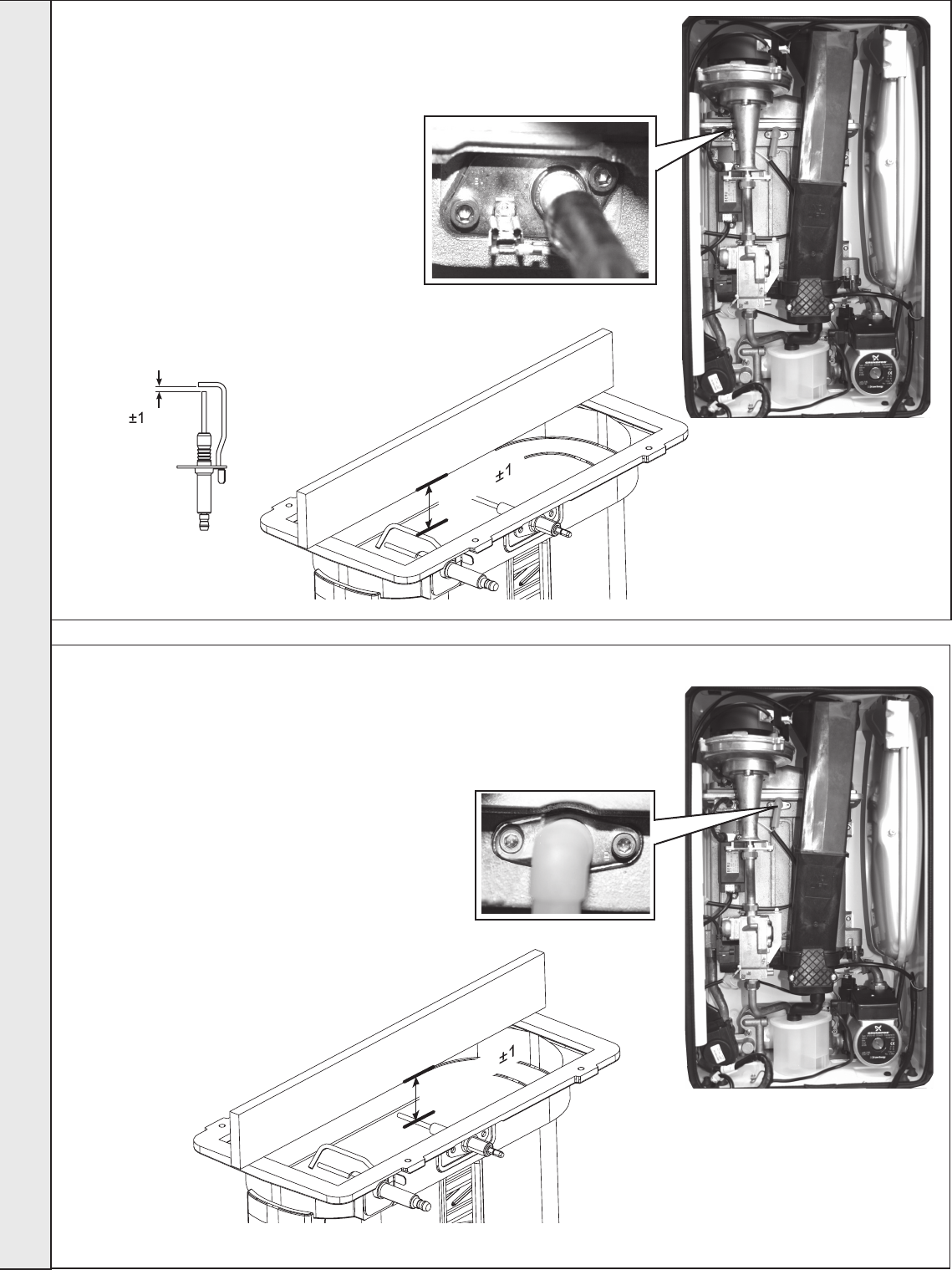
44
SERVICING
Keston Combi - Installation and Servicing
51
IGNITION ELECTRODE REPLACEMENT
1. Refer to Frame 45.
2. Remove the burner. Refer to Frame 48.
3. Unplug the ignition lead from the electrode.
4. Remove the earth lead from the ignition
electrode.
5. Remove the 2 screws holding the ignition
electrode to the combustion chamber.
6. Remove the electrode.
7. Fit the new ignition electrode, using the new
gasket supplied. Check dimensions as shown.
8. Reassemble in reverse order.
9. Check the operation of the boiler. Refer to
Frame 36.
Ignition Electrode
3mm
Straight edge
Spark Gap
3.5mm
52
FLAME DETECTION ELECTRODE REPLACEMENT
Flame Detection Electrode
12.5mm
Straight edge
1. Refer to Frame 45.
2. Remove the burner. Refer to Frame 48.
3. Unplug the ame detection lead from the
electrode.
4. Remove the 2 screws retaining the detection
electrode.
5. Remove the electrode.
6. Fit the new ame detection electrode, using the
new gasket supplied.
7. Reassemble in reverse order.
8. Check the operation of the boiler. Refer to
Frame 36.
SERVICING
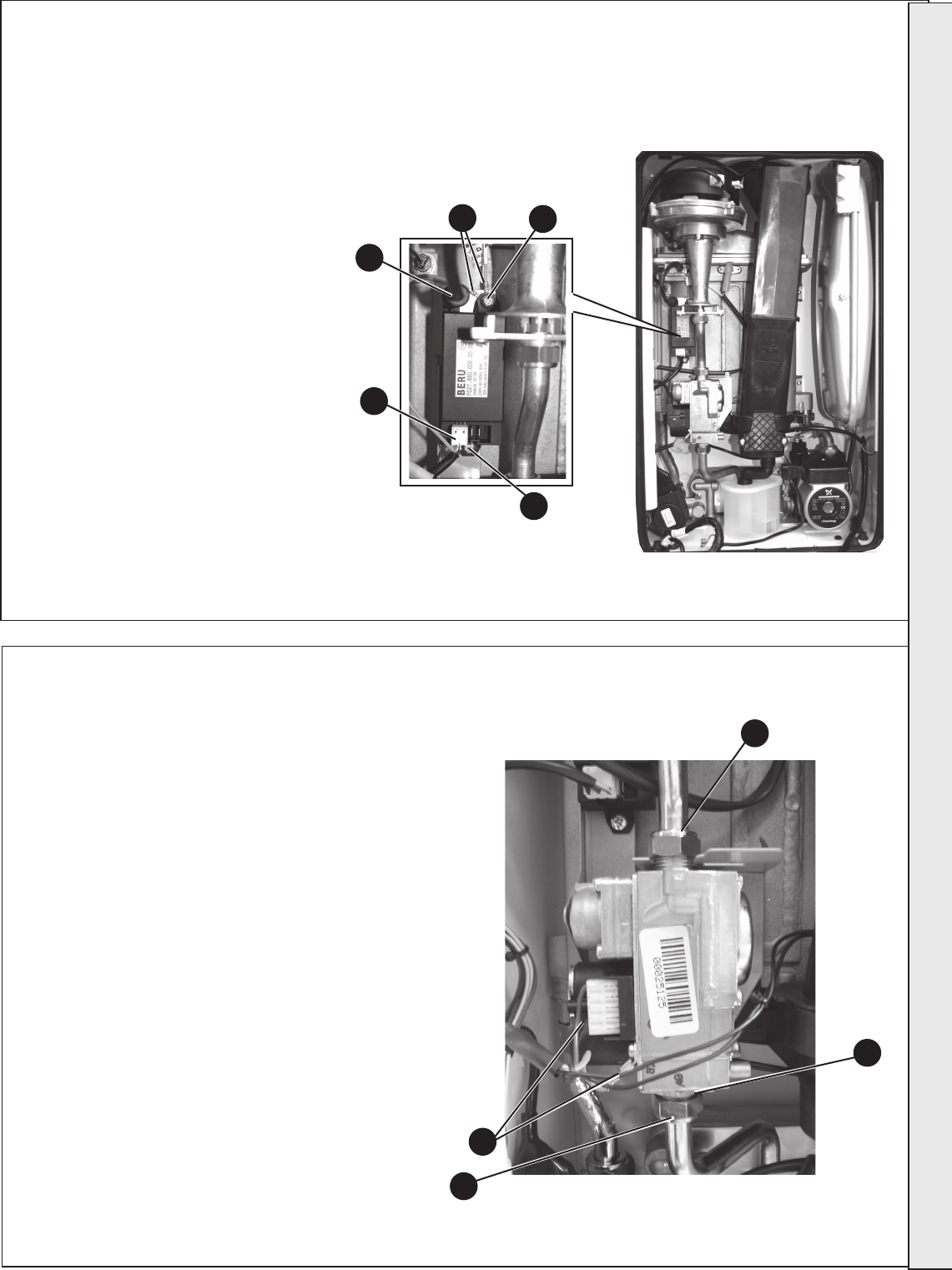
45
SERVICING
Keston Combi - Installation and Servicing
54
GAS CONTROL VALVE REPLACEMENT
1. Refer to Frame 45.
2. Unplug the electrical plug connection from the
gas control valve and disconnect the earth wire.
3. Undo the union nut on the outlet of the gas
control valve.
4. Undo the gas inlet pipe union at the inlet to the
gas control valve.
5. Loosen the back nut retaining the valve to the
bracket and withdraw the valve forwards.
6. Fit the new gas control valve ensuring the two
sealing washers are in place and reconnect gas
and electrical connections.
7. Check operation of the boiler. Refer to Frame
36.
2
4
5
53
SPARK GENERATOR REPLACEMENT
1. Refer to Frame 45.
2. Disconnect the leads from the spark
generator.
3. Remove the M5 screws securing the
spark generator to the boiler chassis.
4. Fit the new spark generator and re-
assemble in reverse order ensuring
the two earth leads are correctly
replaced.
5. Check operation of the boiler. Refer
to Frame 36.
Spark Generator
3
3
2
2
4
3
SERVICING
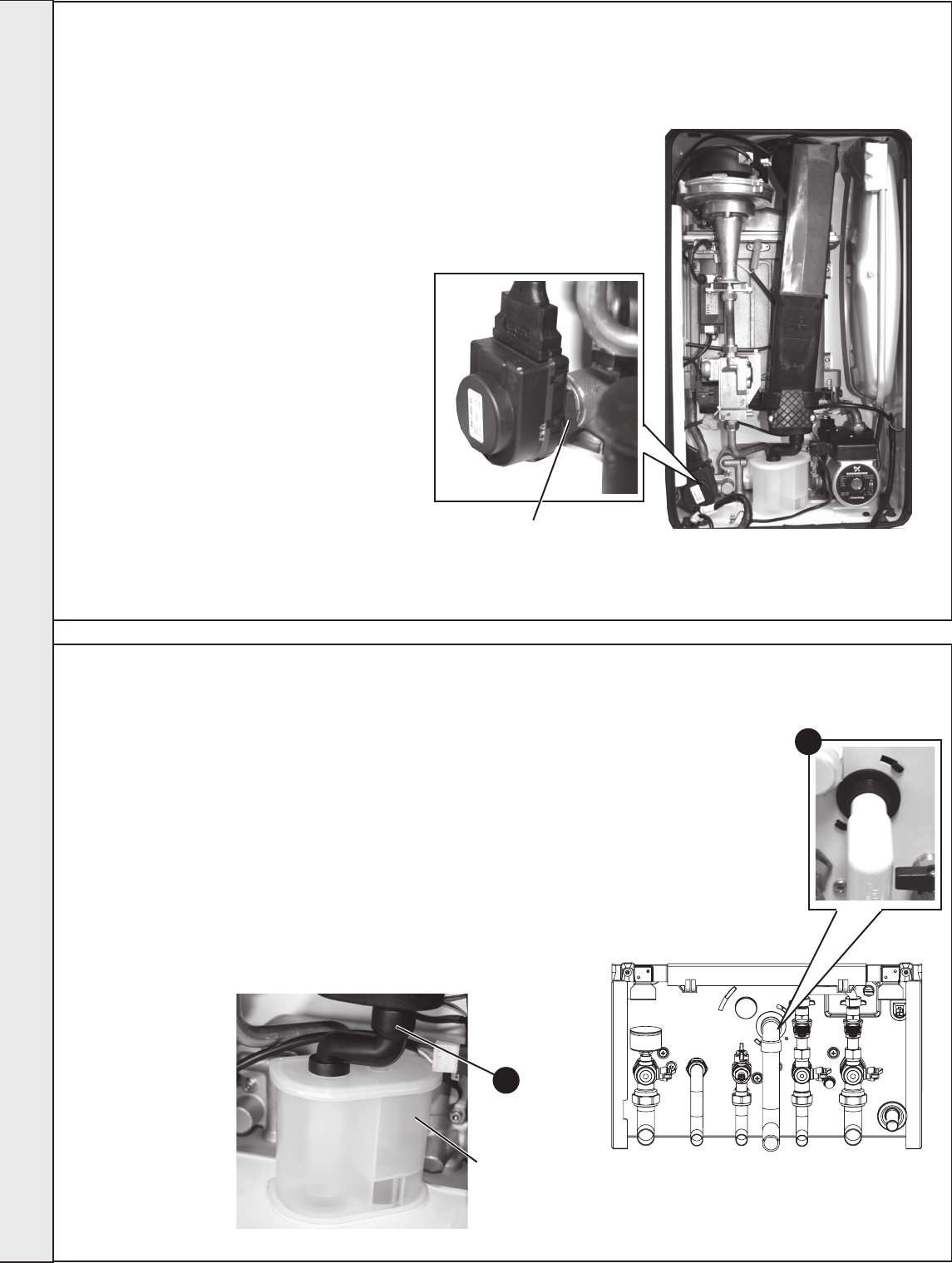
46
SERVICING
Keston Combi - Installation and Servicing
55
DIVERTER VALVE ACTUATOR REPLACEMENT
1. Refer to Frame 45.
2. Remove the electrical plug.
3. Using a suitable tool pull out the retaining
clip and lift the diverter head from the brass
body.
4. Fit new actuator head and reassemble in
reverse order.
6. Check operation of the boiler. Refer to
Frame 36. Diverter Valve Actuator
Retaining Clip
3G9690
56
CONDENSATE TRAP/SIPHON REPLACEMENT
3
2
Siphon
1. Refer to Frame 45.
2. Pull off the rubber pipe at the sump drain.
3. Disconnect the condensate drain pipe.
4. Turn the siphon clockwise to disengage and lift to remove.
Note. Keep siphon upright when removing
5. Clean siphon with water.
6. Re-assemble in reverse order.
7. When re-assembling ensure the trap is full of water.
8. Check operation of the boiler. Refer to Frame 36.
SERVICING
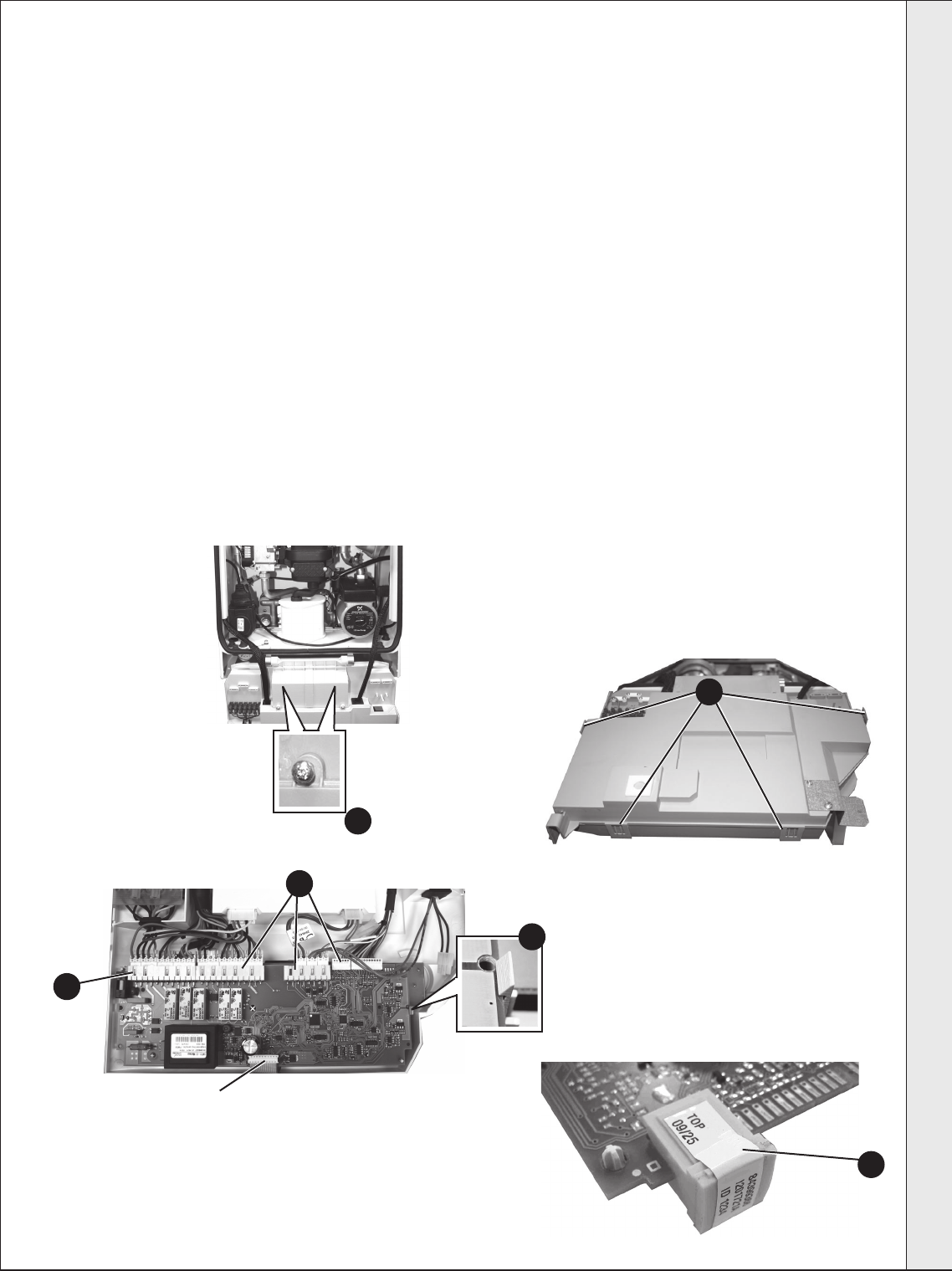
47
SERVICING
Keston Combi - Installation and Servicing
57
MAIN PCB REPLACEMENT
Note. Fit the earth strap provided with the PCB to your wrist and secure to a suitable earth on the boiler chassis.
3
4
6
5
Plastic
Clip
5
7
Ribbon Cable Connection
8. Re-connect all plug connections.
9. Reassemble in reverse order.
10. Turn power back on to the boiler, after a few moments the
display will start alternating between “c” and “0”. Turn the
reset knob fully clockwise and when the display shows “ - ”
turn the knob fully anti-clockwise IMMEDIATELY.
Finally move the knob into the required position (Standby,
Summer or Winter).
11. Check operation of the boiler. Refer to Frame 36.
1. Refer to Frame 45.
2. Note the control knob positions.
3. Remove the 2 screws retaining the control box cover.
4. Carefully lift the 4 retaining clips and remove control box
cover.
5. Unplug all lead connections to the PCB including the ribbon
cable (to facilitate ribbon cable removal, ease side clips
apart and pull upwards), also where applicable, push the
small plastic clip with an electrical screwdriver to facilitate
plug removal.
6. Spring out the two side retaining clips and pull the PCB
upwards to clear the 4 corner retaining posts.
7. Take the new Primary PCB and attach the appropriate Boiler
Chip Card (BCC).
Note. Ensure the correct orientation of BCC by placing
“TOP” side up as shown.
SERVICING
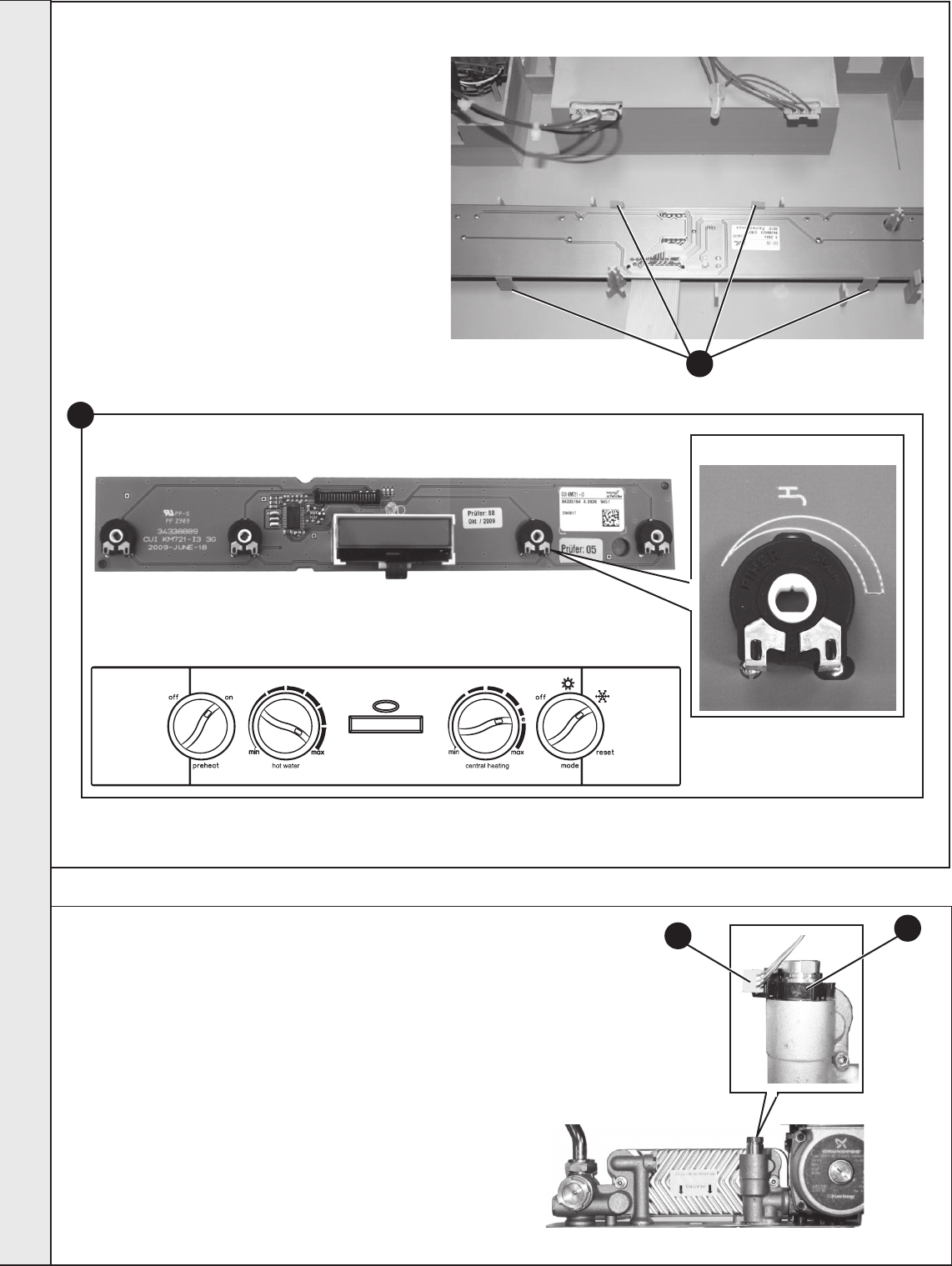
48
SERVICING
Keston Combi - Installation and Servicing
Note. Fit the earth strap provided with the PCB
to your wrist and a suitable earth on the boiler
chassis.
1. Refer to Frame 45.
2. Remove the main PCB, refer to Frame 57.
3. Unclip the PCB and lift to clear the mounting
posts.
4. Fit the new PCB ensuring the 4 potentiometer
spindles line up with the control knobs which
must be in a vertical position.
5. Reassemble in reverse order.
6. Check operation of the boiler. Refer to Frame
36.
58
USER CONTROL PCB REPLACEMENT
3
59
DHW FLOW TURBINE SENSOR REPLACEMENT
1. Refer to Frame 45.
2. Remove condensate trap/siphon. Refer
to Frame 56.
3. Lift off the ow turbine sensor plastic
retaining clip.
4. Unplug the electrical connection and
transfer to new turbine sensor.
5. Reassemble in reverse order.
6. Check operation of the boiler. Refer to
Frame 36.
3
4
Potentiometer spindle
Control Knobs (to be in vertical position)
PCB
4
SERVICING
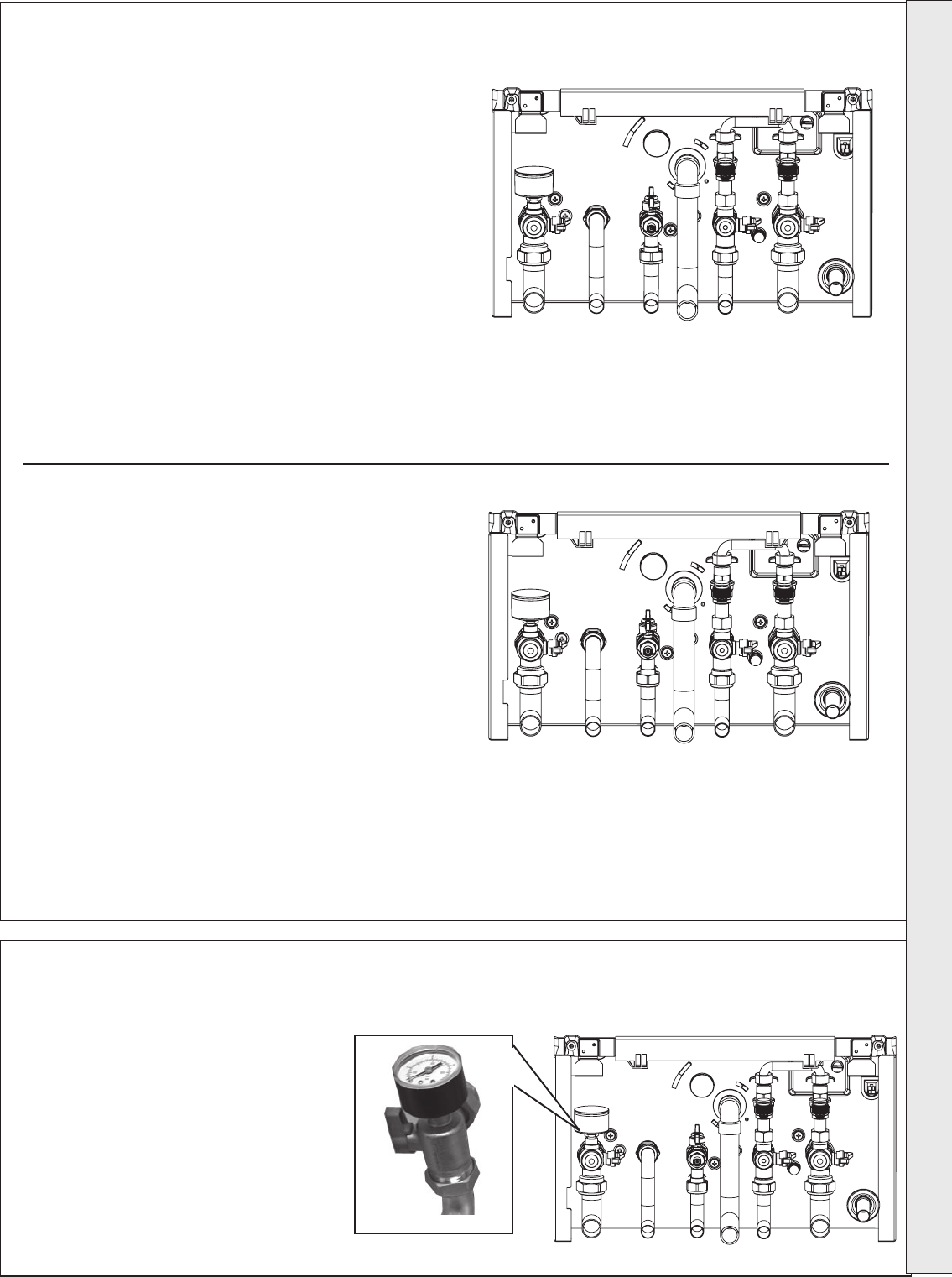
49
SERVICING
Keston Combi - Installation and Servicing
1. Refer to Frame 45.
2. Drain the heating system. Refer to Frame
65.
3. Unscrew the pressure gauge and discard.
4. Fit new pressure gauge, using suitable
jointing compound.
5. Rell the boiler. Refer to Frame 22.
6. Check operation of the boiler. Refer to
Frame 36.
61
PRESSURE GAUGE RENEWAL
60
DRAINING THE BOILER
DOMESTIC HOT WATER CIRCUIT
1. Refer to Frame 45.
2. Close all the DHW water isolating valves on the boiler inlet.
3. To drain the domestic hot water circuit: As there is no direct
drain for the domestic hot water circuit, depending on the
location of the boiler, opening the lowest hot water tap
may drain this circuit. However it must be noted that some
residual water will be experienced during replacement of
components.
4. After replacing any component on the boiler, close tap, close
the drain valve and open all system isolating valves (re-
pressurise as appropriate by re-connecting the lling loop,
refer to Frame 22) before proceeding to check operation of
the boiler.
5. Disconnect lling loop. Refer to Frame 22.
6. Check operation of the boiler. Refer to Frame 36.
3G9690
3G9690
3G9690
CENTRAL HEATING CIRCUIT
1. Refer to Frame 45.
2. Close all the CH water isolating valves on the boiler inlet.
3. To drain the primary heat exchanger circuit: Open the drain
valve and attach a length of hose to the CH drain point.
4. After replacing any component on the boiler, remove the
hose, close the drain valve and open all system isolating
valves (re-pressurise as appropriate by re-connecting the
lling loop, refer to Frame 22) before proceeding to check
operation of the boiler.
5. Disconnect lling loop. Refer to Frame 22.
6. Check operation of the boiler. Refer to Frames 36.
SERVICING
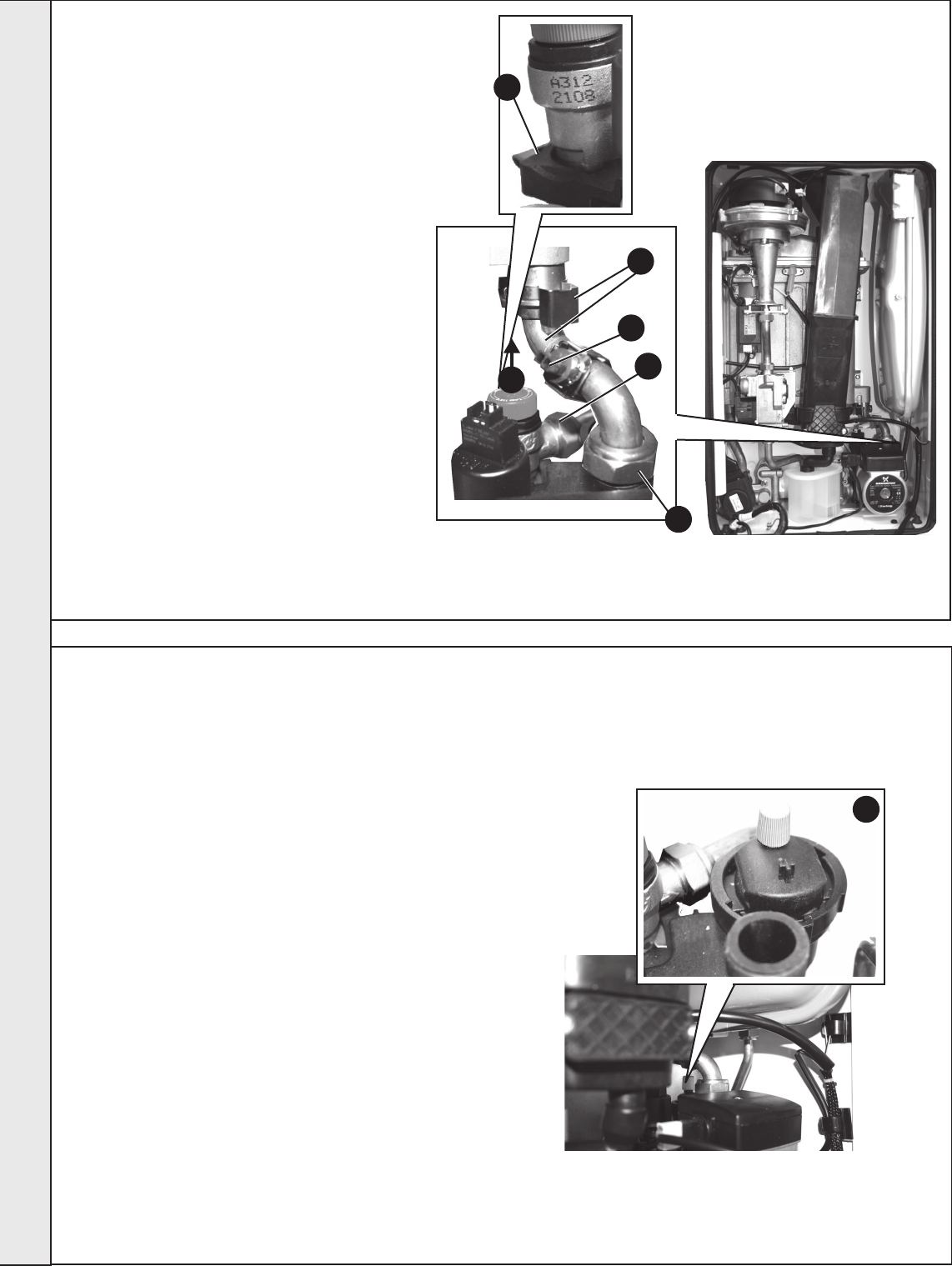
50
SERVICING
Keston Combi - Installation and Servicing
62
SAFETY RELIEF VALVE RENEWAL
1. Refer to Frame 45.
2. Drain the boiler. Refer to Frame 60.
3. Remove the condensate trap/siphon. Refer to
Frame 56.
4. Remove expansion vessel. Refer to Frame 73.
5. Disconnect the electrical connection from the
return thermistor.
6. Disconnect the 22mm pipe connection at the rear
of the pump outlet.
7. Pull off the clip retaining the pipe to the heat
exchanger swing the pipe to clear the pump and
remove pipe.
8. Undo the safety valve union connection.
9. Withdraw the clip securing the safety valve.
10. Lift safety valve from boiler.
11. Fit the new safety valve and reassemble in
reverse order ensuring the new ‘o’ ring is tted to
the top of the return pipe.
12. Rell boiler. Refer to Frame 22. Check operation
of boiler. Refer to Frames 36.
63
PUMP AUTOMATIC AIR VENT REPLACEMENT
1. Refer to Frame 45.
2. Drain the boiler. Refer to frame 60.
3. Remove the expansion vessel. Refer to Frame 73.
4. Firstly, increase access area by disconnecting the
22mm pipe connection at top of pump chamber and
bottom of heat exchanger and remove pipe Refer to
Frame 62 (no’s 5,6 & 7).
5. The automatic air vent head is retained in the pump
body with a bayonet connection. The air vent head and
oat assembly is removed by turning the head anti-
clockwise (viewed from above) and pulling upwards.
6. Reassembly is the reverse of the above. Ensure the air
vent head ‘o’ ring seal is in place when retting and the
new ‘o’ ring is tted to the return pipe top connection.
7. Ensure the air vent cap is loose.
8. Rell the boiler. Refer to Frame 22. Check for leaks
around the new air vent joint.
9. Check the operation of the boiler. Refer to Frame 36.
5
6
7
5
8
9
10
SERVICING
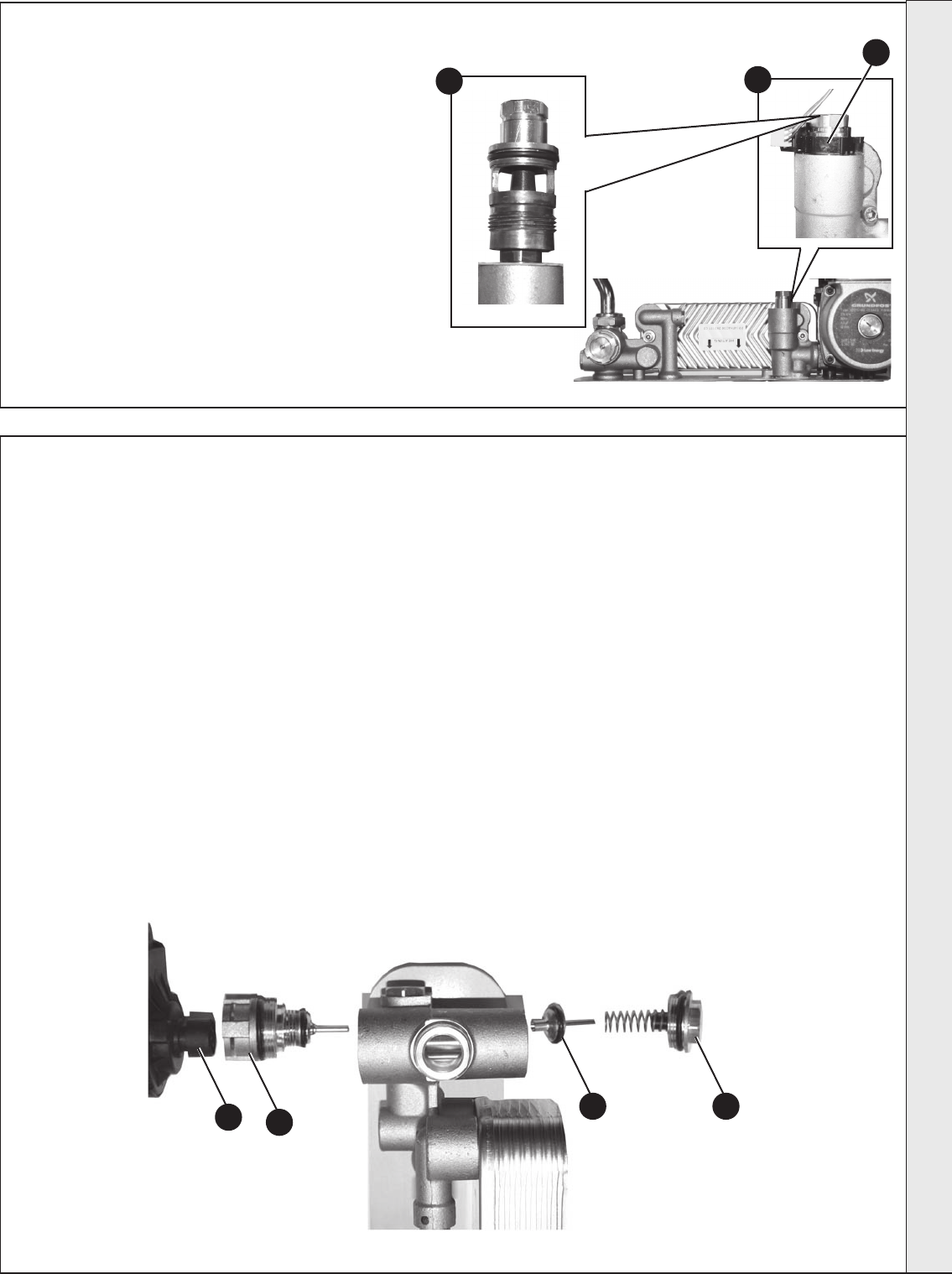
51
SERVICING
Keston Combi - Installation and Servicing
65
DIVERTER VALVE INTERNAL CARTRIDGE REPLACEMENT
FRONT CARTRIDGE REPLACEMENT
1. Refer to Frame 45.
2. Drain the boiler. Refer to Frame 65.
3. Remove the diverter valve head. Refer
to Frame 55.
4. Unscrew the top connection to access
the internal cartridge.
5. Fit the new valve mechanism ensuring
the correct t of the pin.
6. Reassemble in reverse order.
7. Rell the boiler. Refer to Frame 22.
8. Check operation of the boiler. Refer to
Frame 36.
4
64
DHW FLOW TURBINE CARTRIDGE REPLACEMENT
1. Refer to Frame 45.
2. Drain the boiler. Refer to Frame 60.
3. Remove condensate trap/siphon. Refer to
Frame 56.
4. Remove the DHW ow turbine sensor. Refer to
Frame 59.
5. Unscrew the top connection to access the
internal part.
6. Fit the new turbine cartridge.
7. Ret the turbine ow sensor
8. Reassemble in reverse order.
9. Rell the boiler. Refer to Frame 22.
10. Check operation of the boiler. Refer to
Frames 36.
5
REAR CARTRIDGE REPLACEMENT
1. Refer to Frame 45.
2. Drain the boiler. Refer to Frame 60.
3. Remove the diverter valve head. Refer to Frame 55.
4. Remove the ow pipe. Refer to Frame 22 no. 12.
5. Disconnect the CH ow pipe and DHW outlet pipe union connections underneath
the boiler. Refer to Frame 60.
6. Remove the plate heat exchanger LH xing screw. Refer to Frame 66.
7. Remove the screw retaining the brass block to the bottom of the boiler casing
and lift the brass block clear of the boiler.
8. Unscrew the rear cartridge connection.
9. Fit the new valve mechanism ensuring the correct t of the pin.
10. Reassemble in reverse order.
11. Rell the boiler. Refer to Frame 22.
12. Check operation of the boiler. Refer to
Frame 36.
FRONT CARTRIDGE REAR CARTRIDGE
34
9 8
7
SERVICING
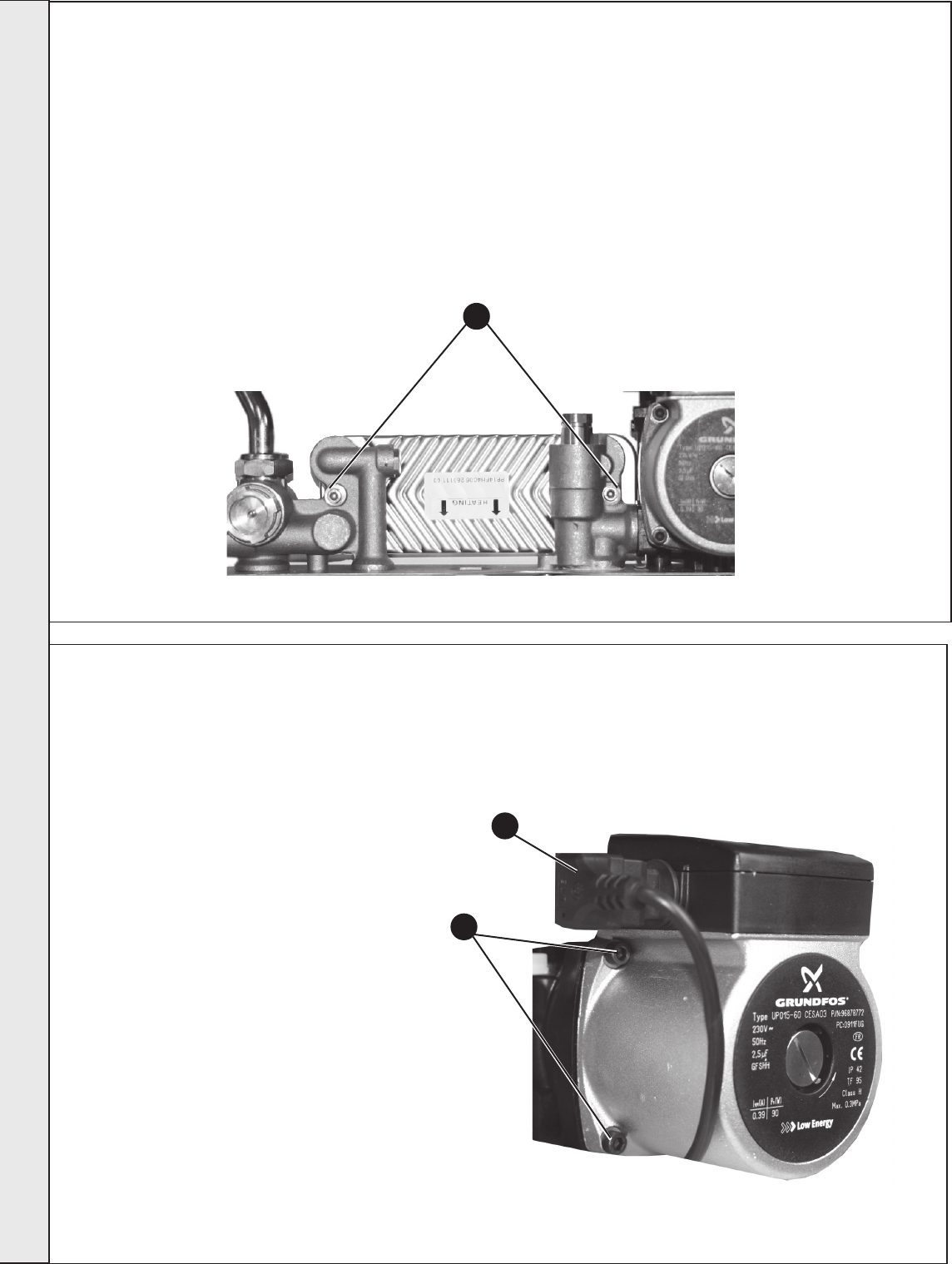
52
SERVICING
Keston Combi - Installation and Servicing
1. Refer to Frame 45.
2. Drain the boiler. Refer to Frame 60.
3. Remove condensate trap/siphon. Refer to Frame 56.
4. Remove the diverter valve actuator. Refer to Frame 55.
5. Remove the 2 allen screws securing the plate heat
exchanger to the brass housings.
6. Manoeuvre the plate heat exchanger out of the top LH or
centre of the controls area.
66
DHW PLATE HEAT EXCHANGER REPLACEMENT
5
67
PUMP HEAD REPLACEMENT
1. Refer to Frame 45.
2. Drain the boiler. Refer to Frame 60.
3. Disconnect the electrical plug from the
pump.
4. Remove the 4 Allen screws retaining the
pump head.
5. Remove the pump head.
6. Fit the new pump head.
7. Reassemble in reverse order.
8. Rell the boiler. Refer to Frame 22.
9. Check operation of the boiler. Refer to
Frame 36.
3
4
7. Fit the new plate heat exchanger, using the new o-rings
supplied.
Note. The mounting pins are offset so the correct position
can be dened from the location of the holes on the brass
mounting.
8. Reassemble in reverse order.
9. Rell the boiler. Refer to Frame 22.
10. Check operation of the boiler. Refer to Frame 36.
SERVICING
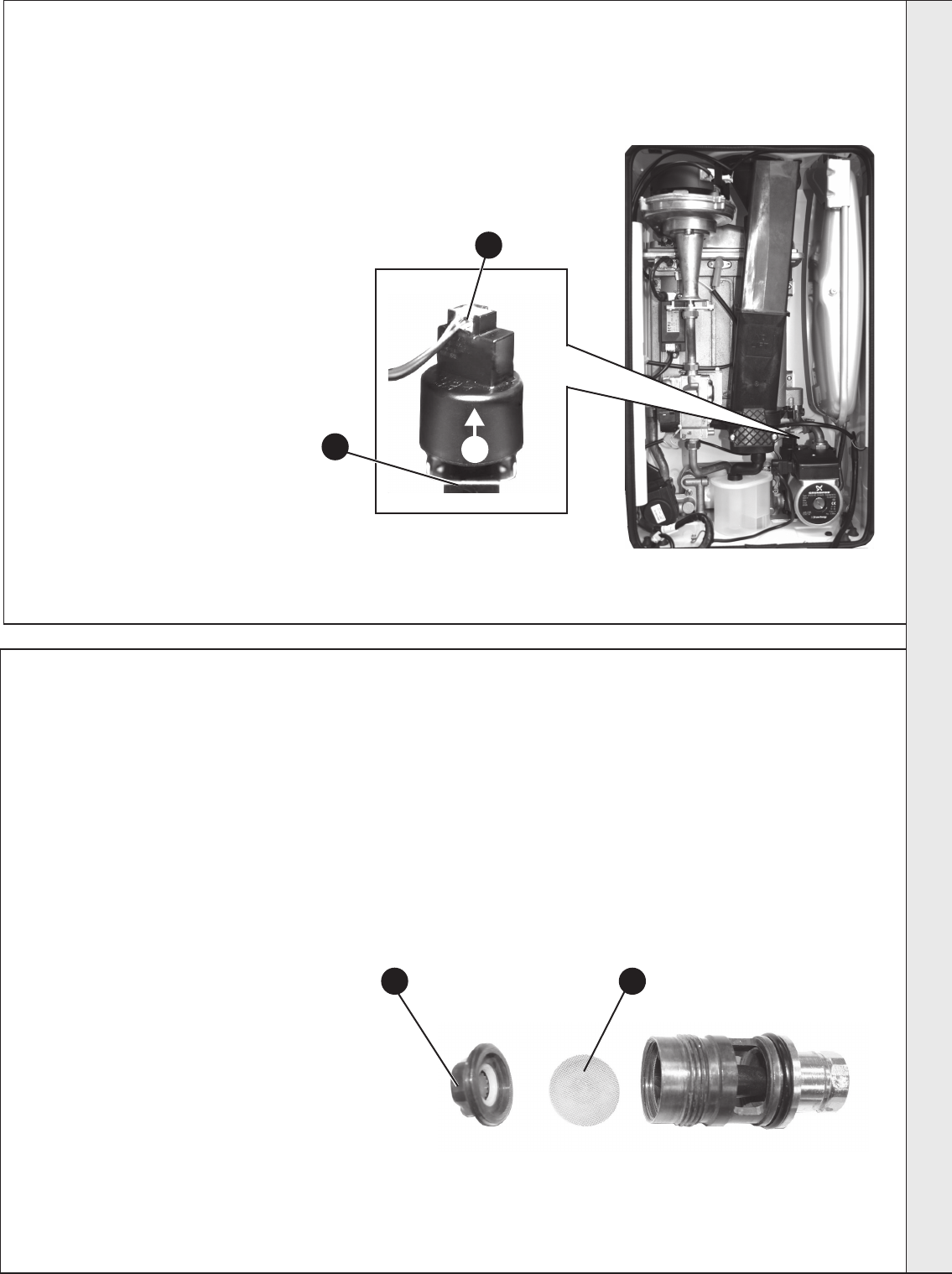
53
SERVICING
Keston Combi - Installation and Servicing
69
DHW FILTER CLEANING / REPLACEMENT
1. Refer to Frame 45.
2. Isolate the mains cold water supply to the
boiler.
3. Drain the boiler DHW circuit. Refer to
Frame 60.
4. Remove the DHW ow turbine cartridge.
Refer to Frame 64.
5. Unscrew the ow regulator housing.
6. Remove the lter.
7. Clean or replace lter as necessary.
8. Reassemble in reverse order.
9. Rell the boiler. Refer to Frame 22.
10. Check Operation of the boiler. Refer to
Frame 36.
65
5
68
CH WATER PRESSURE SENSOR REPLACEMENT
1. Refer to Frame 45.
2. Drain the boiler. Refer to Frame 60.
3. Remove condensate trap/siphon. Refer to
Frame 56.
4. Using a suitable tool pull out the retaining clip.
5. Pull the pressure sensor upwards to remove.
6. Unplug the electrical connection and transfer to
the new pressure sensor.
7. Push the new pressure sensor onto the rear
pump housing and t retaining clip.
8. Reassemble in reverse order.
9. Rell the boiler. Refer to Frame 22.
10. Check Operation of the boiler. Refer to Frame
36.
6
4
SERVICING
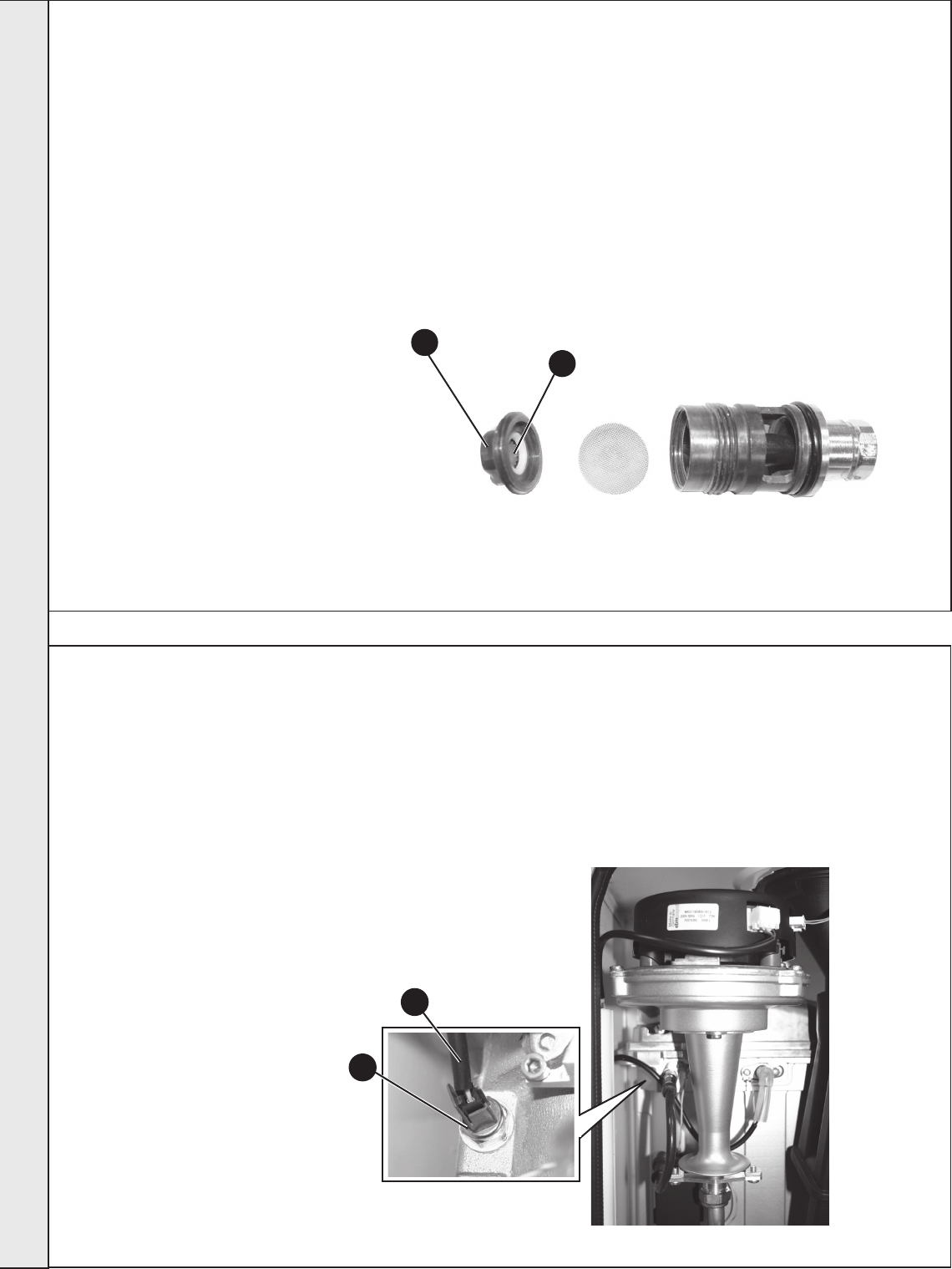
54
SERVICING
Keston Combi - Installation and Servicing
1. Refer to Frame 45.
2. Drain down the boiler. Refer to Frame 60.
3. Unplug the electrical lead.
4. Unscrew the thermistor (to facilitate removal a
13mm socket spanner should be used).
5. Fit the new thermistor using the sealing washer
provided.
6. Reassemble in the reverse order.
7. Rell the boiler. Refer to Frame 22.
8. Check the operation of the boiler. Refer to Frame
36.
71
NO FLOW THERMISTOR REPLACEMENT
4
3
70
DHW FLOW REGULATOR CLEANING / REPLACEMENT
1. Refer to Frame 45.
2. Isolate the mains cold water supply to the
boiler.
3. Drain the boiler DHW circuit. Refer to Frame
60.
4. Remove the DHW ow turbine cartridge.
Refer to Frame 69.
5. Unscrew the ow regulator housing.
6. Inspect the ow regulator for any blockage
and remove if necessary.
7. Reassemble in reverse order.
8. Rell the boiler. Refer to Frame 22.
9. Check Operation of the boiler. Refer to
Frame 36. 6
5
SERVICING
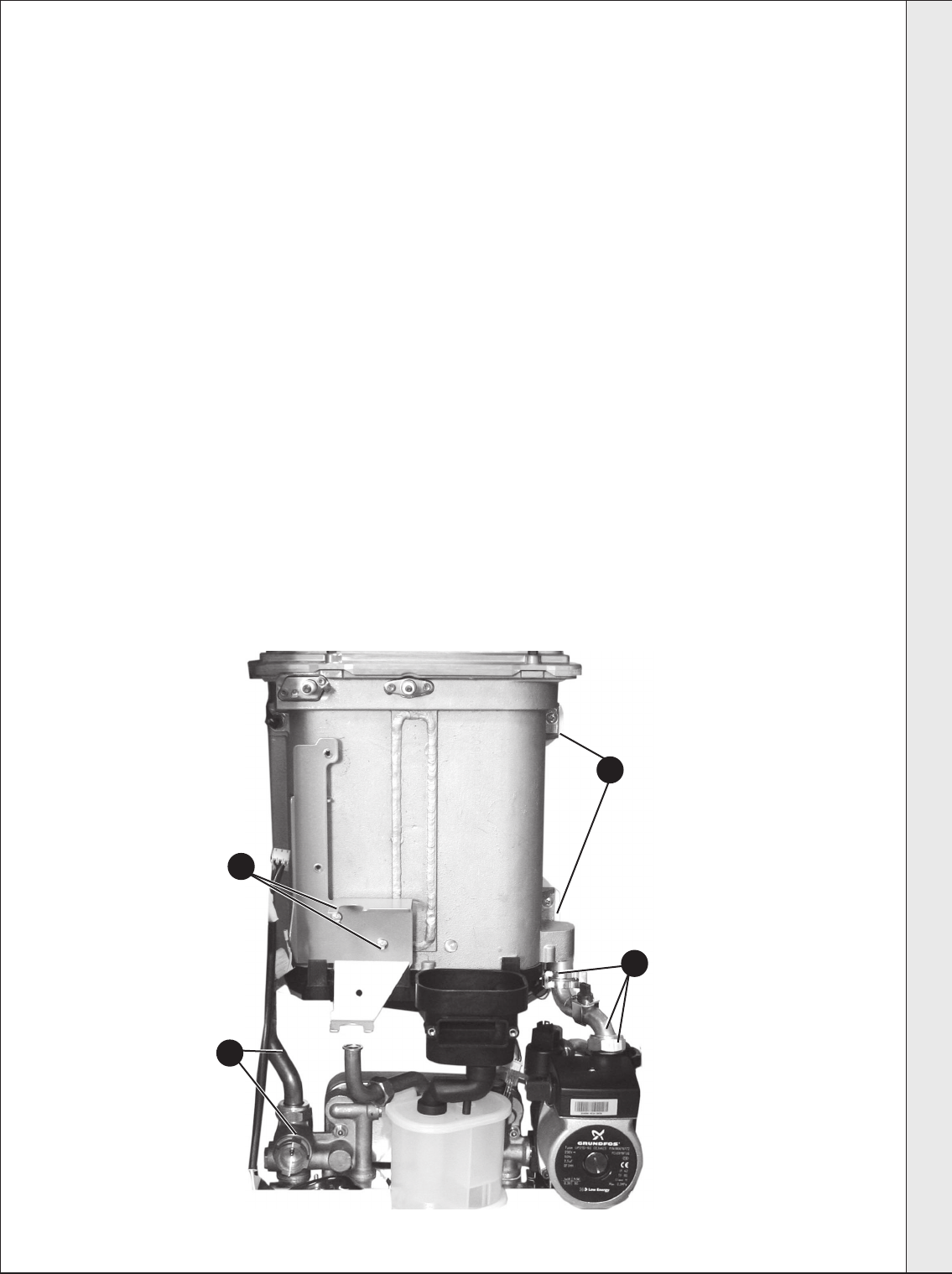
55
SERVICING
Keston Combi - Installation and Servicing
72
HEAT ENGINE RENEWAL
Refer also to Frame 6 - ‘Boiler Exploded View’
IMPORTANT
Before starting the removal procedure, protect the gas and electrical controls with a waterproof sheet or plastic bag.
12. Undo the inlet pipe union nut and remove the retaining spring
clip and remove pipe.
13. Undo the ow pipe union nut and remove pipe.
14. Remove the condensate rubber pipe. Refer to Frame 56, no. 2.
15. Remove the two heat exchanger xing screws.
16. Remove the Heat exchanger.
17. Reassemble in reverse order, ensuring the heat exchanger
LH retaining bracket is correctly positioned. Replace any
new ‘o’ rings supplied with new heat exchanger and replacing
gaskets or seals if any sign of damage is evident. When
replacing the spring clips located on both the ow and return
pipe connections, ensure clip is oriented to correctly match
connecting pipe diameters.
18. Ensure the trap/siphon is lled with water. Refer to Frame 56.
19. Rell the boiler. Refer to Frame 22.
20. Check operation of the boiler. Refer to Frame 36.
1. Refer to Frame 45.
2. Drain the boiler. Refer to Frame 60.
3. Remove the fan / venturi assembly and place on one side.
Refer to frame 46.
4. Remove the burner and place on one side. Refer to Frame
48.
5. Remove the ignition and detection electrodes and diverter
actuator head. Refer to Frames 51, 52 and 55.
6. Remove the spark generator. Refer to Frame 53.
7. Disconnect ue thermostat.
8. Remove the gas valve. Refer to Frame 54.
9. Remove the expansion vessel. Refer to Frame 73.
10. Remove the no ow thermistor. Refer to Frame 71.
11. Remove the 2 M5 screws retaining the gas valve mounting
bracket and transfer bracket to the new heat exchanger.
15
12
13
11
SERVICING
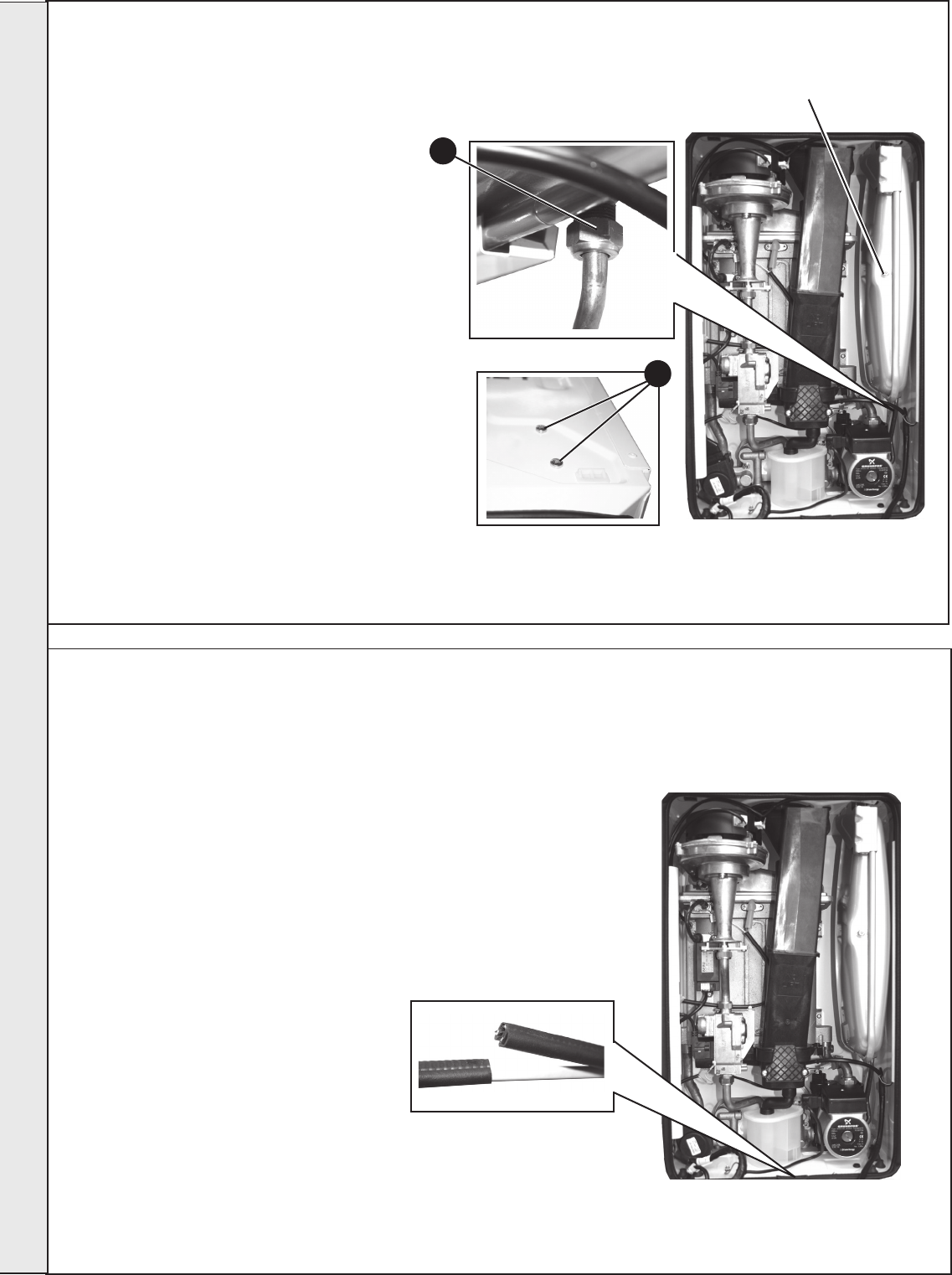
56
SERVICING
Keston Combi - Installation and Servicing
74
BOILER SEALING PANEL SEAL REPLACEMENT
73
EXPANSION VESSEL RECHARGING & REPLACEMENT
RECHARGING
1. Refer to Frame 45.
2. Remove the charge point cover.
3. Recharge the tank pressure to 0.75 bar.
4. Re-assemble in reverse order
5. Check operation of the boiler. Refer to Frame36.
REPLACEMENT
6. Refer to Frame 45.
7. Drain the boiler CH circuit. Refer to Frame 60.
8. Unscrew the union nut on the vessel water
connection pipe.
9. Support the expansion vessel and unscrew the 2
screws from the securing clamp, located on the top
of the boiler, and remove. (Note the position of the
bracket on the vessel)
10. Remove the expansion vessel.
11. Fit the new expansion vessel.
12. Reassemble in reverse order.
13. Rell the boiler. Refer to Frame 22.
14. Check operation of the boiler. Refer to Frame 36.
3
1. Refer to Frame 45.
2. Remove the old seal from the casing and
thoroughly clean the casing surfaces.
3. Fit the new seal, ensuring the bottom joint
provides an air tight seal.
5. Reassemble in reverse order.
6. Check operation of the boiler. Refer to
Frame 36.
Note. Ensure that the boiler front panel is
correctly sealed, compressing the seal
to make an airtight joint.
Recharge
Point
9
SERVICING
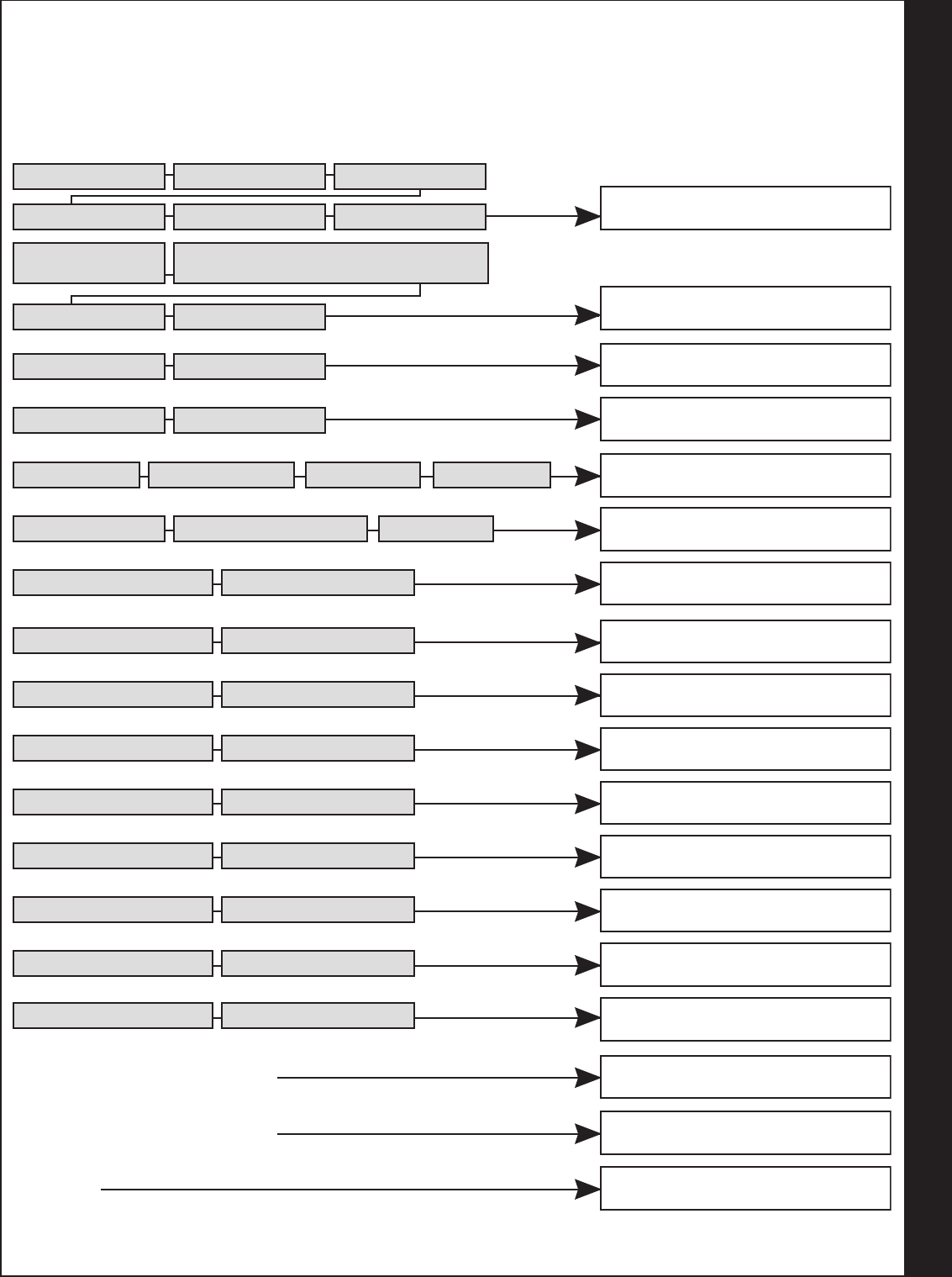
57
Fault Finding
Fault Finding Fault Finding Fault Finding Fault Finding Fault Finding
Keston Combi - Installation and Servicing
75
FAULT FINDING CHART MAIN MENU
Overheat lockout 1 Fill system to 1.0 bar 2 Bleed radiators
3 Check radiator valves open
4 Reset boiler 5 Contact installer
Go to Frame 76
Flow Temperature Overheat Lockout
Ignition lockout /
Flue Overheat 1 Check other gas appliances work
2 Reset boiler
3 Contact Installer
Go to Frame 77
Ignition Lockout
Low water pressure 1 Fill system to 1.0 bar Go to Frame 79
Low Water Pressure
2 Bleed radiators
Flame loss 1 Check other gas appliances Go to Frame 80
Flame Loss
2 contact installer
Too many resets Contact installer 5 Resets with 15 minutes
Turn power off and on
Fault 8 Contact installer
3 Contact installer
Go to Frame 78
False Flame Lockout
Fan fault Contact installer Go to Frame 81
Fan Fault
Return thermistor fault Contact installer Go to Frame 82
Return Thermistor Fault
Outside sensor fault Contact installer Go to Frame 83
Outside sensor fault
Low mains voltage Contact electricity provider Low mains voltage
Contact Electricity Provider
PCB Fault Contact installer If PCB is a spare check Boiler Chip Card
(BCC) fitted otherwise replace PCB
PCB Replaced Reset boiler Reset the boiler
Flow thermistor fault Contact installer Go to Frame 82
Return Thermistor Fault
Boiler Chip Card Fault Contact installer Go to Frame 85
BCC Fault
Go to Frame 86
No CH operation but DHW works OK
No CH operation but DHW operates OK
Go to Frame 87
No DHW but CH operates OK
No DHW operation but CH operates OK
No Display Go to Frame 88
No Display
12 month service interval request
Contact installer It is recommended to have the boiler serviced
Reset the boiler to clear message
Note. Boiler status display information is shown in shaded boxes below. Up to six messages will be displayed in rotation.
RESET PROCEDURE - To reset boiler, turn mode knob to reset position and immediately turn knob back to required setting.
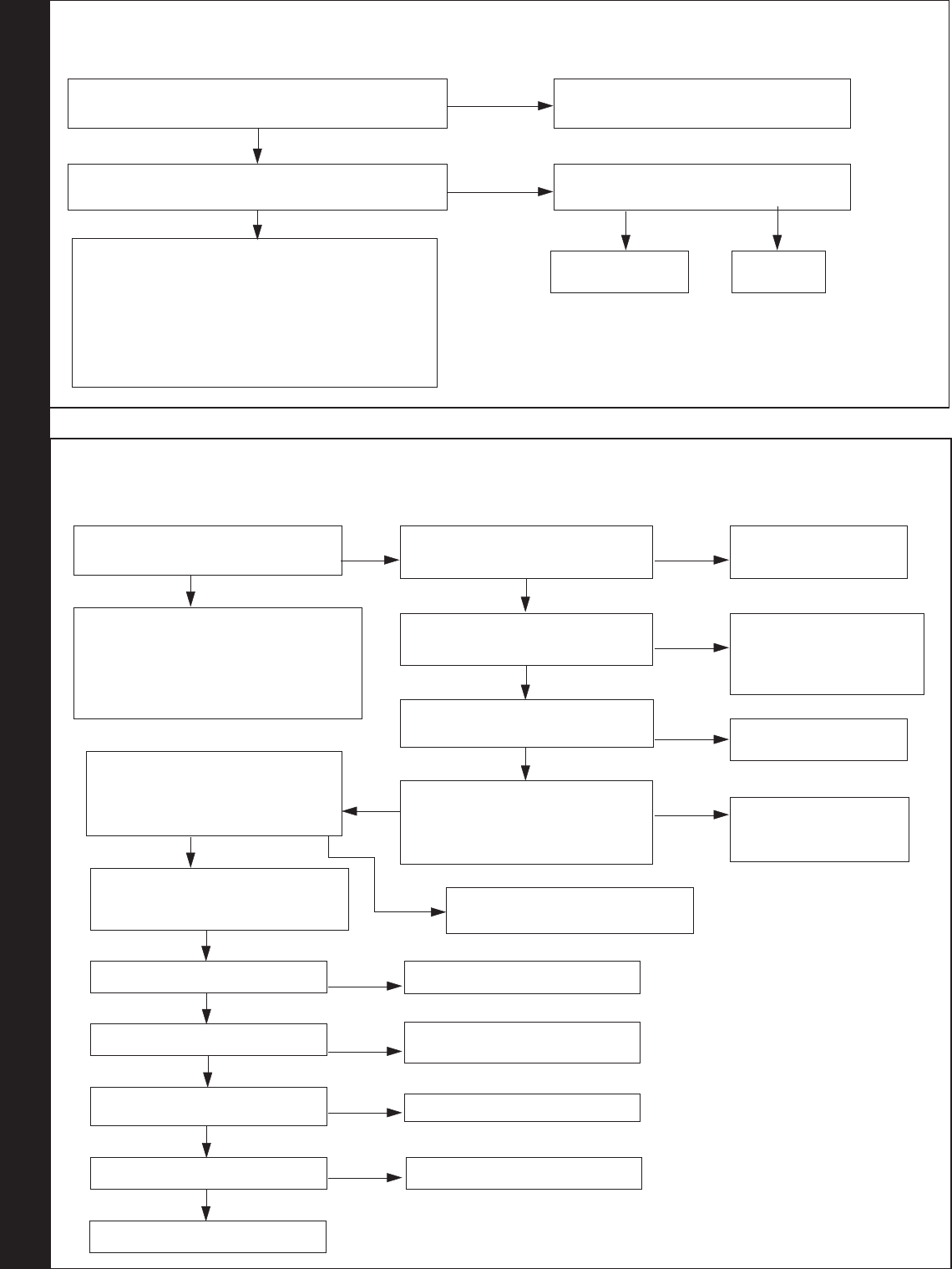
58
Fault Finding
Fault Finding Fault Finding Fault Finding Fault Finding Fault Finding
Keston Combi - Installation and Servicing
76
OVERHEAT LOCKOUT - 1 FILL SYSTEM TO 1.0 BAR - 2 BLEED RADIATORS -
3 CHECK RADIATOR VALVES OPEN - 4 RESET BOILER - 5 CONTACT INSTALLER
Is the Boiler and CH System lled with water and all
isolation and radiator valves open?
YES
Fill and vent the system and open all
isolation valves, then reset boiler
Is the Flow/Return Differential across the Boiler in
excess of 30°C?
NO
Check that the Pump is rotating freely. Is
the Differential now below 20°C?
YES
NO
Replace the Pump,
then reset boiler
NO
OK, now
reset boiler
YES
RESET PROCEDURE - To reset boiler, turn mode knob to reset
position and immediately turn knob back to required setting.
Check the Return Thermistor (Refer to Frame 49)
Check resistance using a suitable multimeter
connected across the thermistor’s terminal pins
At 25 oC expect 9,700 - 10,300 Ohms
At 60 oC expect 2,400 - 2,600 Ohms
At 85 oC expect 1,000 - 1,100 Ohms
77
IGNITION LOCKOUT / FLUE OVERHEAT - 1 CHECK OTHER GAS APPLIANCES WORK
- 2 RESET BOILER - 3 CONTACT INSTALLER
If the boiler is reset does the boiler ignite
for a short time and then extinguish?
YES
YES
Is the Gas Pressure available at
the Boiler Inlet (>18 mbar)?
Check the detection electrode and
associated harness for: continuity,
visual condition and position (Refer to
Frame 52). Check if the condensate
pipe is blocked. Replace as necessary
NO Check gas supply and
rectify fault
NO
YES
Is approx 215Vdc supply available
at the Gas Valve? (* See note)
YES
Check spark generator and associated
harness for: continuity and visual
condition. (Refer to Frame 53) Are
these functioning correctly?
Check ignition electrode and associated
harness for: continuity, visual condition
and position. (Refer to Frame 51) Are
these functioning correctly?
Check siphon and condensate drain
pipe work for blockage and rectify if
necessary. Boiler now working OK?
Check wiring connection
from gas valve to PCB for
continuity. If the wiring is
OK then replace the PCB
NO
Replace Spark
Generator and harness
as necessary
NO
Replace Ignition Electrode and
associated harness as necessary
NO
Check if burner is damaged
Unplug gas valve. Is resistance
between outside pins 4KΩ (±2)?
YES
Replace Gas Valve
NO
YES
RESET PROCEDURE - To reset
boiler, turn mode knob to reset
position and immediately turn
knob back to required setting.
NO
Check ue for obstruction
Check wiring to thermostat
Check ue temperature always
remains below 90ºC
YES Clear obstruction
YES Ensure wiring correctly
connected
YES
YES
Replace Thermostat
Replace heat exchanger
* Note: due to the wave form of
the rectied voltage, the reading
will vary depending on the type
of meter used to measure the
value. In general terms a reading
greater than 150V indicates that
the correct voltage is supplied to
the gas valve.
Replace burner
NO
NO
NO
NO
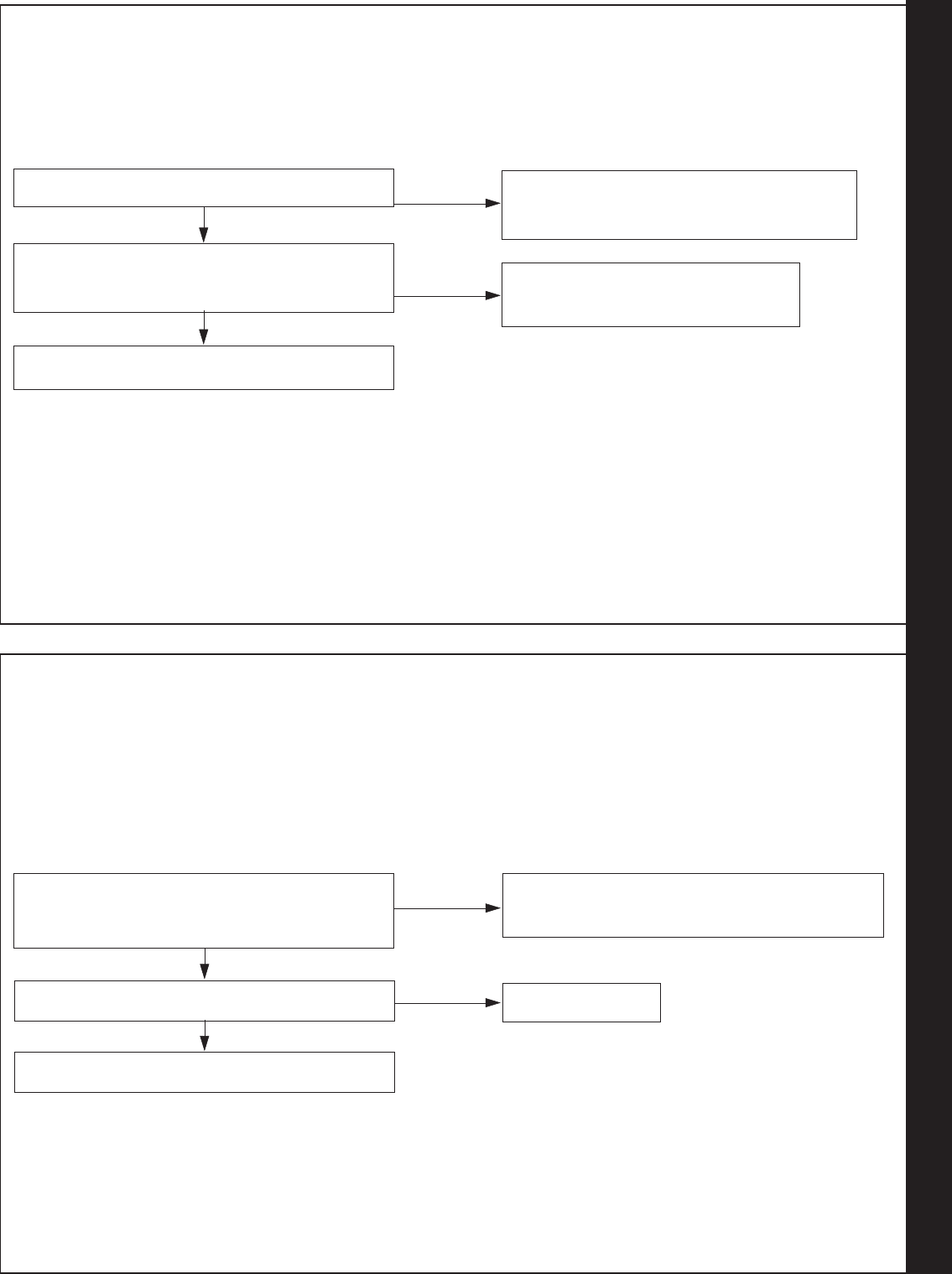
59
Fault Finding
Fault Finding Fault Finding Fault Finding Fault Finding Fault Finding
Keston Combi - Installation and Servicing
78
FAULT 8 - CONTACT INSTALLER (FALSE FLAME LOCKOUT)
Reset the boiler, does Boiler Work OK?
NO
Check routing and integrity of internal boiler
wiring is OK. Check condition of Flame Sense
Electrode and replace if deteriorated.
Separate the ame detection electrode in-line
connector. Is there continuity between the terminals
pins connected to the electrode?
YES
Replace Flame Detection Electrode
YES
NO
Check routing and integrity of internal boiler wiring.
79
LOW WATER PRESSURE - 1 FILL SYSTEM TO 1.0 BAR - 2 BLEED RADIATORS -
3 CONTACT INSTALLER
Are the Boiler and CH System lled with water and
all isolation and radiator valves open (check pressure
gauge is between 1 to 1.5 bar)?
NO Fill and vent the system and open all isolation valves
YES
Are connections on water pressure sensor secure?
RESET PROCEDURE - To reset boiler, turn mode knob to reset position and immediately turn knob back to required setting.
YES
Replace water pressure sensor
NO
Re-t connections
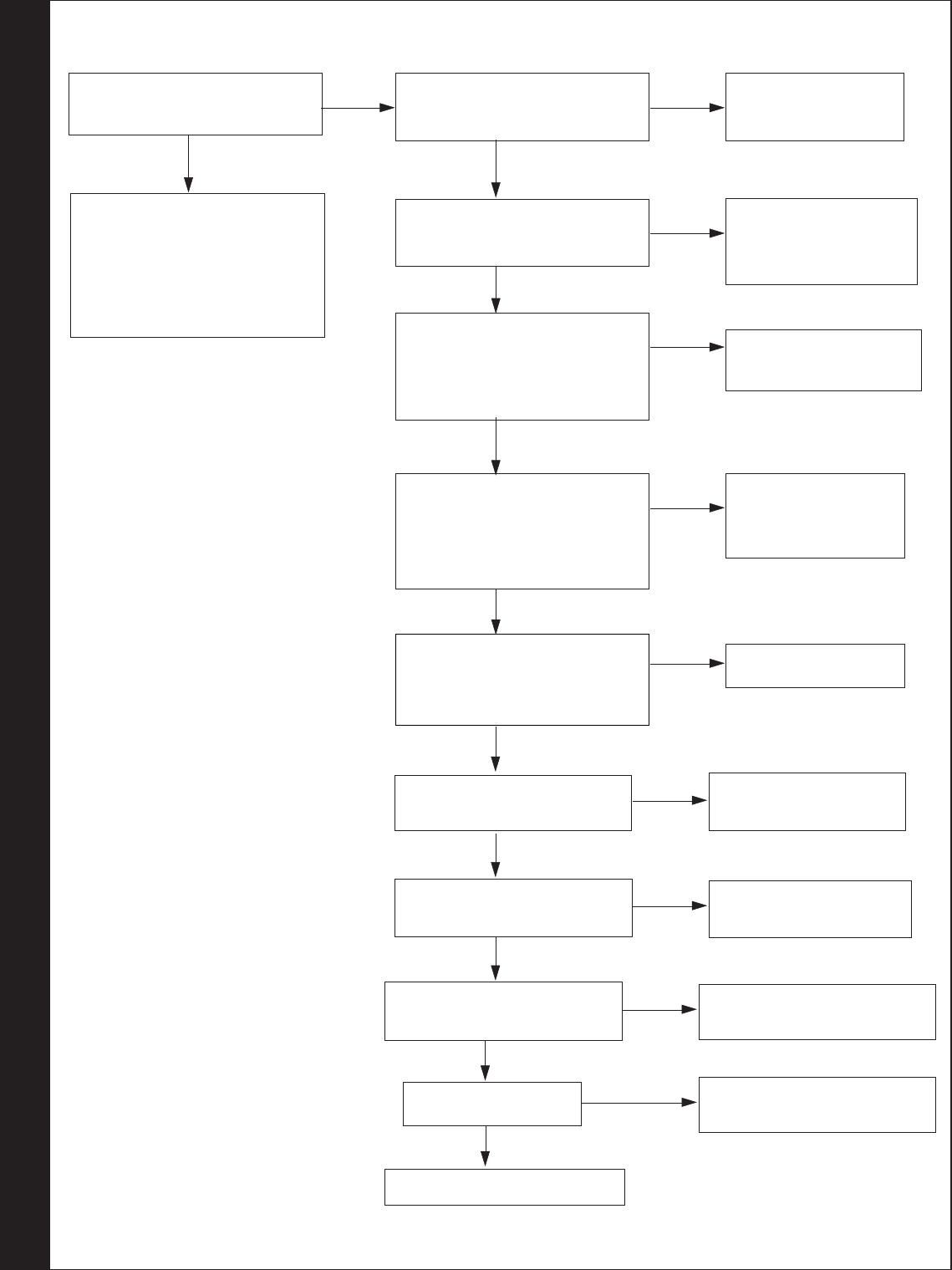
60
Fault Finding
Fault Finding Fault Finding Fault Finding Fault Finding Fault Finding
Keston Combi - Installation and Servicing
80
FLAME LOSS - 1 CHECK OTHER GAS APPLIANCES WORK -
2 CONTACT INSTALLER
Does the boiler ignite for a short
time and then extinguish?
YES
Is the Gas Pressure available at
the Boiler Inlet (18 mbar)?
Check the detection electrode and
associated harness for: continuity,
visual condition and position (Refer
to Frame 52). Check if condensate
pipe is blocked. Check if ue is
blocked.
Replace as necessary
NO Check gas supply and
rectify fault
NO
YES
Is 215Vdc supply available at the
Gas Valve while the ame is on?
(* See note)
Check spark generator and
associated harness for: continuity
and visual condition. (Refer to
Frame 53) Are these functioning
correctly?
Check ignition electrode and
associated harness for: continuity,
visual condition and position.
(Refer to Frame 51) Are these
functioning correctly?
Check siphon and condensate
drain pipe work for blockage and
rectify if necessary. Boiler now
working OK?
Check wiring from gas
valve to PCB for continuity.
If the wiring is OK then
replace the PCB
NO
Replace Spark Generator
and Harness as necessary.
NO
Replace Ignition
Electrode and
associated harness as
necessary
NO
Replace Gas Valve
NO
NO
Check ue for obstruction
NO
Check wiring to thermostat
YES Clear obstruction
YES Ensure wiring correctly
connected
Check if burner is
damaged
Check ue temperature always
remains below 90ºC
NO
YES Replace Thermostat
NO
Replace heat exchanger
YES Replace burner
* Note: due to the wave form of the rectied voltage, the reading will vary depending on the type of meter used to measure the
value. In general terms a reading greater than 150V indicates that the correct voltage is supplied to the gas valve.
NO
YES
YES
YES
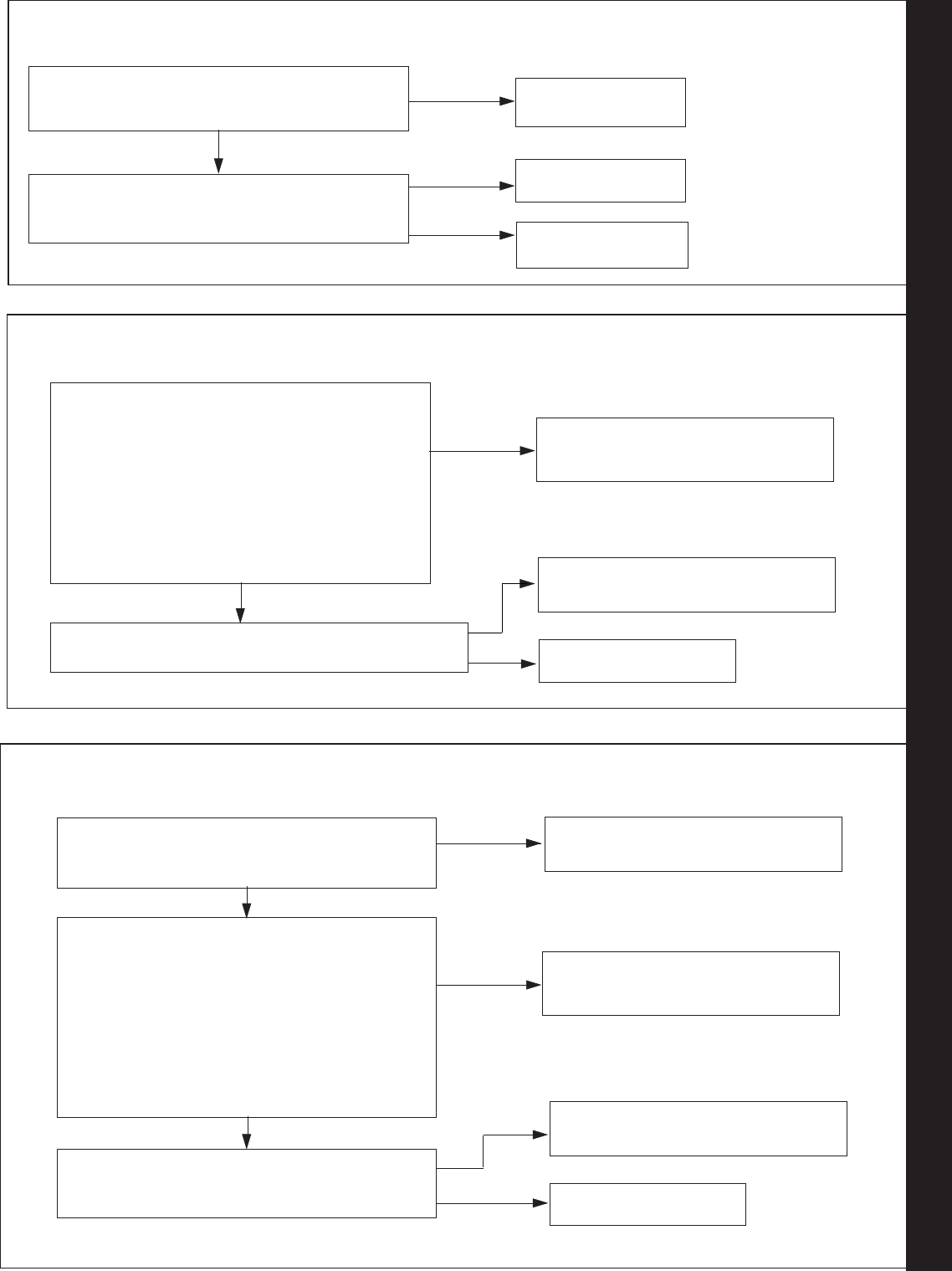
61
Fault Finding
Fault Finding Fault Finding Fault Finding Fault Finding Fault Finding
Keston Combi - Installation and Servicing
82
RETURN THERMISTOR FAULT - CONTACT INSTALLER
Remove the Return Thermistor from the CH Return
Pipe and disconnect the wires.
Check the resistance using a suitable multimeter
connected across the thermistor’s terminal pins.
At 25 oC expect 9,700 - 10,300 Ohms
At 60 oC expect 2,400 - 2,600 Ohms
At 85 oC expect 1,000 - 1,100 Ohms
Is the Thermistor value correct?
YES
Is there continuity between the PCB and the Thermistor?
Fit a new Thermistor
NO
81
FAN FAULT - CONTACT INSTALLER
Does the wiring from the Fan to the PCB have
secure connections at both ends and has not
deteriorated? Does the wiring have continuity?
YES
Rectify Wiring &
connections
Is there 230Vac at the Blue and Brown connections
to the 3 way connection on the Fan?
NO
Replace PCB
NO
YES
Replace Fan
YES
Replace PCB
Check and replace wiring as necessary
NO
83
OUTSIDE SENSOR FAULT - CONTACT INSTALLER
Disconnect the wires to the outside sensor.
Check the resistance using a suitable multimeter
connected across the Outside Sensor’s terminal pins.
At 0 oC expect 31,000 - 35,000 Ohms
At 15 oC expect 15,000 - 16,500 Ohms
At 30 oC expect 7,700 - 8,500 Ohms
Is the Outside Sensor value correct?
YES
Is the wiring securely connected between the
incoming terminal block boiler connection of the
Outside Sensor and the PCB? Replace PCB
Fit a new Outside Sensor
NO
Securely connect the wiring at the
Terminal Block and the PCB
Is the wiring securely connected at both the boiler and
Outside Sensor?
YES
NO Securely connect the wiring at both the
boiler and Outside Sensor
NO
YES
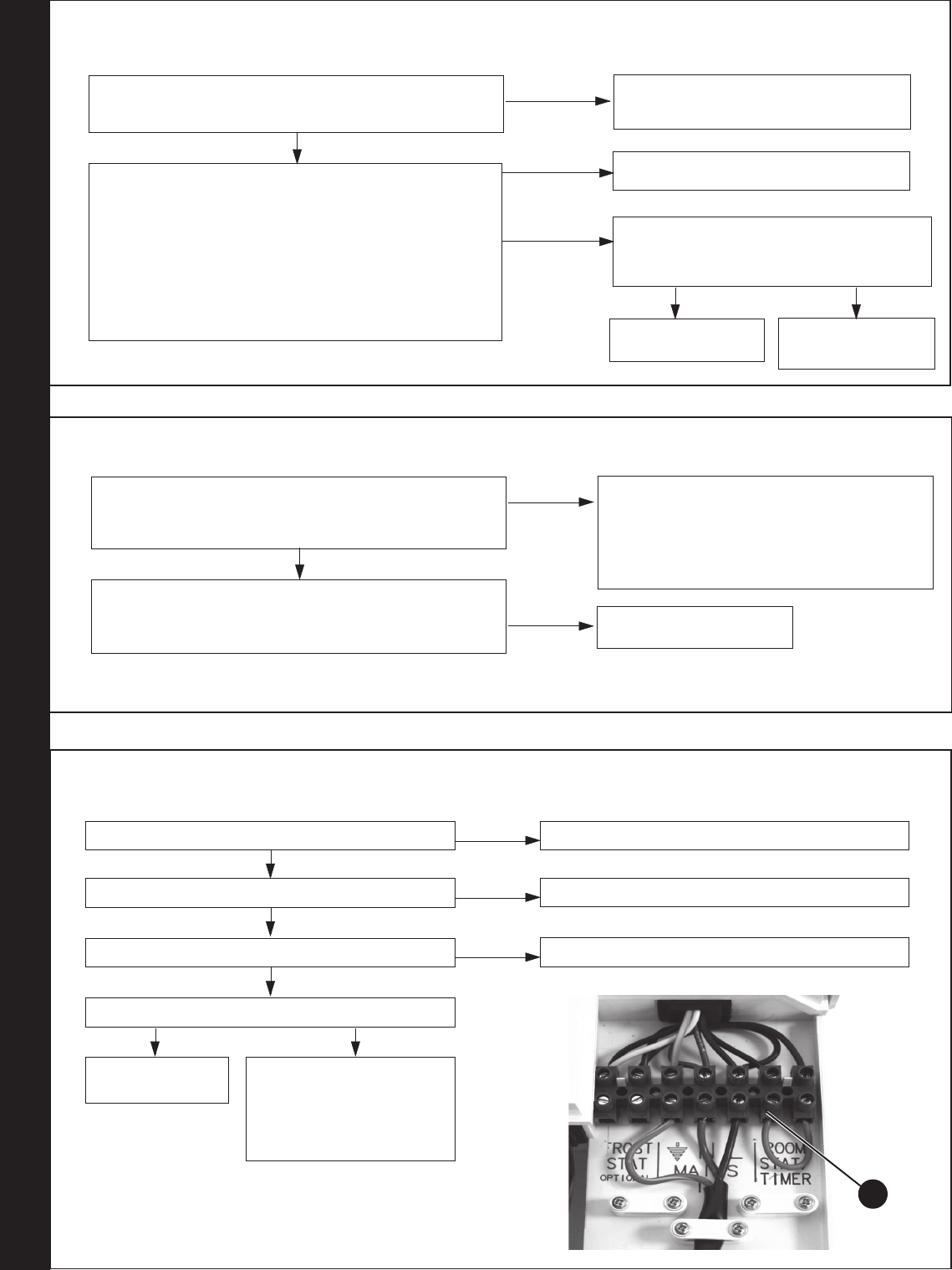
62
Fault Finding
Fault Finding Fault Finding Fault Finding Fault Finding Fault Finding
Keston Combi - Installation and Servicing
84
FLOW THERMISTOR FAULT - CONTACT INSTALLER
Disconnect the wiring from the Flow Thermistor
Check the resistance using a suitable multimeter connected
across the Thermistor’s terminal pins.
At 25 oC expect 9,700 - 10,300 Ohms
At 60 oC expect 2,400 - 2,600 Ohms
At 85 oC expect 1,000 - 1,100 Ohms
Is the Thermistor value correct?
Is the wiring securely connected to the low
voltage 6 way connector at the front left hand
side of the PCB?
Replace PCB
Fit a new Thermistor
NO
YES
Securely connect the
wiring to the PCB
Is the wiring securely connected to the Flow Thermistor
(located in the top of the Heat Exchanger?)
YES
YES NO
NO Securely connect the wiring to the Flow
Thermistor
85
BOILER CHIP CARD FAULT - CONTACT INSTALLER
Is the correct BCC for the boiler securely inserted into the
slot at the front left of the PCB?
(identied by the label on the BCC)
YES
NO Securely attach the BCC for the boiler onto
the PCB and after switching power on and ‘c0’
being shown, reset the boiler.
Note. Ensure the correct orientation of BCC by
placing “TOP” side up.
Replace the BCC with a new BCC (that is correct for the
boiler). After switching power on and ‘c0’ being shown,
reset the boiler. Is ‘c2’ still shown? Replace PCB
YES
RESET PROCEDURE - To reset boiler, turn mode knob to reset position and immediately turn knob back to required setting.
86
NO CH OPERATION BUT DHW WORKS OK
Is the mode knob in the Winter position?
YES
YES
YES
YES NO
NO
NO
NO
Move the mode knob to the Winter position
Are the Timer and the Room Thermostat switched on? Switch the Timer and Room Thermostat On
Are the Radiator Valves Open? Open the Radiator Valves
Is there 230Vac at (A)?
Replace the
Diverter Valve
There is no Voltage from the
Timer/Room Stat. This is not
boiler fault. Ensure Voltage
is supplied to boiler by
rectifying external wiring.
A
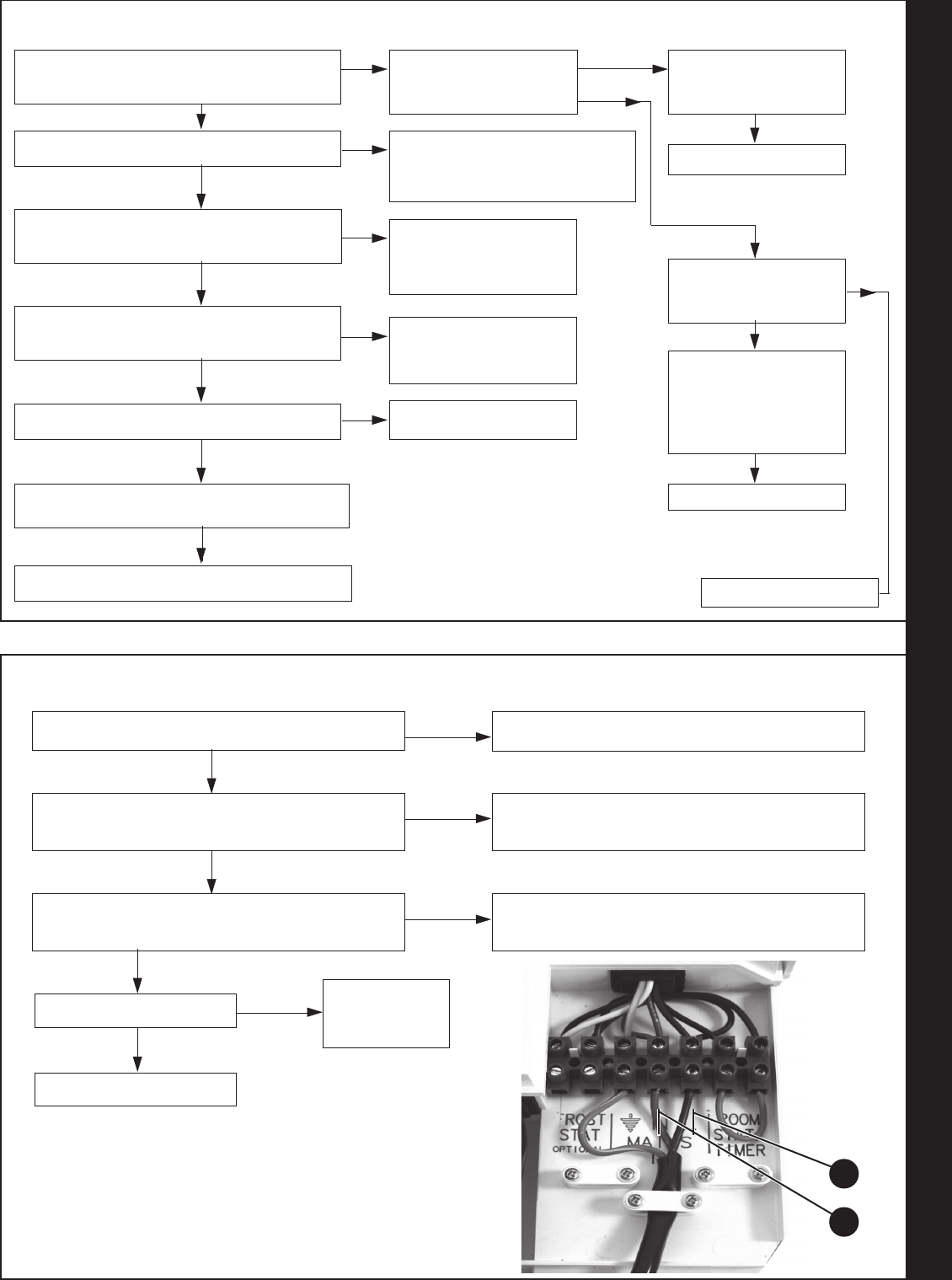
63
Fault Finding
Fault Finding Fault Finding Fault Finding Fault Finding Fault Finding
Keston Combi - Installation and Servicing
88
NO DISPLAY
Is there 230Vac to the boiler at L and N?
YES
NO Supply power to the boiler
Is the wiring from the terminal block to the Main PCB
connected securely?
YES
NO Connect the wiring from the terminal block to the
Main PCB securely.
Is the ribbon cable from the main PCB to the User
Interface PCB connected securely?
NO Connect the ribbon from the main PCB to the User
Interface PCB securely
YES
Replace the
User Interface
PCB
L
N
Is ribbon cable damaged?
YES
Replace ribbon cable
NO
87
NO HW BUT CH ON
Does the display show “hot water” -
“temperature XXºC” - “high efciency”?
NO Is the red neon
illuminated on the turbine
sensor?
YES
Are the ow rates correct as per Frame 2.
Is the wiring between the PCB and the diverter
valve motor connected?
YES
YES
Check diverter head fully engaged and clip
secured onto waterset.
YES
Is diverter stuck in the CH position
YES
Check and replace diverter valve motor head.
Is Boiler DHW OK?
NO
Change diverter Valve cartridge - rear section
NO Adjust ow rates to achieve 35º
temp rise and check lter tted in
turbine is not blocked with debris.
NO Reconnect wiring or
replace wiring harness if
no continuity.
NO Re-engage diverter
head and secure clip to
wateset
NO Replace PCB
YES Is hot and cold
pipework crossed?
Replace PCB
NO
NO
Is the wiring connected
between PCB and DHW
sensor?
Remove the turbine, and
check for debris in the
turbine & lter. Replace
turbine if necessary. Is
DHW OK?
YES
NO
Re-connect wiring
NO
Replace turbine sensor
64
SPARE PARtS
Keston Combi - Installation and Servicing
When replacing any part on this appliance use only spare parts that you can be assured conform to the safety and performance
specication that we require. Do not use reconditioned or copy parts that have not been clearly authorised by Keston. Failure to do so
could affect safety or performance of this appliance.
Our Parts team are also available to help with your Keston Spare Parts enquiries on 01482 498665.
When calling, and to ensure we can provide you with the most accurate parts information, please ensure you have the following to
hand;
- Boiler Model
- Appliance GC Number
- Boiler Serial Number
65Keston Combi - Installation and Servicing
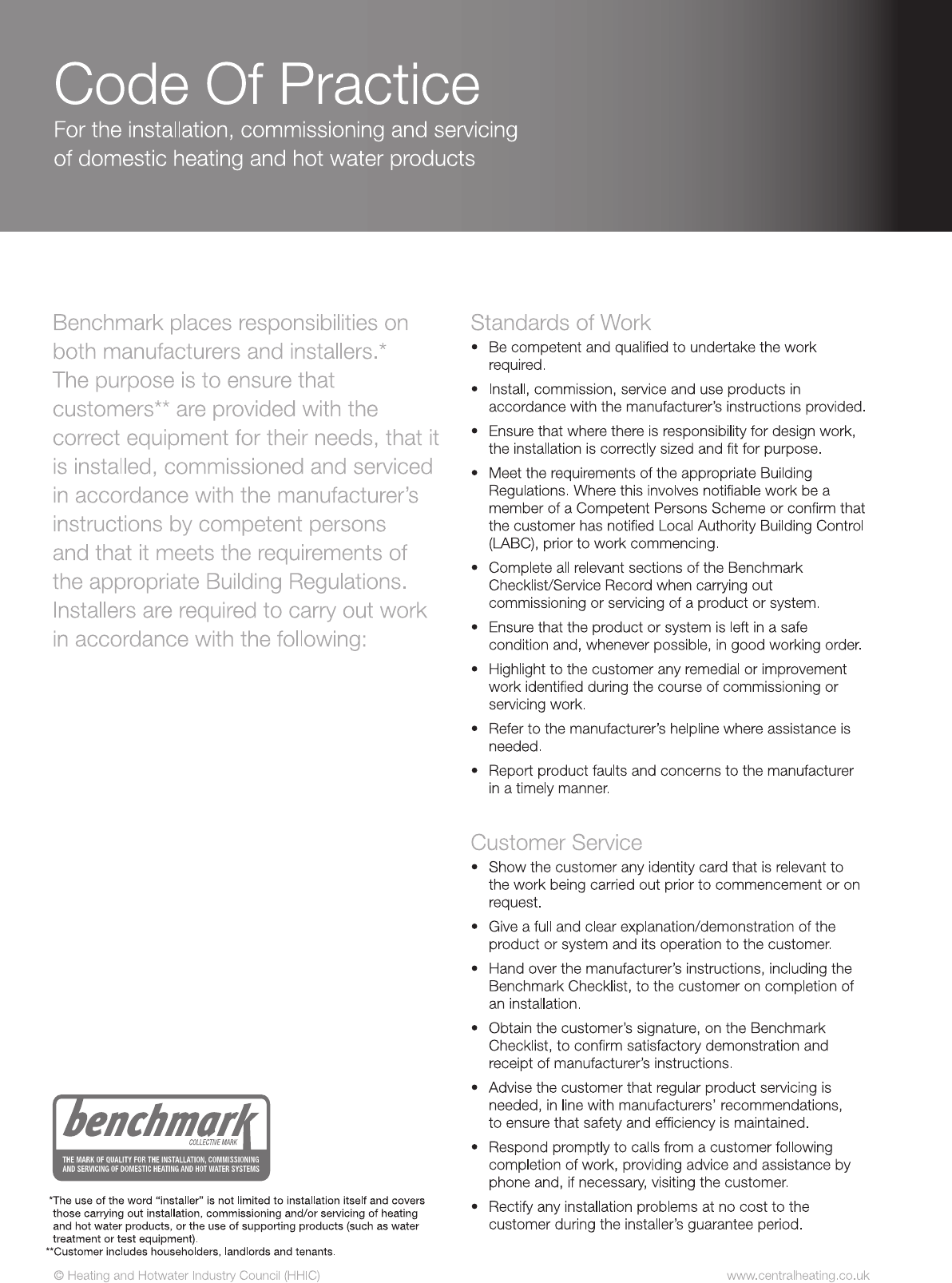
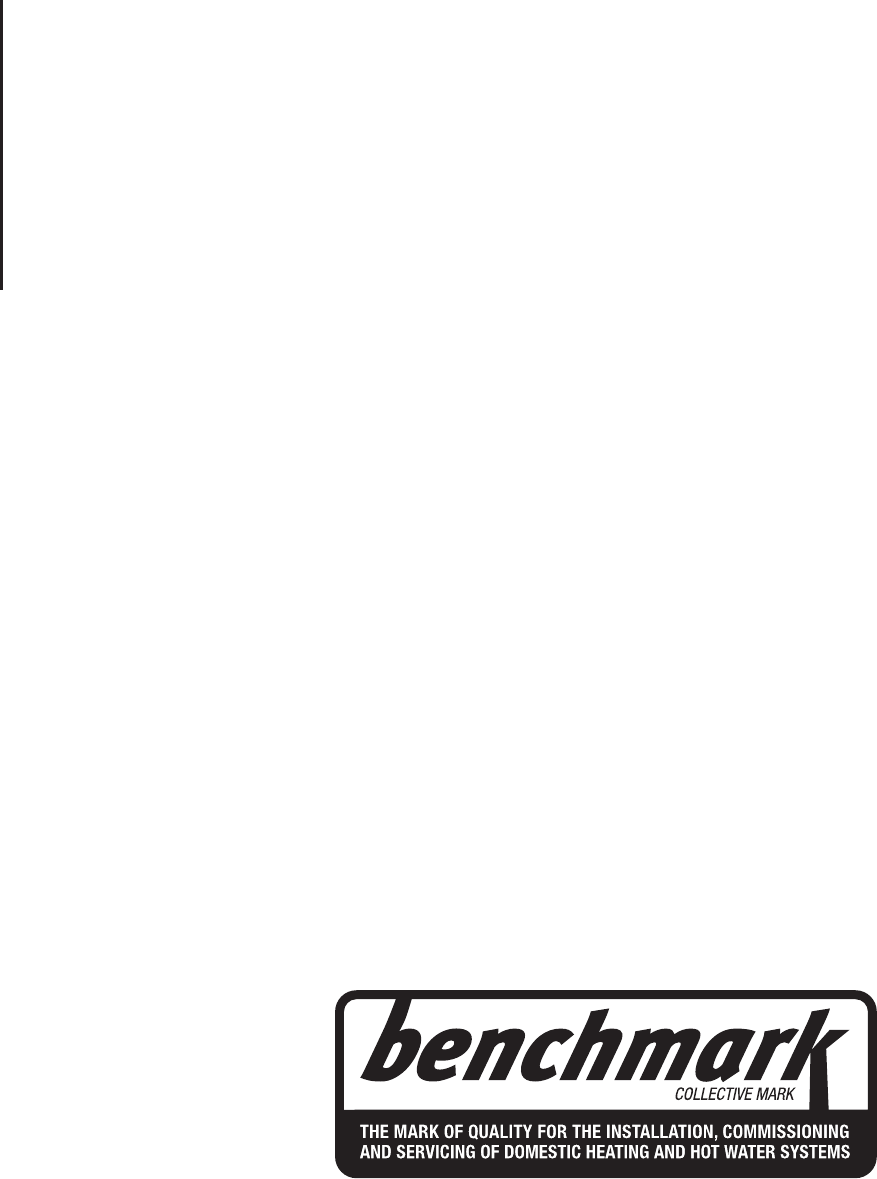
© Heating and Hotwater Industry Council (HHIC)
www.centralheating.co.uk
Benchmark Commissioning and
Servicing Section
It is a requirement that the boiler is installed and commissioned to the
manufacturers instructions and the data fields on the commissioning checklist
completed in full.
To instigate the boiler guarantee the boiler needs to be registered with the
manufacturer within one month of the installation.
To maintain the boiler guarantee it is essential that the boiler is serviced annually
by a Gas Safe registered engineer who has been trained on the boiler installed.
The service details should be recorded on the Benchmark Service Interval
Record and left with the householder.
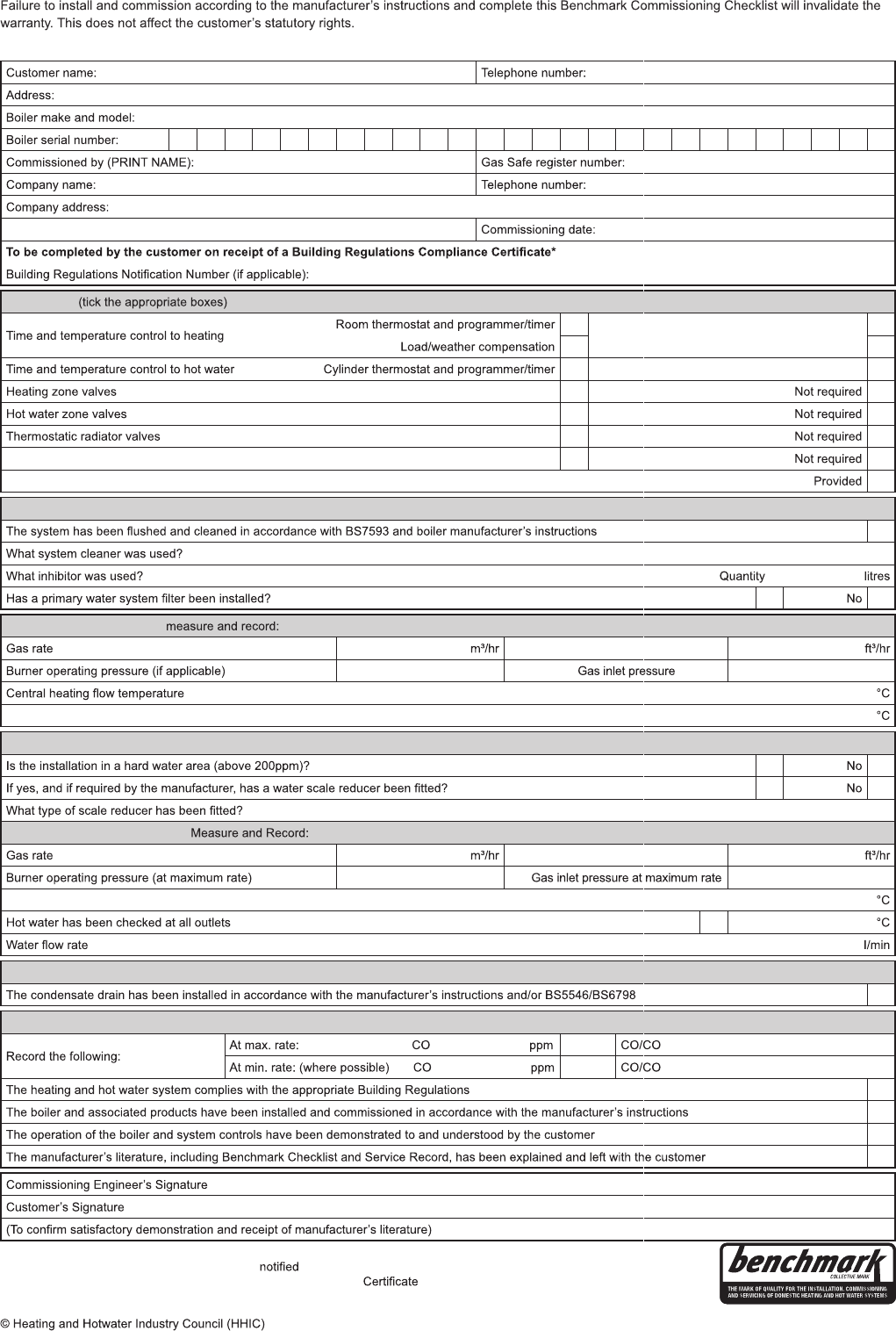
* All installations in England and Wales must be to Local Authority Building Control (LABC) either directly or through a
Competent Persons Scheme. A Building Regulations Compliance will then be issued to the customer.
www.centralheating.co.uk
This Commissioning Checklist is to be completed in full by the competent person who commissioned the boiler as a means of demonstrating
compliance with the appropriate Building Regulations and then handed to the customer to keep for future reference.
GAS BOILER SYSTEM COMMISSIONING CHECKLIST
CONTROLS
Programmable room thermostat
Optimum start control
Combination Boiler
Fitted
Fitted
Fitted
Automatic bypass to system Fitted
Boiler interlock
ALL SYSTEMS
Yes
Yes
CENTRAL HEATING MODE
OR
mbar OR mbar
Central heating return temperature
COMBINATION BOILERS ONLY
Yes
Yes
DOMESTIC HOT WATER MODE
OR
mbar OR mbar
Cold water inlet temperature
Yes Temperature
CONDENSING BOILERS ONLY
Yes
ALL INSTALLATIONS
AND² Ratio
AND² Ratio
Yes
Yes
Yes
Yes
www.centralheating.co.uk
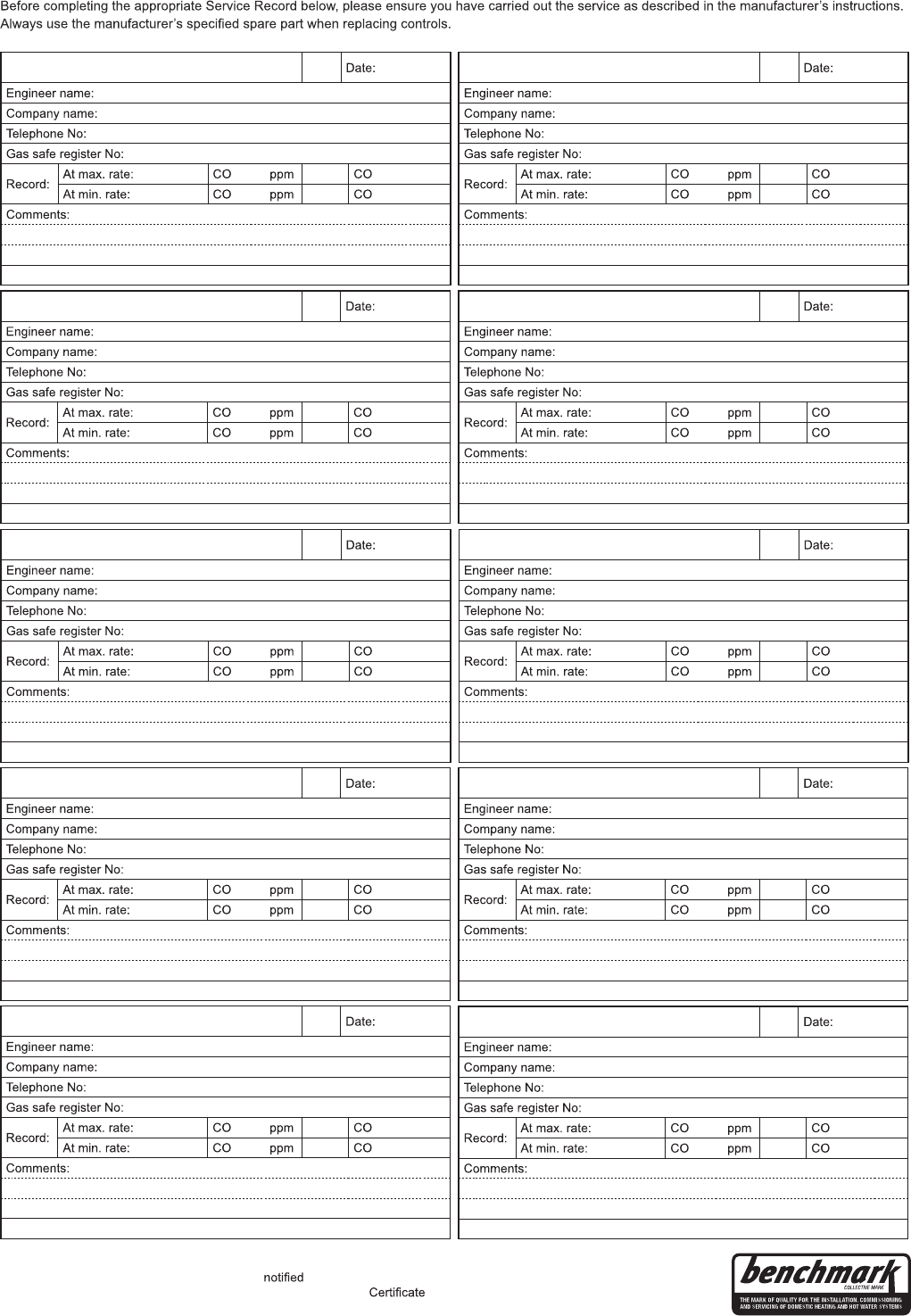
* All installations in England and Wales must be to Local Authority Building Control (LABC) either directly or through a
Competent Persons Scheme. A Building Regulations Compliance will then be issued to the customer.
© Heating and Hotwater Industry Council (HHIC) www.centralheating.co.uk
It is recommended that your heating system is serviced regularly and that the appropriate Service Interval Record is completed.
Service Provider
SERVICE RECORD
SERVICE 01
AND ² %
(Where Possible) AND ² %
Signature
SERVICE 02
AND ² %
(Where Possible) AND ² %
Signature
SERVICE 03
AND ² %
(Where Possible) AND ² %
Signature
SERVICE 04
AND ² %
(Where Possible) AND ² %
Signature
SERVICE 05
AND ² %
(Where Possible) AND ² %
Signature
SERVICE 06
AND ² %
(Where Possible) AND ² %
Signature
SERVICE 07
AND ² %
(Where Possible) AND ² %
Signature
SERVICE 08
AND ² %
(Where Possible) AND ² %
Signature
SERVICE 09
AND ² %
(Where Possible) AND ² %
Signature
SERVICE 10
AND ² %
(Where Possible) AND ² %
Signature
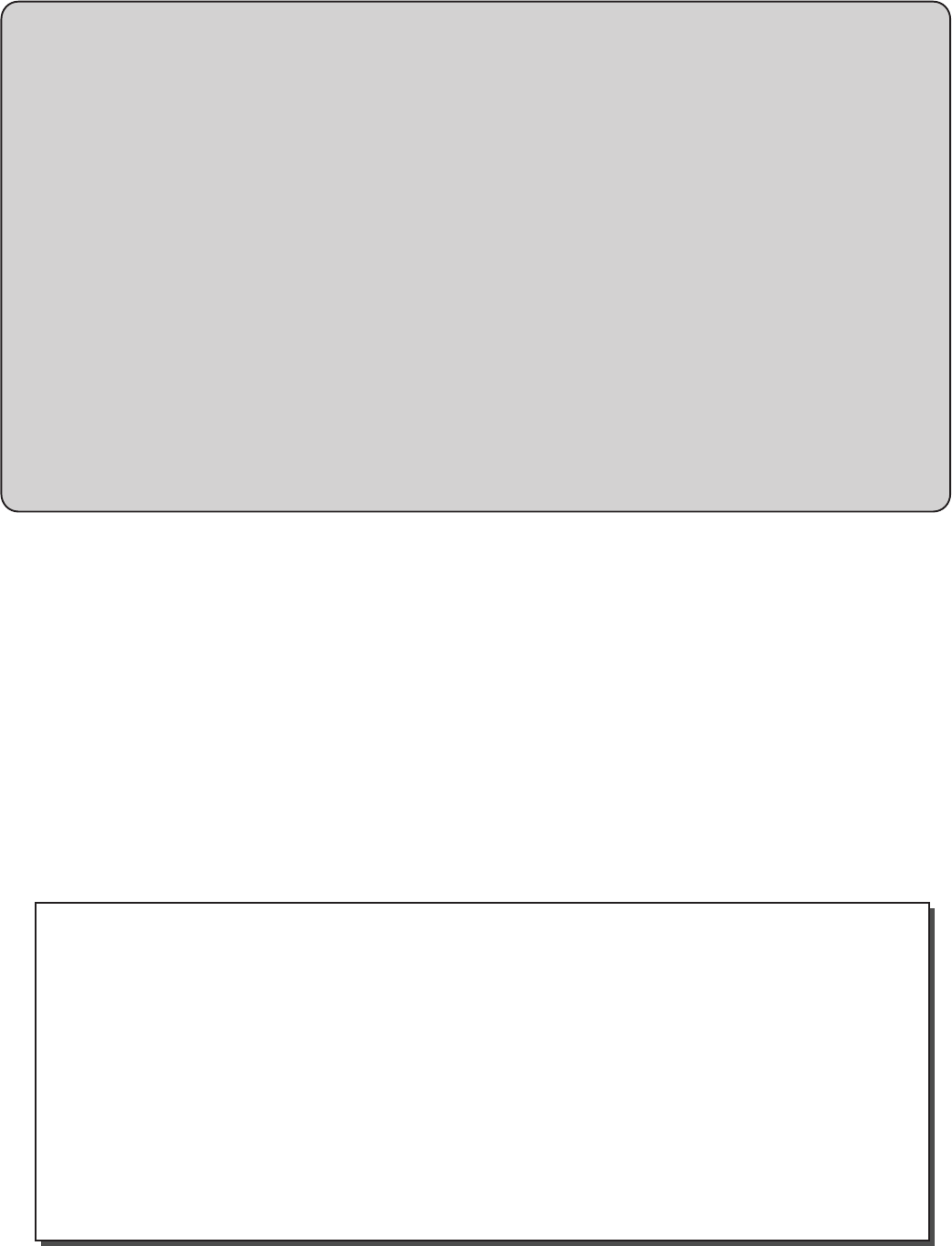
70
Keston Combi - Installation and Servicing
FLOWCHART FOR CO LEVEL AND COMBUSTION RATIO
CHECK ON COMMISSIONING A CONDENSING BOILER
Important Preliminary Information on Checks
The air gas ratio valve is factory-set and must not be adjusted DURING COMMISSIONING.
If the boiler requires conversion to operate with a different gas family (e.g. conversion from natural gas to LPG) sepa-
rate guidance is provided with the conversion kit supplied and this must be followed.
PRIOR TO CO LEVEL AND COMBUSTION RATIO CHECK
The installation instructions must have been followed, gas type verified and gas supply pressure / gas rate checked as
required prior to commissioning.
As part of the installation process, ESPECIALLY WHERE A FLUE HAS BEEN FITTED BY PERSONS OTHER THAN
THE BOILER INSTALLER, visually check the integrity of the whole flue system to confirm that all components are
correctly assembled, fixed and supported. Check that maximum flue lengths have not been exceeded and all guidance
has been followed (e.g. Gas Safe Register Technical Bulletin (TB) 008 where chimney/flues are in voids).
The ECGA should be of the correct type, as specified by BS 7967.
Prior to its use, the ECGA should have been maintained and calibrated as specified by the manufacturer. The installer
must have the relevant competence for use of the analyser.
Check and zero the analyser IN FRESH AIR in accordance with the analyser manufacturer’s instructions.
KEY:
CO = carbon monoxide
CO
2
= carbon dioxide
O2 = oxygen
Combustion Ratio = The CO reading measured in ppm divided by the CO
2
reading first converted to ppm
ppm = parts per million
GS(I&U)R = Gas Safety (Installation and Use) Regulations
*Setting to Minimum Rate:
1. Turn the CH temperature control knob into the 10 O’clock position.
2. Create a CH demand by ensuring that the system controls are requesting heat and the boiler Mode
Knob is in the Winter Position.
3. Within an overall time of 3 seconds, turn the CH temperature control knob fully clockwise, back to
10 O’clock and then fully clockwise again.
4. The following messages will be shown in rotation on the display:
“Service Mode”
“Minimum Output”
“Move CH Knob to End”
and the boiler output will be reduced to minimum.
5. The boiler will remain at minimum rate for 5 minutes before reverting to normal operation.
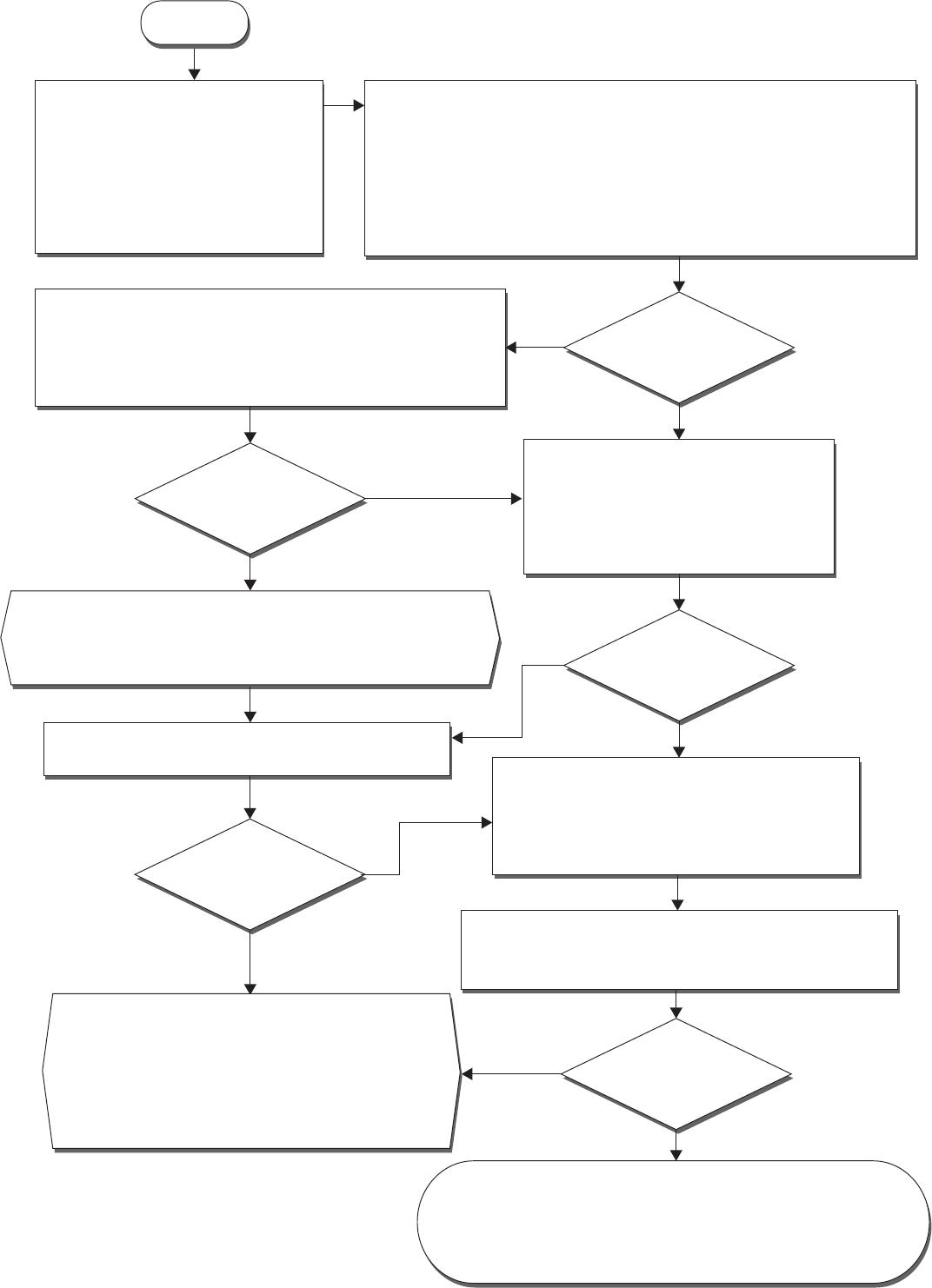
71Keston Combi - Installation and Servicing
No
No
Yes
No
No
Yes
Yes
Yes
Yes
No
Is
CO level less
than 350ppm AND CO/CO2
ratio less than
0.0040?
Turn off Appliance and Call Ideal Technical Helpline
The appliance must not be commissioned until problems
are identified and resolved. If commissioning cannot be
fully completed, the appliance must be disconnected from
the gas supply in accordance with GS(I&U)R. NOTE:
Check and record CO level and combustion ratio at both
maximum AND minimum rate before contacting Ideal.
Is
CO level less
than 350ppm AND CO/CO2
ratio less than
0.0040?
Set Boiler to Maximum Gas Rate
In accordance with boiler instructions,
set boiler to operate at maximum rate
(full load condition). Allow sufficient
time for combustion to stabilise.
Note. Do not insert analyser probe
during this period to avoid possible
flooding of sensor.
Check CO level and Combustion Ratio
at Maximum Gas Rate
With boiler still set at maximum gas rate,
insert analyser probe into flue gas
sampling point. Allow readings to stabilise
before recording.
Set Boiler to Minimum Gas Rate
(*see opposite page)
In accordance with boiler instructions, set boiler to
operate at minimum rate (to minimum load condition).
Allow sufficient time for combustion to stabilise.
Verify Flue Integrity
Analyser readings indicate that combustion products and inlet air
must be mixing. Further investigation of the flue is therefore required.
Check that flue components are assembled, fixed and supported as
per instructions. Check that flue and flue terminal are not obstructed.
Check that no seals, e.g. Those on flue extensions, have
been displaced during installation. Rectify if necessary.
Turn off appliance and call Ideal Technical Helpline for advice
The appliance must not be commissioned until problems are identified
and resolved. If commissioning cannot be fully completed, the appliance
must be disconnected from the gas supply in accordance with GSIUR.
Carry Out Flue Integrity Check Using Analyser
Insert analyser probe into air inlet test point (where available) and allow
readings to stabilise.
Note. Where no air inlet test point is provided then a flue integrity check with
the analyser is not possible. The installer should verify that flue integrity has
been visually checked in accordance with the “Prior to CO level and
combustion ratio check” (see opposite page) before proceeding to the
“check CO level and combustion ratio at maximum rate” stage below.
Is
O2 more than or
equal to 20.6% OR CO2
less than or equal to
0.2%?
Is
CO level less
than 350ppm AND CO/CO2
ratio less than
0.0040?
Is
O2 more than or
equal to 20.6% OR CO2
less than or equal to
0.2%?
Boiler is Operating Satisfactorily
No further actions required.
Ensure test points are capped, boiler case is correctly replaced and all
other commissioning procedures are completed. Complete Benchmark
Checklist, recording CO and combustion ratio readings as required.
Check CO and Combustion Ratio at Minimum Gas Rate
With boiler set at minimum rate, insert analyser probe into flue
gas sampling point. Allow readings to stabilise before recording.
Start

February 2014 UIN 207895 A03
Keston pursues a policy of continuing improvement
in the design and performance of its products.
The right is therefore reserved to vary specication without notice.
Keston Heating, PO Box 103, National Avenue, Kingston Upon Hull, HU5 4JN
Tel. +44 (0) 1482 443005 Fax. +44 (0) 1482 467133. www.keston.co.uk